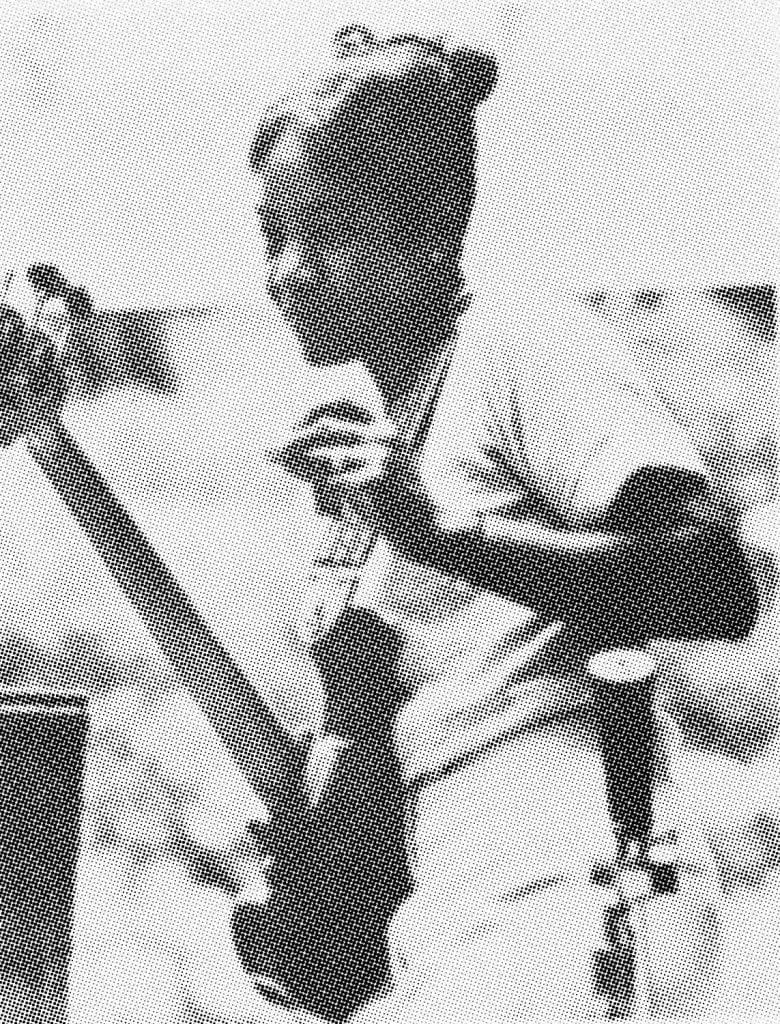
In February 2019, we published “50 Historic Black Women Guitarists and Bassists You Needs to Know” to showcase the influences that Black and Afro-identifying women musicians have had on music history. Since then, we’ve been consistently updating this list because we should constantly be celebrating the innovation, resilience, and talent of Black music communities.
For this particular list, we choose to focus on Black women guitarists and bassists whose careers started prior to 1999 to specifically showcase the legends—many of whom have unfortunately been overlooked, dismissed, or forgotten—who should be recognized as pillars of music history.
This list is not to be brushed off as just another list. Rather, it should be treated as a step taken towards exposing the truth. It’s for all of us who can’t count the names of Black women guitarists on one hand. It’s for the young Black girls aspiring to be musicians but seldom see a history that represents them. It’s to learn about our past and evolve into our future—and without Black history, we cannot accurately do so.
Below are 100 women—some of which you’ve heard about countless times, such as Sister Rosetta Tharpe, Elizabeth Cotten, and Barbara Lynn. Others were found in liner notes, vintage photos without names, and obscure websites deep within the internet. With your help, we hope this list can continue to grow. If you have names, videos, or pictures, please leave them in the comments below. And if you feel so inclined, please share this article and help distribute the names and lives of these incredible women.
Sister Rosetta Tharpe (1915 – 1973) is often referred to as the “original soul sister” and “the mother of rock and roll” for too many good reasons to display at once. Among others, Tharpe was among the very first recording guitarists to incorporate heavy distortion on her tracks. Not only did Tharpe influence many recognizable names such as Elvis Presley, Chuck Berry, Johnny Cash, Bob Dylan and Eric Clapton, but her unique style and ability to merge genres gave her an instrumental role in pushing music forward. In 1945, Tharpe’s single, “Strange Things Happening Every Day,” was the first gospel song to cross into popular music, reaching #2 on the Billboard charts.
Even before Sister Rosetta Tharpe, it was guitarist/bassist/vocalist Memphis Minnie (1897 – 1973), born Lizzie Douglas, who picked up the torch to keep African American popular music raw and relevant between the 1920s and 1950s. Although more recognized for her impeccable voice, Memphis Minnie’s music helped shape the sound of modern pop music. Below are her best known tracks influenced by her original songs:
Memphis Minnie: 1929 “When the Levee Breaks”
Made famous by: Led Zeppelin
Memphis Minnie: 1930 “Bumble Bee” Made famous by: Muddy Waters
Memphis Minnie: “What’s the Matter with the Mill”
Made famous by: Bob Wills and the Texas Playboys
In 2016, She Shreds had the honor of speaking with blues guitar picking queen Beverly “Guitar” Watkins (1939 – 2019), who began her career as the guitarist for Piano Red in 1959. Despite a long and self-described extremely difficult musical path, Watkins desired nothing more than to continue playing, writing, and performing.
She Shreds: Who introduced you to the blues?
Beverly Watkins: Well, it was born in me, from my ancestors. I had a granddaddy who was a banjo player. And then I had four aunties, called the Hayes Sisters—Aunt B., Aunt Ruth, Aunt Nell, and Aunt Margaret. They had a group back in them days and they would go to different churches down in Commerce and they would dress alike. Aunt B. played guitar, Aunt Ruth and Aunt Nell sang, and Aunt Margaret played piano. And my daddy, Lonnie Watkins, played the harmonica.
Peggy Jones (1940 – 2015), later known as Lady Bo, was an innovative and expressive guitarist. She was an original part of Bo Diddley’s sound from 1957 to 1962 and influential in her own songwriting and musical endeavors thereafter. Jones always displayed an enthusiastic willingness to experiment with guitars, effects, and sounds. Her enthusiasm for new guitar technologies helped balance out Diddley’s reliance on the cigar box guitar that made him famous, and allowed the band to evolve sonically over the course of time. Though she typically favored Gibson guitars, Lady Bo also played more experimental instruments such as the Roland guitar synthesizer and used their unique sounds in ways not often heard in rhythm and blues guitar.
Jessie Mae Hemphill (1923 – 2016) was truly a great example of the “one woman band,” often performing live with a guitar and tambourine at once. Although guitar was Hemphill’s instrument of choice since age 7, she was also a skilled drummer and percussionist. Hemphill, whose mother, father, and three sisters were all musicians, would go on to be internationally recognized for her unique talent and technique.

Born in Manhattan, Carline Ray (1925 – 2013) was an award-winning guitarist/bassist/pianist/singer who studied at Juilliard and earned her Master’s in composition. In 1946, Ray joined The International Sweethearts of Rhythm, the “all girl jazz band” known best for being the first and arguably most important all-women contribution to the big band era. Her seven decade career spanned a variety of genres, often switching from various instruments. According to her daughter, Catherine Russell, Ray “always made a point of saying she wasn’t a female musician, she was a musician who happened to be female.” We couldn’t stand by her statement more.
Odetta Holmes aka “Odetta” (1930 – 2008) is often referred to as “The Voice of the Civil Rights Movement” for her immense capability to reflect the passion and emotion of her community through works of jazz, folk, blues and beyond. As a result, she influenced some of the greatest names of the folk revival movement: Bob Dylan, Joan Baez and Janis Joplin all site Odetta as a major influence on their decision to sing and write they way they did. According to Time magazine, Rosa Parks was her #1 fan, and Martin Luther King Jr. called her “the queen of American folk music.” Bob Dylan was quoted saying, “The first thing that turned me on to folk singing was Odetta… I went out and traded my electric guitar and amplifier for an acoustical guitar.” Baez mentions that “Odetta was a goddess. Her passion moved me. I learned everything she sang.”
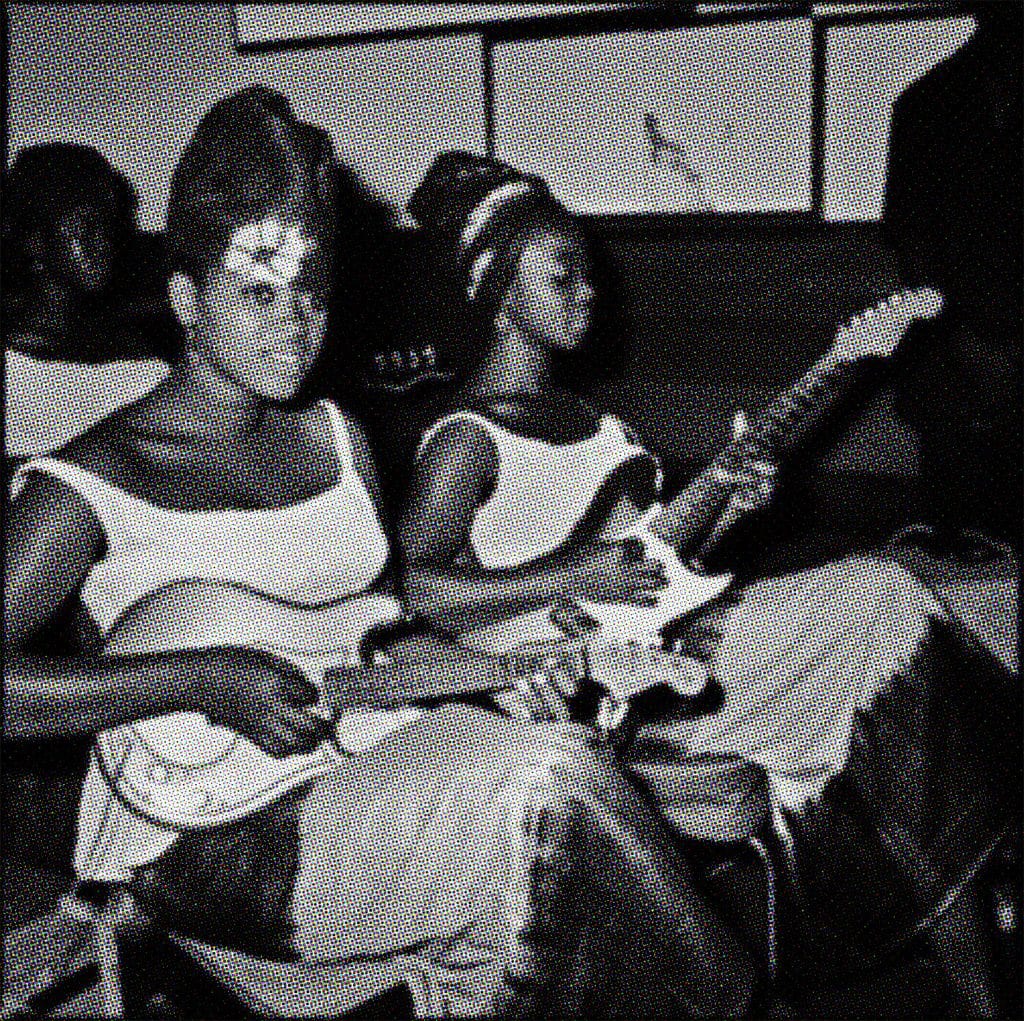
An image of these unknown women was taken by Roger da Silva for a series of photos taken between 1953 – 1969 meant to present a historical portrait of Senegal. As far as we know, the names and whereabouts of these women are unknown. The exhibit was featured and presented by XARITUFOTO—a nonprofit in Dakar with a mission to preserve African art as well as The Intensive Art Magazine (IAM)—”one of the first publications that focused exclusively on female African art, fashion, and design.”
Sylvia Vanderpool aka Sylvia Robinson is considered “The Mother of Hip-Hop” for being a record producer, record label executive, and founder/CEO of Sugar Hill Records—the label that produced hip hop’s very first top 40 single, “Rappers Delight,” by Sugarhill Gang. However, before becoming the mother of hip hop, Robinson obtained her production, writing, and managing skills as the guitarist and co-writer in Mickey and Sylvia, the duo who sold over 1 million records for their single “Love Is Strange” in 1957. But it doesn’t end there. In 1972, after being rejected by numerous outlets, Robinson recorded her debut solo album on her own, “Pillow Talk,” which became #1 on the R&B chart and crossing over to #3 on Billboard’s Top Hot 100.
Check out our 2019 article, “Sylvia Robinson’s Legacy as ‘The Mother of Hip Hop‘” for more information about the influence of Sylvia Robinson.
Born Etta Lucille Reid (1913 – 2016), Etta Baker was a playing legend of the Piedmont blues for 90 years. Picking up her first guitar at the age of three, Baker’s father Boone Reid taught her how to play a six-string guitar, 12-string guitar, and five-string banjo. Her discography spans from 1956 – 2015, and even while birthing and raising nine kids, Baker was known to never once give up playing the Piedmont Blues.
Algia Mae Hinton (1929 – 2018) was born in Johnston County, North Carolina and learned to play the guitar at nine years old. She was taught by her mother, who was an expert guitarist and singer, often seen performing at community gatherings. Her father was a dancer and taught her buck dancing and two step. Hinton was best recognized for her ability to merge buck dancing and Piedmont fingerpicking, often playing behind her head (as shown above) as she danced—a true pro. (Video Credit: Dust To Digital)
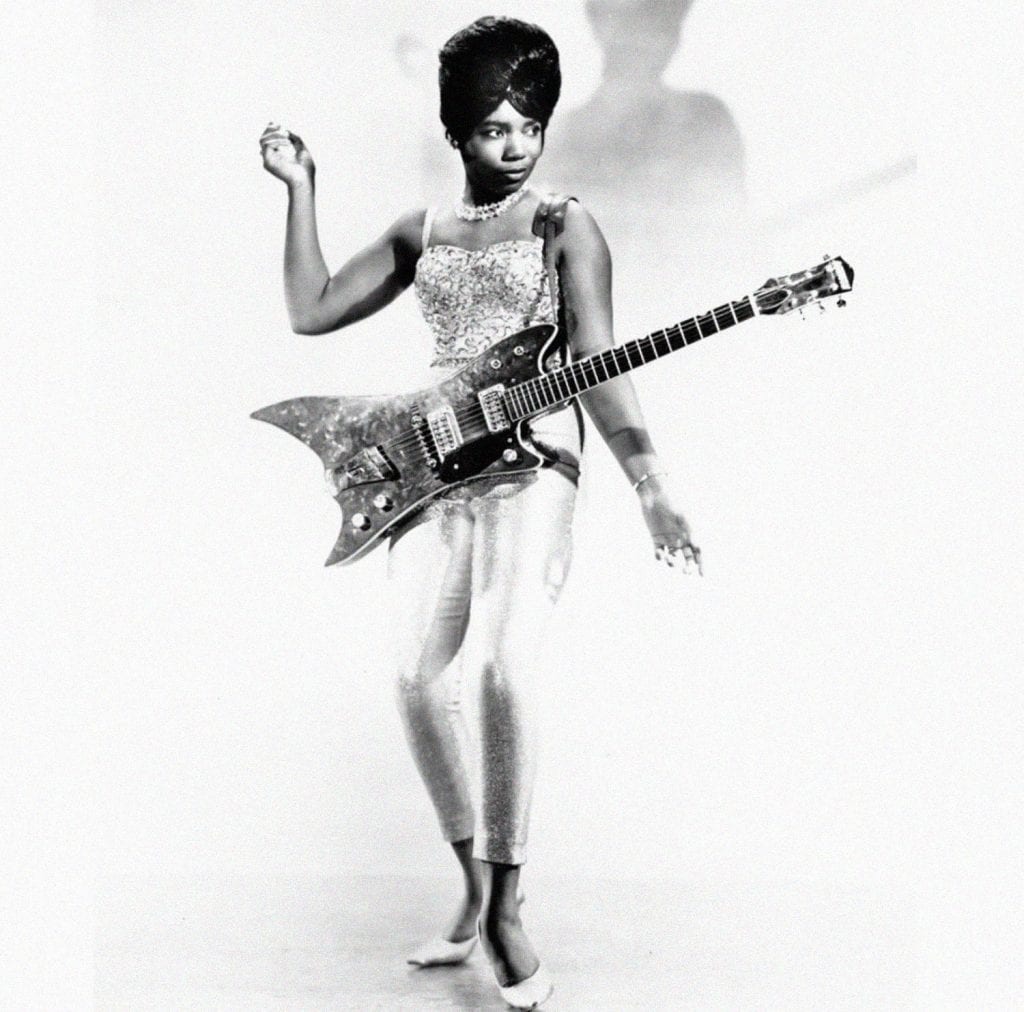
Norma Jean Wofford aka The Duchess (1938 – 2005) was the second guitarist in Bo Diddley’s band between 1962 and 1966. With her Gretsch Jupiter Thunderbird, she performed back up vocals, danced, and played rhythm guitar alongside Bo Diddley until calling it quits in 1966 to pursue raising a family.
Elizabeth Cotten (1893 – 1987) is the true definition of innovation. Born in in Chapel Hill, North Carolina, Cotten began teaching herself to play banjo at the age of eight. As a teenager and domestic worker, Cotten saved up $3.75 for a Sears guitar and began teaching herself to play left-handed. What resulted was her very own signature technique: she would take the right-handed guitar and turn it upside down, playing the bass lines with her fingers and the melody with her thumb—a technique known now as “Cotten Picking.” Her most recognized song is “Freight Train.”
While there’s not very much information on Linda Martell (born Thelma Bynem in 1941), she was an American Country singer and guitarist. She became the first African American woman to perform at the Grand Ole Opry, but soon thereafter abandoned her career to raise a family.
Little information floats around the internet about Cora Fluker. Born in Livingston, Alabama around 1920, she grew up sharecropping with her family and was nearly beaten to death after trying to run away at the age of nine. It seems that shortly thereafter, Fluker’s life took a shift into a deep dedication to preaching. As a young girl, she built her own guitar and began writing and singing songs in the church. Fluker performed in churches and at the occasional festival until her death. You can now hear some of her songs on Spotify.
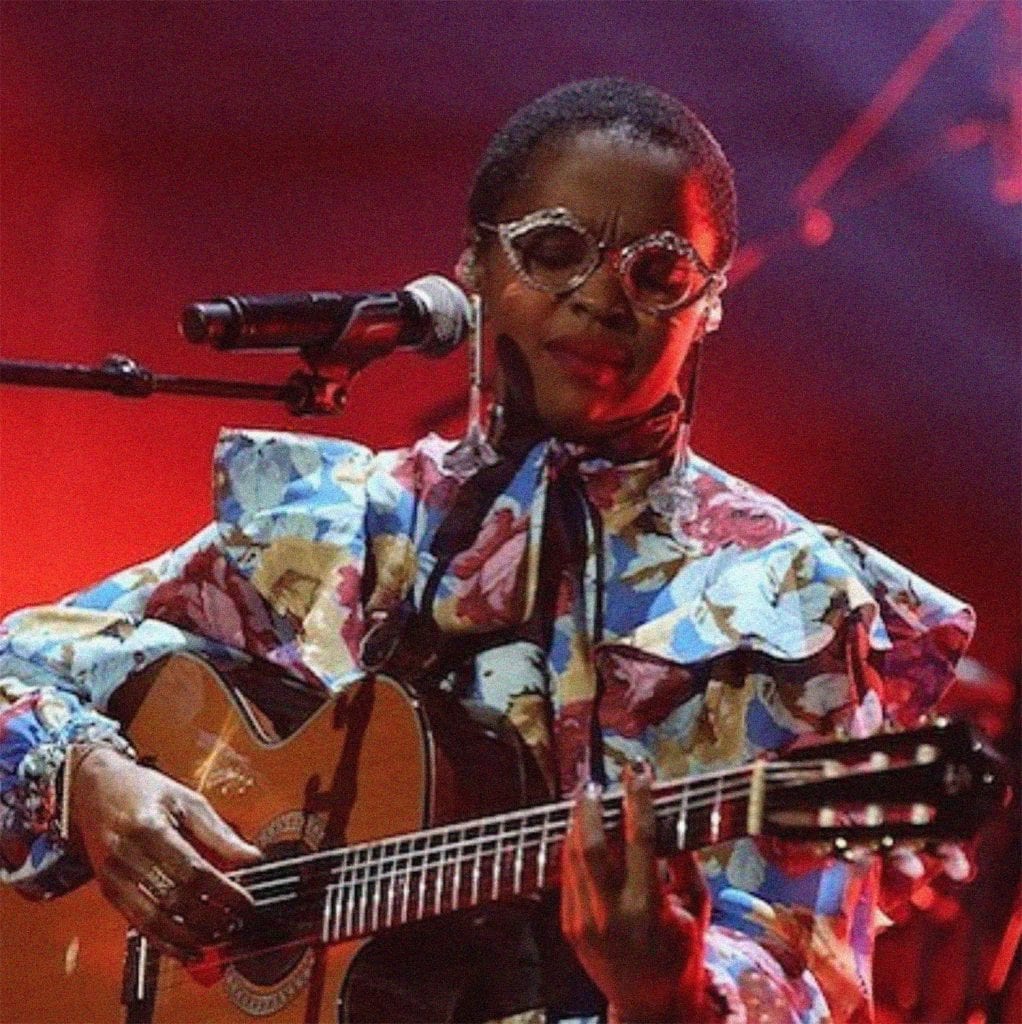
You might know Lauryn Hill from the Fugees and her award-winning solo album, The Miseducation of Lauryn Hill—but do you know what Lauryn Hill does live? She composes, she conducts her band, she sings and raps, and she plays an extremely fierce nylon guitar all at the same time.
“Born 25 September 1910, Como, Mississippi, USA, d. 22 October 1968, Senatobia, Mississippi, USA. The daughter of Sid Hemphill, Rosa Lee Hill grew up in a musical family, playing a broad repertoire for both whites and blacks. Her recordings are confined to blues, which she sang ‘from my mouth, and not from the heart’, feeling them to be incompatible with her religious faith. Her blues are typical of Panola County, where she spent her whole life: accompanied by a droning guitar, her songs have an inward-looking, brooding feel, comparable to those of Mississippi Fred McDowell. Hill and her husband were sharecroppers and lived in dire poverty, particularly towards the end of their lives, when their house burned down and they had to move into a tumbledown shack.” (Caption Cred: allmusic.com)
Joan Armatrading was born in Basseterre, Saint Kitts Britain on December 9th, 1950. Her recording career spans 40 years and she began as a self taught guitarist at the age of 14. At 15, after dropping out of school to support her family, she lost her first job after taking her guitar to work and playing it during tea breaks. She would later become a world-renowned singer songwriter/guitarist nominated for three Grammy Awards, 2 Brit Awards, and receive an Ivor Novello Award for Outstanding Contemporary Song Collection.
For more information, check out our 2020 feature, “The Righteousness of Joan Armatrading.”
Born Barbara Lynn Ozen in Beaumont, Texas on January 16, 1942, Lynn is known as the “Lefty Queen of R&B” for being a lefty guitarist and expert R&B composer. She first began playing the piano as a youngster before switching to guitar. Still a teenager, Lynn began performing at local clubs after winning many high school talent shows, and soon was recognized by singer Joe Barry. Shortly after, Lynn headed to New Orleans to cut her first 12-song LP, comprised of 10 original songs (unusual for an African American woman at the time), including the most well known of them all, “You’ll Lose A Good Thing.” She toured with the likes of Stevie Wonder, Smokey Robinson, Sam Cooke, James Brown, Al Green, Carla Marvin Gaye, the Temptations, and B.B. King, and was covered by the Rolling Stones and Ottis Redding. In the 1970s, Lynn retired to take care of her family after not being satisfied with how she was represented by her label, Atlantic Records. Twenty years later, she began writing and touring, and continues to do so to this day.
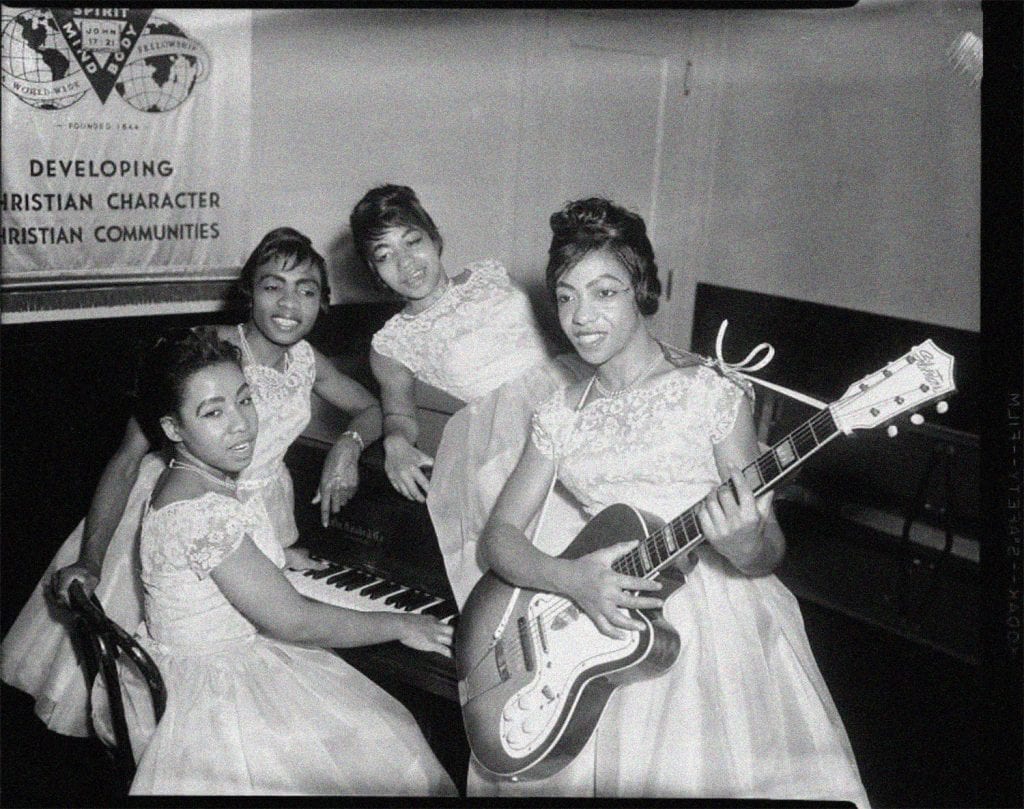
One of the many images that speak to the prominence of Black women instrumentalists unsung. PS: That Silvertone guitar though.
Gail Anne Dorsey is a longtime musician best known for her work as the bassist for David Bowie between 1995 until his death in 2016, as well as her songwriting, bass, and touring work with Tears for Fears from 1993 to 1996. Dorsey’s career is long and packed, but it all started with a guitar at the age of nine. Although she picked up the bass at 14, she didn’t consider herself a bassist until the age of 20, which then became her main instrument as a solo and session player. Among many other accomplishments, Dorsey has recorded, performed, and written with the likes of Lenny Kravitz, Bryan Ferry, Boy George, the Indigo Girls, Gwen Stefani, Charlie Watts, Seal, Gang of Four, and many more.
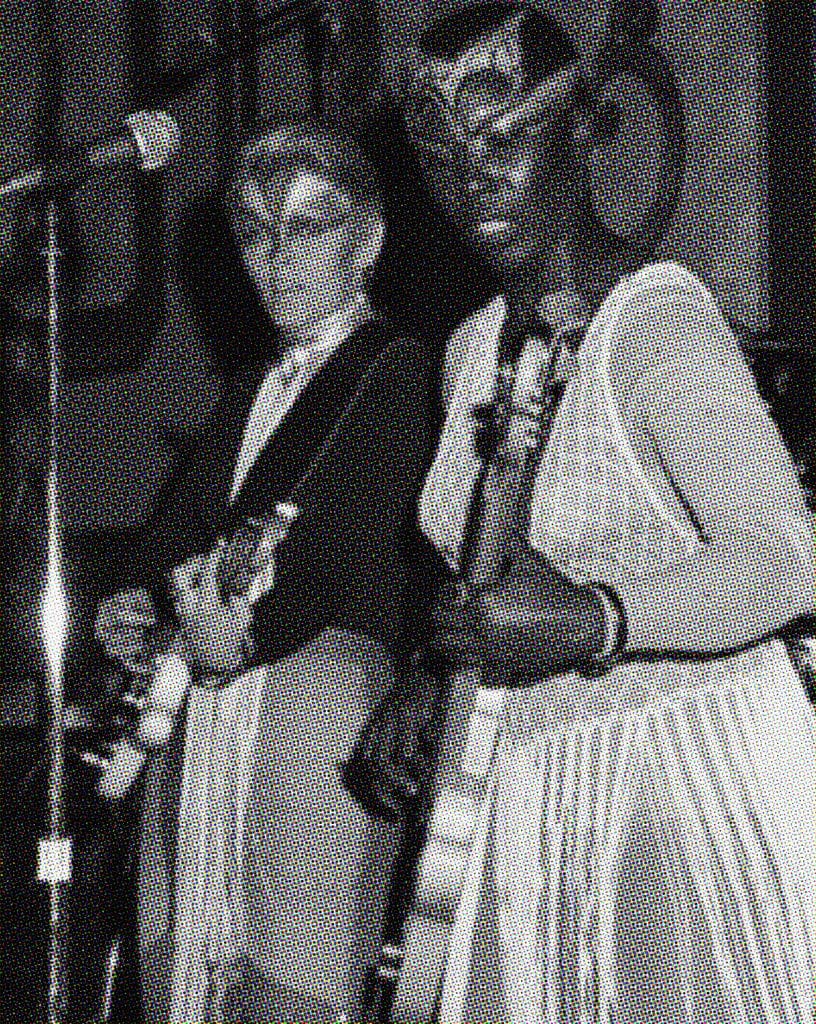
Stella Bass was a member of the horn rock band IsIs, named after the Egyptian Goddess. (Horn rock was a genre that developed in the late 1960s fusing jazz, improve, funk, rock and blues.) IsIs was the fifth all-women band to sign to a major label, and one of the few (if not only) signed to a major label at the time with an openly gay woman. It’s tough to find info on Stella herself and the career she led before and after the band; however, IsIs was a legendary band for their time—opening for the likes of Kiss, Lynyrd Skynyrd, and The Beach Boys.
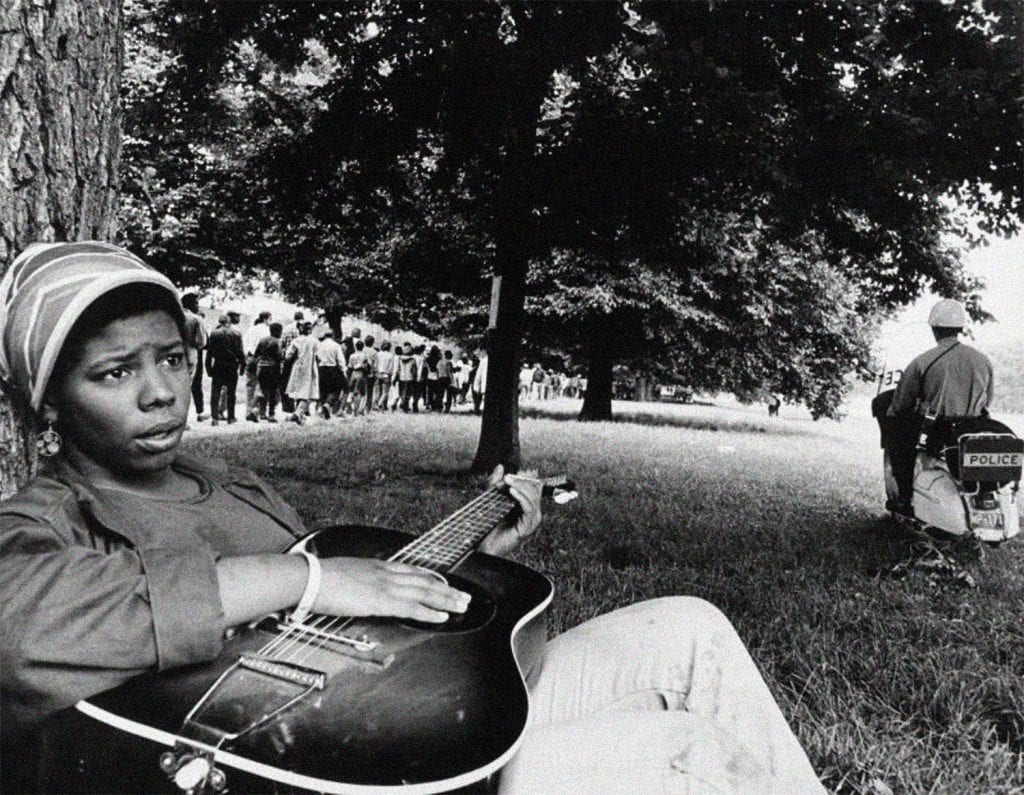
Taken during the Civil Rights Movement .
Born in Louisa County, Virginia (1908 – 1990), Flora Molton was a gospel singing slide guitarist who made a name for herself busking on the corner of 7th Street NW and F Street NW streets in Washington, DC. Due to being born partially blind, she was often unable to find employment and therefore continued busking, performing at local venues and even toured Europe until just a few months before her death at 82 years old. Morton wrote what she called “spiritual and truth music,” and according to a plaque dedicated to her in Louisa County, she picked up the slide guitar by seeing it played with a knife at a community party—a technique she adopted herself later on.
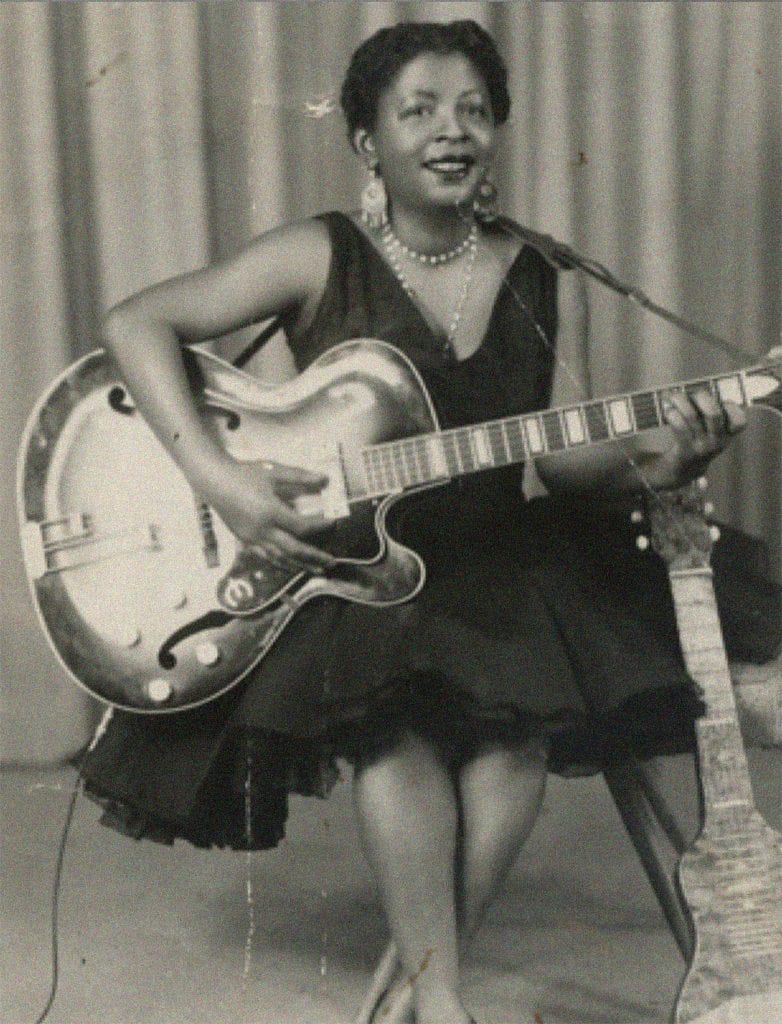
Willa Mae Buckner (1922 – 2000) is truly one of the most fascinating stories we’ve encountered yet. Born in Augusta, Georgia, Buckner was a fearless woman who taught herself piano at age 21 and picked up the guitar at 35. She was known for many different lives: she knew seven languages, traveled with her own circus/snake show, was a guitar slinging burlesque dancer, and “settled down” by owning 28 snakes at the end of her life. From an interview in Living Blues Magazine, April 1993: “I sang just regular kind of blues that they were singing out there. I used to do risqué, dirty songs. I started playing piano when I was 21, then I switched over to guitar when I was about 35. There was three of us. We used to get together with our instruments. One of us played Hawaiian guitar, the other one played straight.”
“Precious Bryant was born on January 4, 1942, in Talbot County, the third of nine children, and was a country blues singer and finger style guitarist of the Piedmont Tradition. As a young girl she sang with her sisters in their Baptist church. Her family was musical, and she learned to play guitar at a very early age, becoming proficient by age nine. Her father then taught her to play bottleneck guitar, and eventually her uncle and mentor, blues musician George Henry Bussey, presented her with an instrument of her own, a Silvertone from Sears and Roebuck. Bryant dropped out of high school in the eleventh grade and in 1965 got married. She soon began performing whenever possible, accepting tips in her guitar. Bryant’s repertoire evolved from traditional songs to include original arrangements and compositions.” (Caption Credit: Terminus Records)
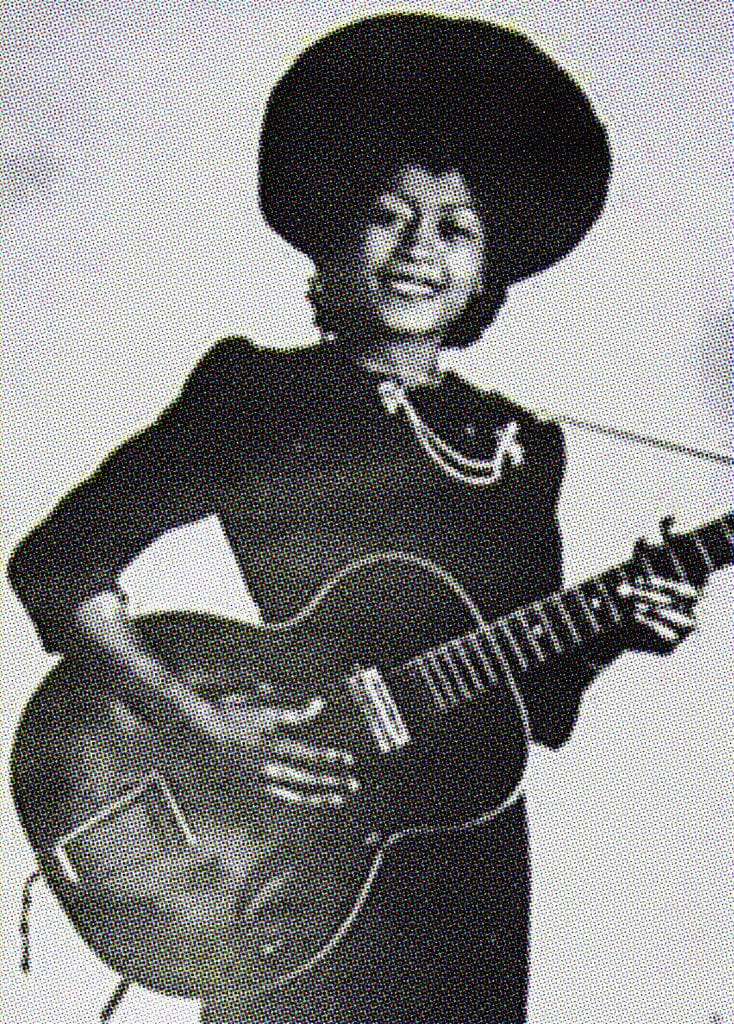
Marylin Scott/Mary Deloach had two stage names: the former for her gospel church recordings, and the latter for her R&B arrangements—the two genres generally steering clear for one another in the 1950s. Although composing under similar genres and gaining similar notoriety as Sister Rosetta Tharpe at the time, little is known about Marylin Scott besides having a recording career between 1943 – 1953, in which she recorded guitars and vocals in blues and gospel style.
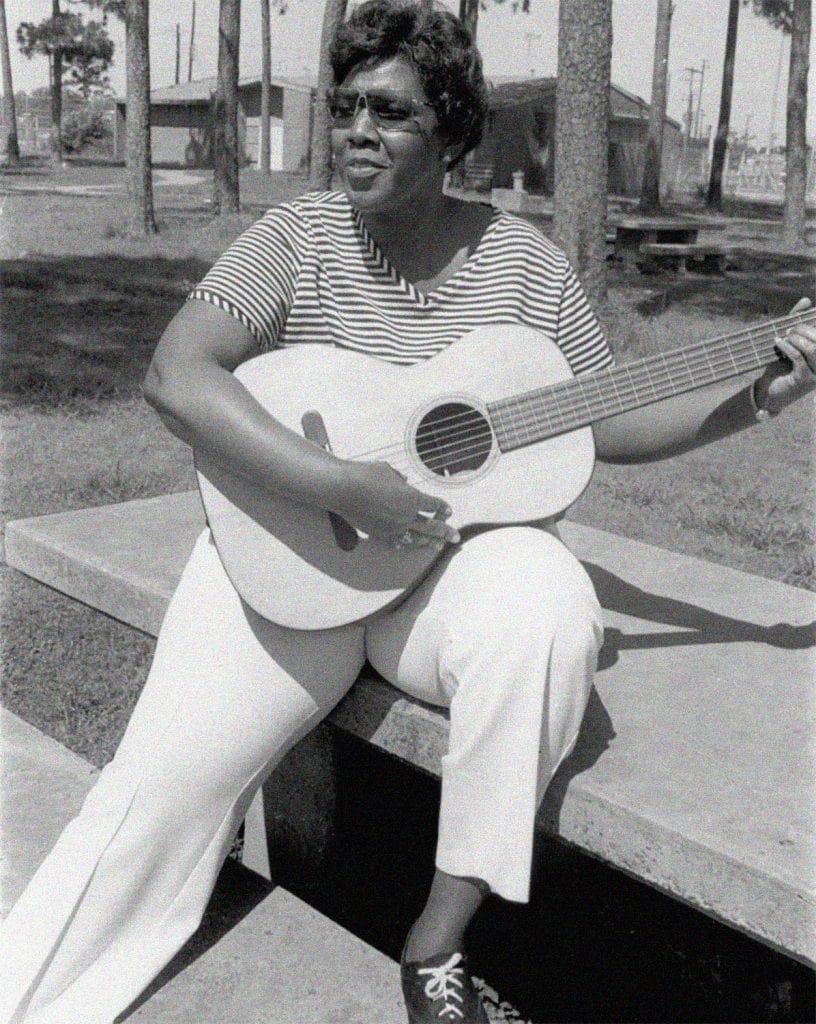
Born in Houston, Texas Barbara Jordan (1936 – 1996) was an incredible leader of the Civil Rights Movement, a politician, and an educator who enjoyed playing guitar as a hobby. Despite facing segregation laws and attitudes in all facets of her career, Jordan maintained the first in many categories, including being the first Black politician elected to the Texas Senate since 1883, and the first Black Southern woman elected to the US House of Representatives—the first woman in her own right to represent Texas in the House.
Sister O.M. Terrell, born Ola Mae Terrell (1911 – 2006), was an Atlanta native who experienced a salvation experience at age 11 while attending a Holiness Movement tent revival. By the Great Depression, she had become a blues-minded street musician who used her talents to evangelize passers-by, singing original compositions such as “God’s Little Birds.”
Tracy Chapman is one of the most recognizable voices of contemporary folk pop, with hits so memorable that her lyrics remain in the lexicon of anyone who lived through the late 1980s and 1990s. At a time when hair metal and synth-pop dominated the airwaves, Chapman brought the minimalist traditions of the singer-songwriter to the Bush era, offering an unfiltered and sobering social critique that resonated around the world. Chapman is often credited with having revived the singer-songwriter style in mainstream music all together, paving the way for a long string of folk singers who gained mainstream success throughout the 1990s.
Signed to Elektra Records in 1987, her self-titled debut album in 1988 sold over 20 million records worldwide. A long time anti-apartheid activist, she was invited to perform her hit “Fast Car” at Nelson Mandela’s 70th birthday tribute, which raised money for children’s’ causes and for South Africa’s Anti-Apartheid Movement. In addition to multi-platinum record sales, Grammy Awards, and her history of social activism, Chapman’s mainstream visibility as a queer woman of color in the 1980s and 1990s can not be overlooked as a significant legacy. From all of us to Tracy—THANK YOU!!
Bea Booze (1912 – 1986), often referred to as “Wee Bea Booze,” was an R&B and jazz singer popular in the 1940s for her interpretation of Ma Rainey’s song “See See Rider Blues,” which went to number one in 1943 on the US Billboard R&B Chart. Immersed in the rich musical culture of Harlem, she channeled the influences of singers such as Lil Green while recording for Decca Records. “See See Rider Blues” has continued to take on a life of its own, becoming a staple of blues performers such as Ella Fitzgerald, LaVern Baker, and Lead Belly, eventually picked up by many white performers such as Peggy Lee, Elvis, Janis Joplin, Bruce Springsteen, and the Grateful Dead.
Both a young legend and an active contemporary artist, Meshell Ndegeocello’s debut album, Plantation Lullabies, was released in 1993 and is credited with helping ignite the neo-soul movement of the 1990s. A bassist, songwriter, and rapper, her career has featured collaborations and recordings with Chaka Khan, Herbie Hancock, Madonna, John Mellencamp, The Rolling Stones, Basement Jaxx, Alanis Morrissette, Zap Mama, and Ibeyi, to name a few. Part of Ndegeocello’s legacy is her reverence to other former legends, having recorded a full album in tribute to Nina Simone in 2012, as well as having created a theatrical production in homage to James Baldwin’s book, The Fire Next Time. The musical, Can I Get a Witness? The Gospel of James Baldwin, debuted in 2016 and featured fellow guitarist and #43 on this list, Toshi Reagon.
Felicia Collins is best known as the lead guitarist for the house band on Late Night With David Letterman, known as the CBS Orchestra. Also a vocalist and percussionist, she has toured and recorded since the 1980s with artists such as Nile Rodgers, Al Jarreau, Cyndi Lauper, Madonna, Vonda Shepard, George Clinton, P-Funk, and the Thompson Twins. In 2018, Collins performed at the Rock and Roll Hall of Fame induction of Sister Rosetta Tharpe, appearing onstage with Brittany Howard, Questlove, and Paul Shaffer. Previously, she had provided guitar for Marie and Rosetta, a theatrical production about the lives of Sister Rosetta Tharpe and gospel singer Marie Knight.
Deborah Coleman (1956 – 2018) was a lead blues guitarist and singer-songwriter born in Virginia. Raised in a musical family, she picked up the guitar at age eight and went on to play in various rock and R&B bands when she was 15. In 1993, Coleman took first place at the Charleston Blues Festival’s National Amateur Talent Search. As a result, she was able to record her debut album, Talkin’ A Stand, which was released in 1994 with New Moon Records in North Carolina.
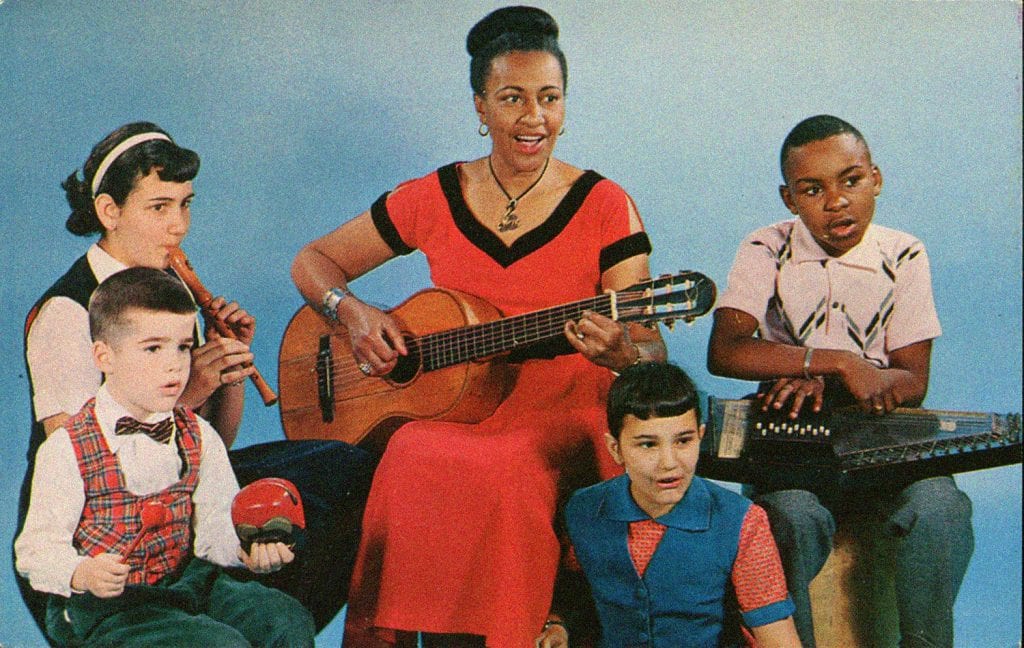
Charity Alberta Bailey (1904 – 1978) was a singer, educator, TV host, and pioneer in the field of children’s music. She wrote songbooks arranged on guitar and piano, and developed curriculums that used classical music and folk music from around the world to teach music to children. Bailey studied at Julliard and Dalcroze before becoming Director of Music at the Little Red School House in New York City.
The Thornton Sisters appeared on the Ted Mack Amateur Hour twice during the 1950s. Their dad enrolled the sisters into music lessons and soon after, they became regular performers on college campuses, often performing as the the backup instrumental group for R&B concerts. These performances were also a way for the family to save for medical school tuition for their daughters. The Thornton Sisters sound transitioned from jazz to R&B as the times changed.
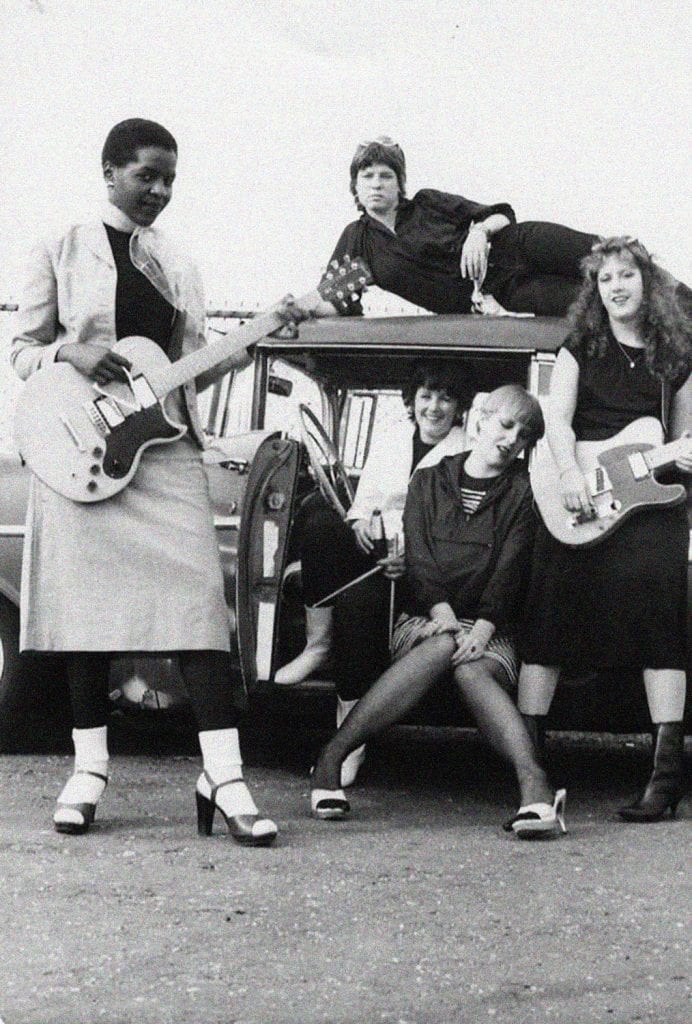
Joyce Rooks played guitar and vocals in rock band The Dinettes from 1979 – 1980. Right before, in 1978, she had been in the band The Cockpits (seen above), which eventually morphed into The Dinettes and had a few member changes.
Serifatu Oladunni Oduguwa, also known by her stagenames Queen Oladunni Decency and Mummy Juju, was one of the most popular musicians of the Yoruba jùjú genre (Nigerian popular music from traditional Yoruba percussion). Queen Oladunni Decency fronted the Unity Orchestra as a singer and guitarist.
Formed in 1979 in LA by producer/drummer Bernadette Cooper, Klymaxx was a R&B/Pop band whose members included Cheryl Cooley (guitar), Lynn Malsby (keyboard), Lorena Porter Shelby (vocals/bass), Joyce “Fenderella” Irby (vocals/bass), and Robbin Grider (guitar/synthesizers) in Klymaxx Their 1984 album, Meeting In the Ladies Room, went platinum in the United States.
Sarah McLawler (1926 – 2017) formed an all-women instrumental group, Sarah McLawler & The Syncoettes, in Chicago in the 1940s right before the rock ‘n’ roll era took off. The Syncoettes were a four piece, with McLawler (piano), Lula Roberts (saxophone), Hetty Roberts (drums), and Vi Wilson (bass). They became the house band for Chicago’s Club Savoy for a short time and released a handful of records during the 1950s.
The International Sweethearts of Rhythm was one of the first racially integrated all-women swing bands that gained popularity during the WWII era. The group toured extensively throughout the states and abroad with the USO, performing on the Armed Forces radio and playing top venues across the country. The Jim Crow laws, racism, and sexism made traveling dangerous and difficult for the band to be taken seriously as musicians. Carline Ray was a guitarist in the group and can be seen in the above video.
Janice-Marie Johnson was a founding member and the bassist/vocalist of the recording act A Taste of Honey, formed in 1971. The group’s main genre was disco with a few songs that were chart toppers in both R&B and pop, including “Boogie Oogie Oogie.” Johnson picked up the bass while she was in college and played shows with A Taste of Honey all along Southern California and on military bases. The group won a Grammy in 1978 for Best New Artist.
Toshi Reagon has been active as a folk, blues, R&B, country, gospel, rock, and funk musician since 1978. As a queer artist and activist, Reagan was raised by musician parents who were social activists during the civil rights movement and part of The Freedom Singers group. She has performed and shared stages with the likes of Lenny Kravitz, Elvis Costello, and Ani DiFranco. Reagon’s most recent musical endeavor was Parable of the Sower: The Opera, adapted from Octavia E. Butler’s post-apocalyptic novel of the same name.
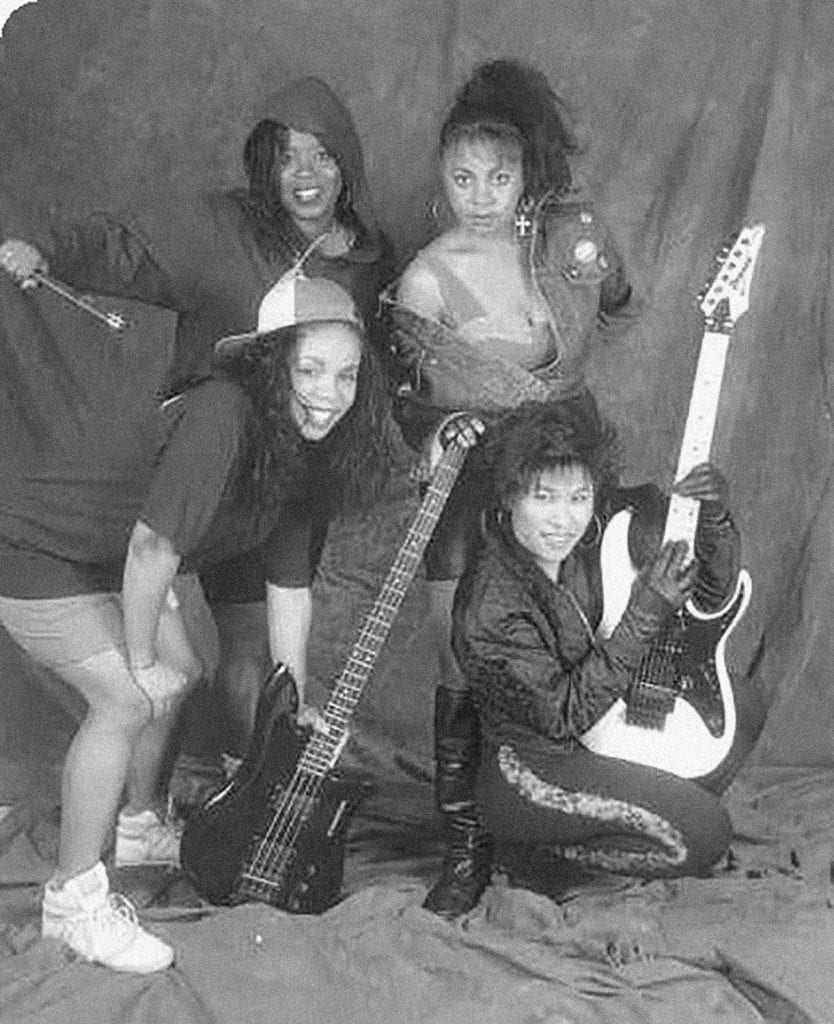
PMS (Pre-Metal Syndrome) was the first all-Black female metal band formed in the early 1990s by guitarist Suzanne Thomas. PMS defied what it means to be a Black woman performing heavy metal music in a scene that is often dominated by heteronormative, white cis males. PMS is featured in Laina Dawes 2012 book, What Are You Doing Here? A Black Woman’s Life and Liberation in Heavy Metal.
Considered the Queen of Ndebele (a language spoken by 1.6 million people in South Africa) music, and a national icon, Nothembi Mkhwebane is widely considered to have brought the Ndebele language to the world stage. A prolific multi-instrumentalist, Mkhwebane composes on guitar and traditional instruments, and her songs often feature uplifting hand claps, intricate guitar riffs, and music shakers.
Recommended listening: Zimani Balibalele (1998)
Hailing from South Africa, Tu Nokwe taught herself to play guitar as a young woman. She eventually landed a spot at the Manhattan School of Music and went on to perform around the world. Nokwe’s work has detectable funk and pop influences, but her adept guitar playing and soprano voice create a style that is uniquely her own.
Recommended listening: “African Child” (1999)
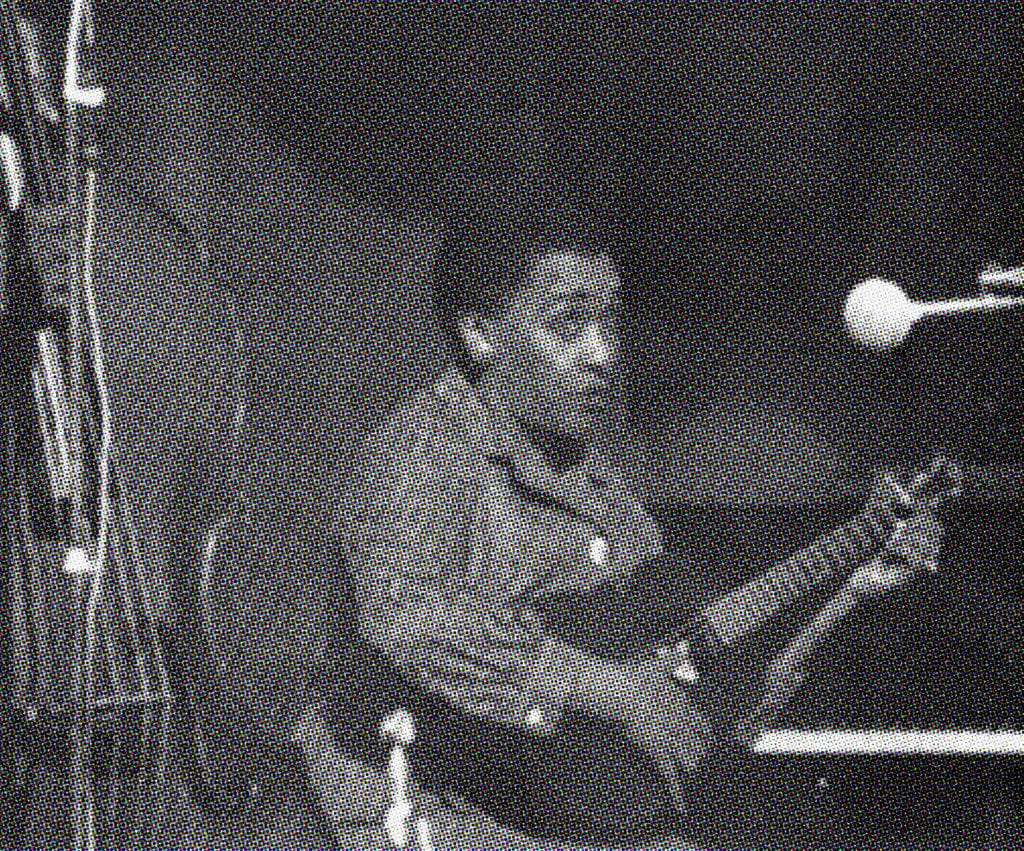
Born in Houston, TX, Victoria Spivey (1906 – 1976) was an American blues singer and songwriter whose career began in the family string band and later got into show business and Vaudeville theater. In 1951, Spivey decided to retire from show business, but just about a decade later, in 1962, she formed her own record company, Spivey Records, upon which she returned to recording and performing music.
Queen Sylvia Embry (1941 – 1992) was born in Arkansas. As a kid, she was trained on piano by her grandmother. By the time she was 19, Embry moved to Memphis, followed by Chicago, to pursue music. In Chicago she fell in love with the bass and started working with Lefty Dizz. She soon became known as one of Chicago’s leading blues bassists. By 1983, Queen Sylvia went out on her own and released her debut solo record, Midnight (Evidence).
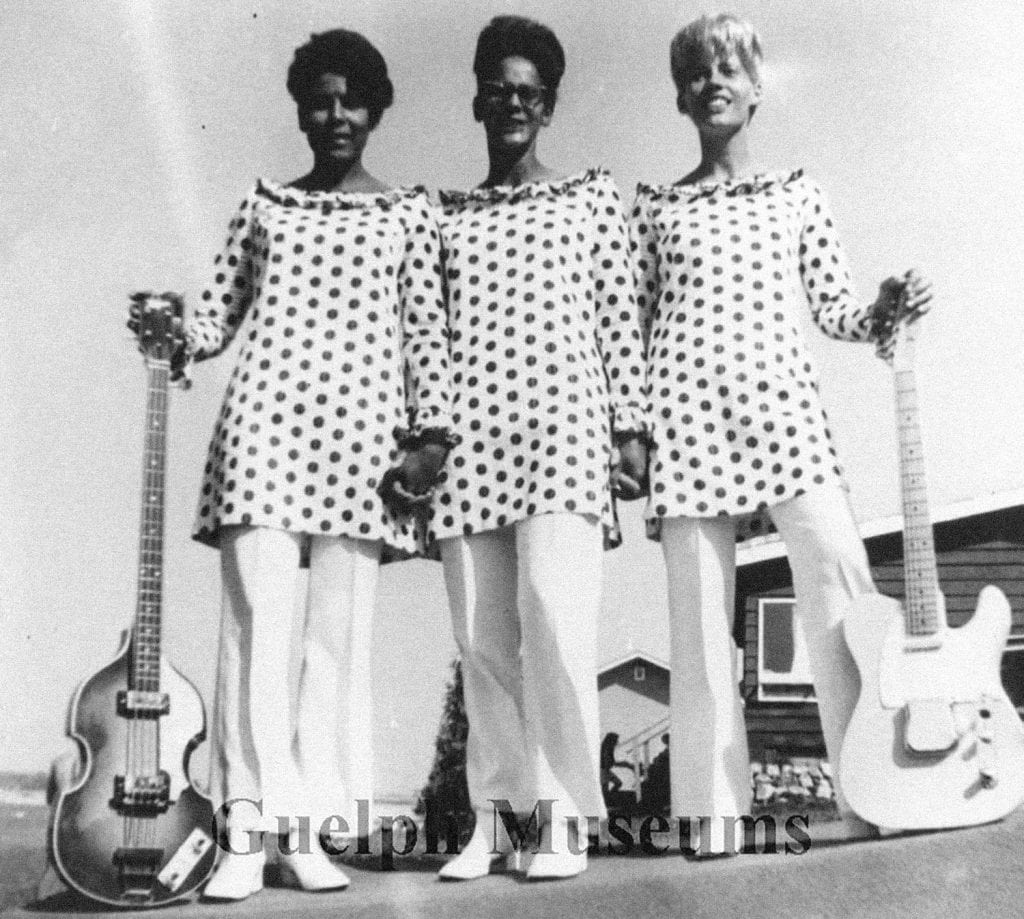
Melba Jewell (1934 – date unknown) and her sibling Pat formed the Fabulous PJs and released one album together while residing in Guelph, Ontario. The Jewell’s were one of many families local to the area that used their musical talents to combat racism and to empower the Black youth of the time.
Las Chicas Del Can was the first all-women merengue group from the Dominican Republic with a rotating cast of Dominican and Afro-Dominican singers and musicians throughout their career. Founded in 1981, they performed a number of hits throughout the 1980s, and a great number of their singles and albums achieved gold and/or platinum status. Las Chicas Del Can toured around the world and Europe, including Venezuela, Ecuador, Colombia, Peru, Puerto Rico, the United States, Holland, and more.
Tracy Wormworth began her career as the bassist for new wave band the Waitresses until their breakup in 1984. She went on to record and tour with the B52s, starting around 1990, and officially became a band member in 2017. Wormworth was once part of the house band on The Rosie O’Donnell Show, and she’s toured with Cyndi Lauper, Sting, Joan Osborne, and more.

Hailing from the South Bronx, ESG was formed by the Scroggins sisters in 1978. The iconic no-wave funk band wrote the most sampled song of all time, “UFO,” which has been referenced by everyone from Grime Mob, to Wu Tang Clan, to indie rockers Liars. Deborah and Renee Scroggins both played bass in different iterations of the band—starting out on vocals, Renee took over bass duties when Deborah left the band in 1987. Renee still performs as ESG, with her daughter Nicole and son Nicholas.
Read our feature with Renee Scroggins, “40 Years of Dancing: In Conversation with Renee Scroggins of ESG.”
“Here name is Rhonda and she is funky.” – Prince
Canadian bassist Rhonda Smith worked with Prince for almost a decade, having been introduced to him by world famous drummer Sheila E, whom Smith met while at a music convention in Germany. She’s also performed with Chaka Khan, Beyonce, Erykah Badu, Patti Labelle, Little Richard, George Clinton, and many more. In 2000, Smith released, Intellipop, marking her first album as a soloist, followed by RS2 in 2006.
Debra Killings has offered her vocals and bass playing to some of the most iconic artists of the 1990s, including TLC, Monica, and OutKast. In 2003, the Atlanta-born bassist released her debut solo album, a gospel LP entitled Surrender. She has also played bass for BET’s “Black Girls Rock” all-star band.
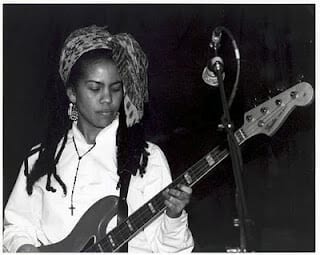
Originally from Newport, RI, Leslie Langston played bass in two of Tanya Donelly’s 1990s alternative rock bands, Throwing Muses and Belly. Langston’s driving bass and incredible tone was an asset in enhancing the shifting tempos of Donelly’s writing, adding an additional layer of spasmodic catchiness.
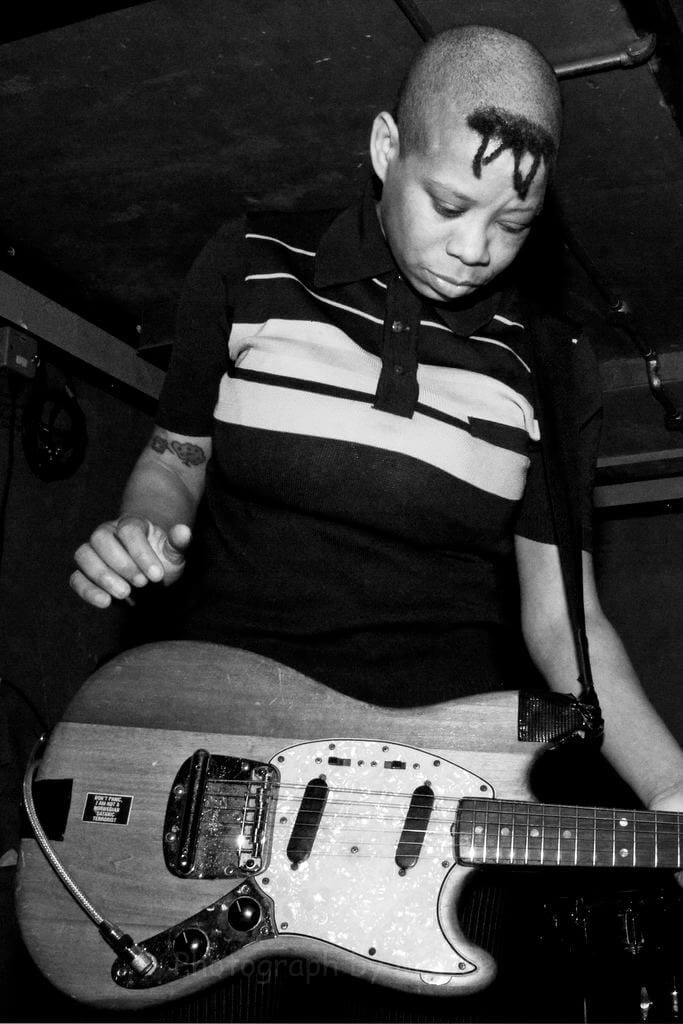
British guitarist and bass player Debbie Smith was in a variety of British rock bands in the 1990s, including Echobelly, Nightnurse, Snowpony, Bows, Ye Nuns, and SPC ECO. Today, she performs as a DJ and plays guitar with the bands Blindness and The London Dirthole Company.
Raised and trained in Philadelphia and New York, bassist Starr Cullars was the only woman musician in George Clinton & Parliament-Funkadelic. She was introduced to George Clinton by Prince, whom she had auditioned for, and toured with P-Funk for many years. She was also featured as a TV celebrity on VH1’s “Rock N Roll Fantasy Camp 2” and was called the “Queen of Rock” by Paul Stanley (of Kiss) and Mark Hudson (producer). Today, Cullars performs with her own groups, including the hard rock band The SCC.
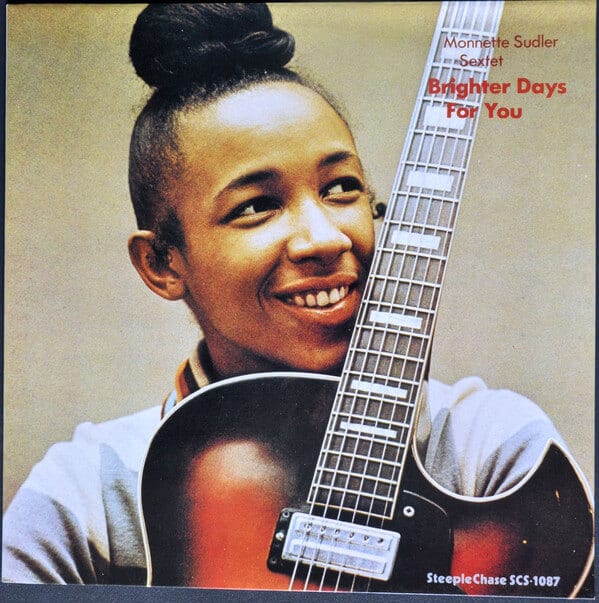
Jazz guitarist Monnette Sudler started playing when she was just 15 years old. Born in 1952 and raised in Philadelphia, she started taking lessons at the Wharton Center, and eventually went on to study at Berklee School of Music in the 1970s and at Temple University in the 1980s. Early in her career, she performed with Sounds of Liberation, a group who used their music to help spark social activism, with a tremendous impact on the African American and jazz community in Philadelphia. From 1977 through 2009, Sudler recorded eight jazz albums and has performed with a variety of musicians.
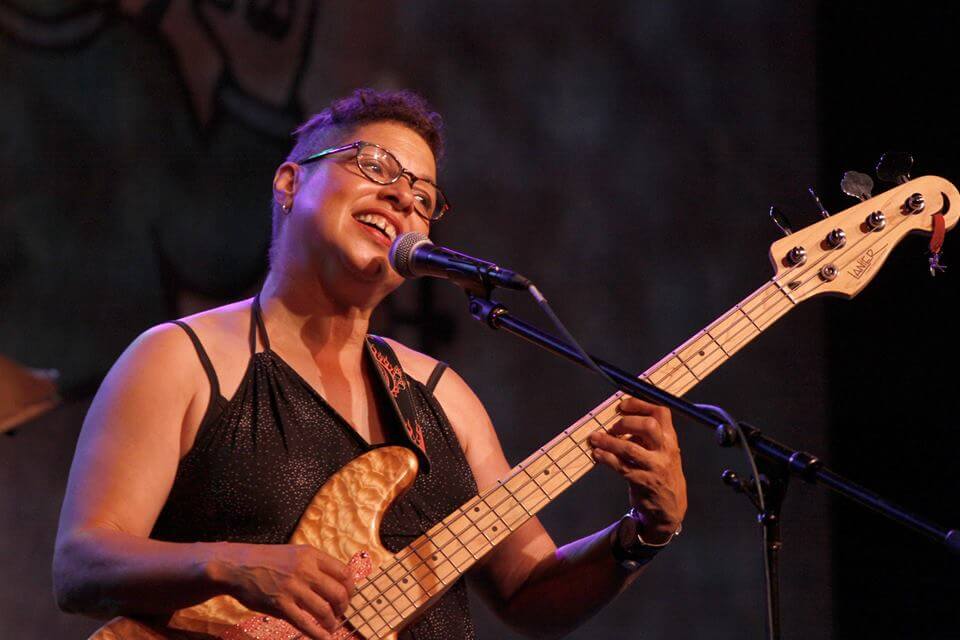
Known for her folk and Afro-Celtic songs, guitarist Laura Love did not find the path to a musical career easy. Born in Lincoln, Nebraska, her mother’s mental health took a devastating toll on her childhood, and her jazz musician father, Preston Love, was not present for much of her youth. Love began performing at 16 years, singing for prisoners at the Nebraska State Penitentiary. She eventually relocated to Seattle, WA, where she was a member of the 1980s rock groups Boom Boom G.I. and Venus Envy. She has released 12 albums since 1990, and in 2004 she published her memoir, You Ain’t Got No Easter Clothes, with an accompanying album of the same name.
R&B singer-songwriter India.Arie has won four Grammy Awards out of 23 nominations to date, including Best R&B Album in 2003 for Voyage to India. Since 2001, she’s released seven studio albums, and has written soulful, political-driven songs such as 2006’s “I Am Not My Hair” and 2016’s “Breathe,” which was inspired by Black Lives Matter and Eric Garner’s last words.
Blues guitarist and vocalist Valerie Turner is an incredible player and resource of Piedmont blues, a style characterized by fingerpicking with an alternating thumb bass string rhythmic pattern that supports a syncopated melody while the treble strings are generally picked with the fore-finger. Musicians such as Elizabeth Cotten, Memphis Minnie, and Etta Baker are known for playing in this style, and Turner and her husband often play as a duo called Piedmont Blūz. She has released two albums, authored and edited the book, Piedmont Style Country Blues Guitar Basics, and was inducted into the New York Blues Hall of Fame (along with her husband and their duo, each separately) in 2018.
New Yorker and jazz bassist Kim Clarke is most notably known for touring with the late Joe Henderson Quartet throughout Europe in 1986. She toured with numerous groups across the world over the years, playing both acoustic and electric bass. Clarke has also worked as an educator, bringing the history of dance and jazz to numerous schools in the New York area, as well as collaborating on a jazz study program (with pianist Bertha Hope through the Jazz Foundation of America) geared to mentor Bronx high school girls.
Fun fact: In 1963, Clarke’s mother brought her to the March on Washington, where she watched Martin Luther King deliver his “I Have A Dream” speech.
Few details about the life of Geeshie Wiley (1908 – 1950) can be confirmed, but the country blues singer and guitarist has left a legacy regardless. Writer John Jeremiah Sullivan published a New York Times feature about Wiley and her recording partner Elvie Thomas, collecting facts about the two women from musicologist and folklorist Mack McCormick. Wiley recorded six known songs during her life, all released on Paramount Records during 1930-1931, and the song “Last Kind Words” has been covered by numerous artists.
As mentioned above, Elvie “L.V.” Thomas (1891-1979) is often noted as Geeshie Wiley’s recording partner, but the Texas blues guitarist also wrote some of those initial songs. In 1930, she recorded two songs issued by Paramount Records, “Motherless Child Blues” and “Over to My House,” on which Wiley played second guitar. The two recorded the duet “Pick Poor Robin Clean” for Paramount in 1931, and Thomas also backed Wiley on guitar for three other tracks from these sessions, including “Last Kind Words,” “Skinny Leg Blues,” and “Eagles on a Half.” In her later years, Thomas sang in Mount Pleasant Baptist Church choir in a suburb outside of Houston.
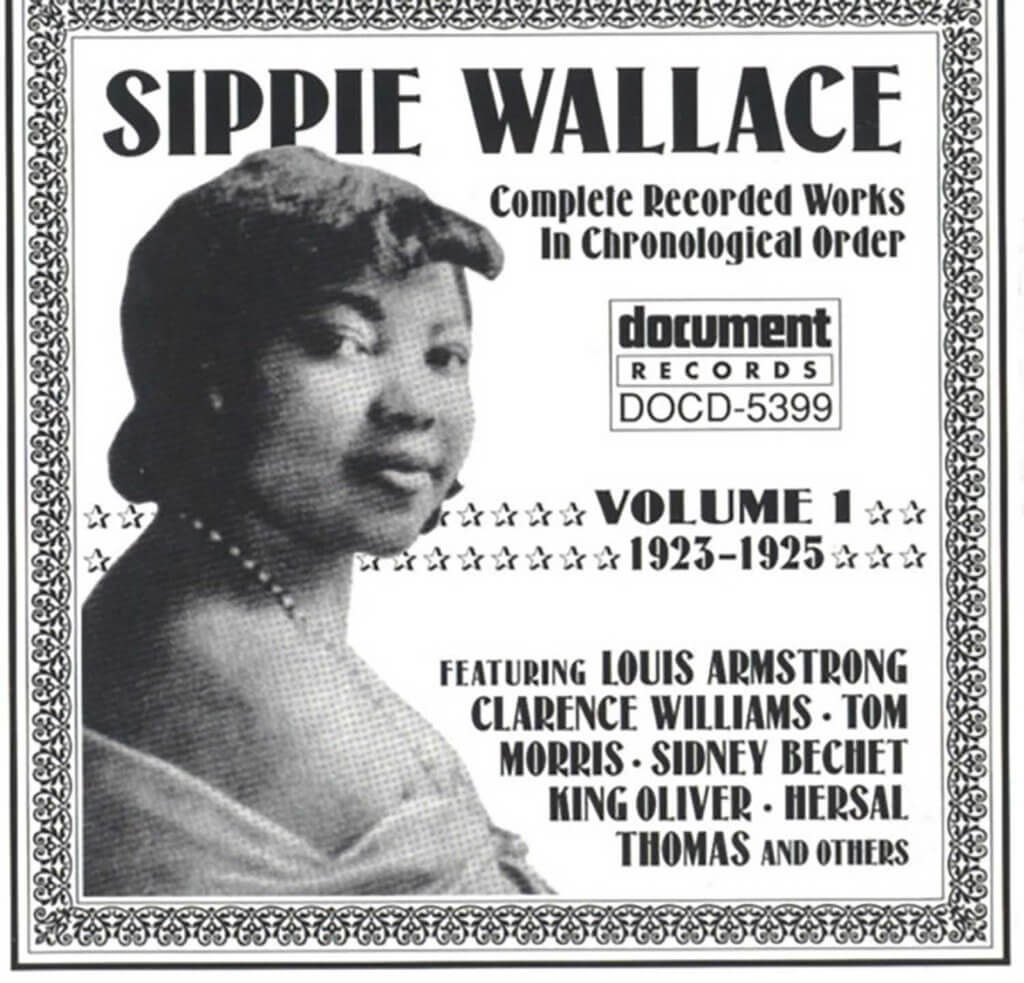
Sippie Wallace grew up in a music family, and she followed her brothers around, moving from Houston to New Orleans to Chicago, where she eventually signed a contract with Okeh Records in 1923. For about 40 years, Wallace quit recording and performed as a singer and organist with the Leland Baptist Church in Detroit, until she was coaxed to make a comeback in 1966, resulting in the recording of two albums, Women Be Wise and Sing the Blues. These recordings inspired Bonnie Raitt to take up singing and playing the blues in the late 1960s, and even recorded covers of Wallace’s “Women Be Wise” and “I’m Mighty Tight Woman” on her self-titled debut album in 1971. The two women toured and recorded together in the 1970s and 1980s, and Wallace continued to record on her own as well. She was nominated for a Grammy Award in 1982 and was inducted into the Michigan Women’s Hall of Fame in 1993.
Born in 1924, educator and children’s musician Ella Jenkins has been dubbed as the “The First Lady of the Children’s Folk Song.” She got her start in the 1950s while working as a YMCA program director for teens, performing international folk and traditional songs that she learned through her neighborhood in Chicago, as well as songs she had written. For the last 50 years, Jenkins has toured her songs for school assemblies across the United States with a focus on passing on cultural knowledge, released over 60 albums for children (including 1995’s Multicultural Children’s Songs, the most popular Smithsonian Folkways release), appeared on numerous children’s television programs, and received a Grammy Lifetime Achievement Award in 2004.
Nigerian guitarist Victoria Iruemi was a highlife pioneer. She left her training as a seamstress to pursue mastering the guitar in the 1950s, and eventually joined one of the most popular bands in Lagos, the Cool Cats, started by Victor Olaiya in 1954. During one of their shows, Iruemi was noticed by the proprietor of the Lagos Roadhouse Hotel, who invited her to front the nine-piece Roadhouse Dance Band, making her Nigeria’s first woman bandleader. Despite having faced harsh criticism as a woman and disappearing from music in the 1960s, Iruemi inspired other Nigerian women to pick up instruments and form all-women bands.
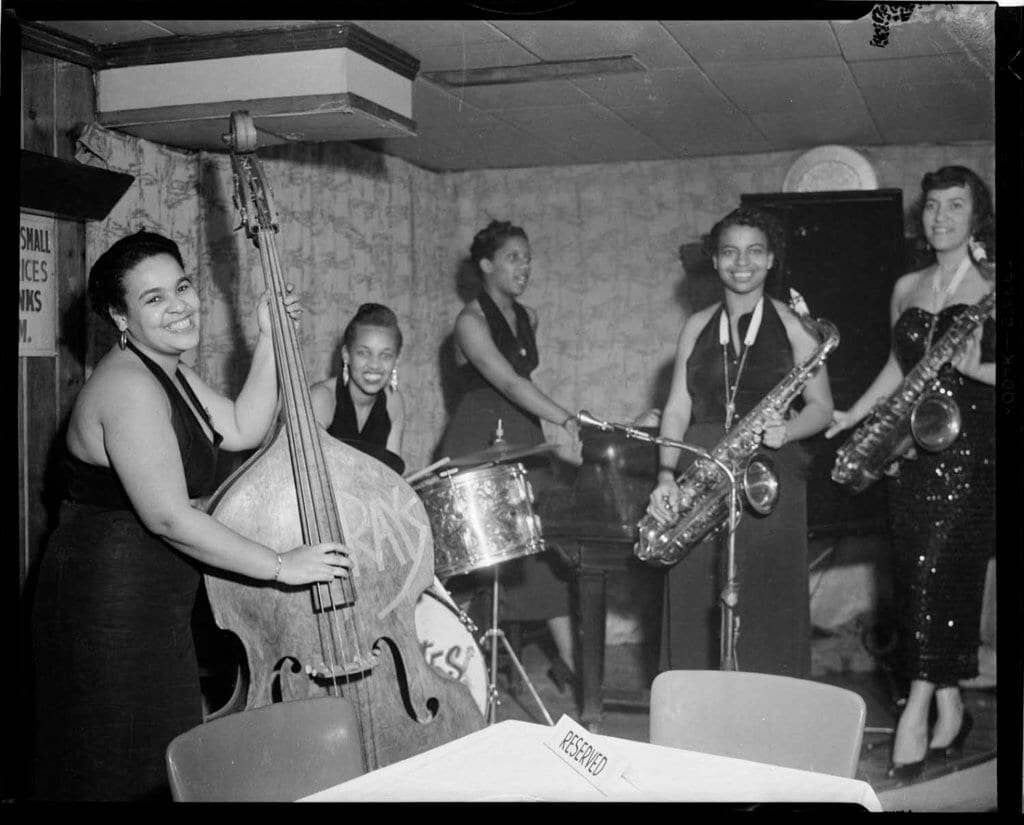
Gloria Bell was the bassist of Myrtle Young and her Rays of Rhythm, an all-women band started and led by Myrtle Young on saxophone, Hetty Smith on drums, Regina Albright on piano, and Willene Barton on tenor saxophone. The band originated in the early 1950s, and was the precursor to the International Sweethearts of Rhythm, the first integrated all-women’s band in the United States.
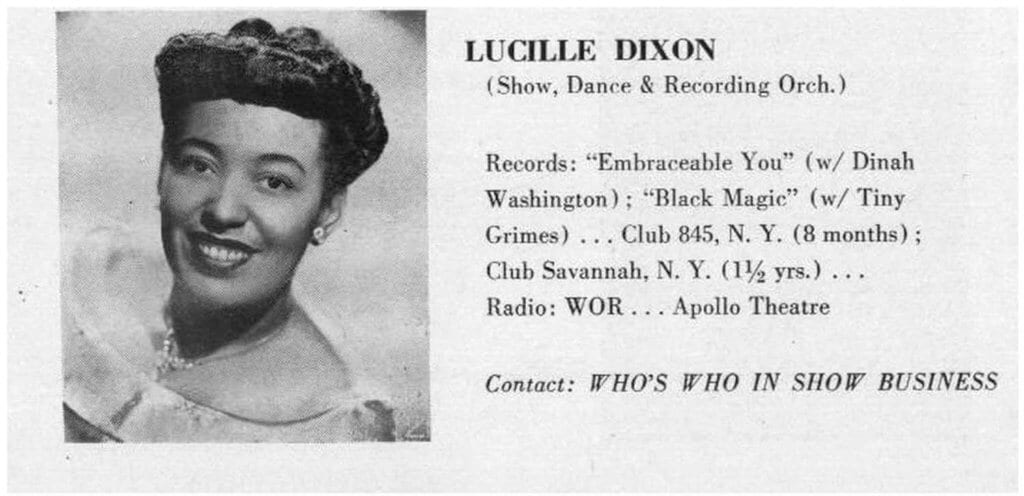
Born in Harlem, Lucille Dixon (1923 – 2004) was a jazz double bassist who started her studies in high school, performing with the All City High School Orchestra and the National Youth Administration Orchestra. She studied at Brooklyn College, as well as with Frederick Zimmerman of the New York Philharmonic, and went on to perform in the International Sweethearts of Rhythm and the Earl Hines jazz band. In 1946, she started the Lucille Dixon Orchestra, which performed until 1960. In 1964, Dixon joined a group of other Black musicians to form the Symphony of the New World, the first racially integrated orchestra in the United States.
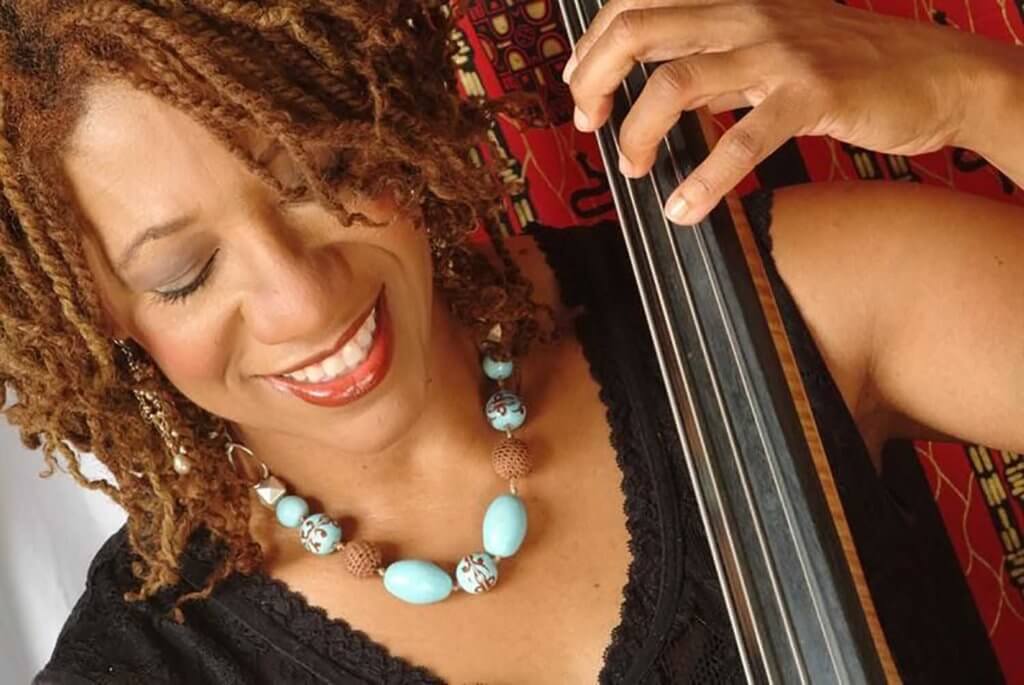
In 1964, Detroit jazz bassist Marion Hayden began playing when she was just 12 years old. She has been involved in countless ensembles throughout her career, including Straight Ahead and the all-female group Venus, performing and recording with jazz legends, and releasing her own work, including her solo album Visions. She is currently on the faculty in Michigan’s Department of Jazz and Contemporary Improvisational Studies.
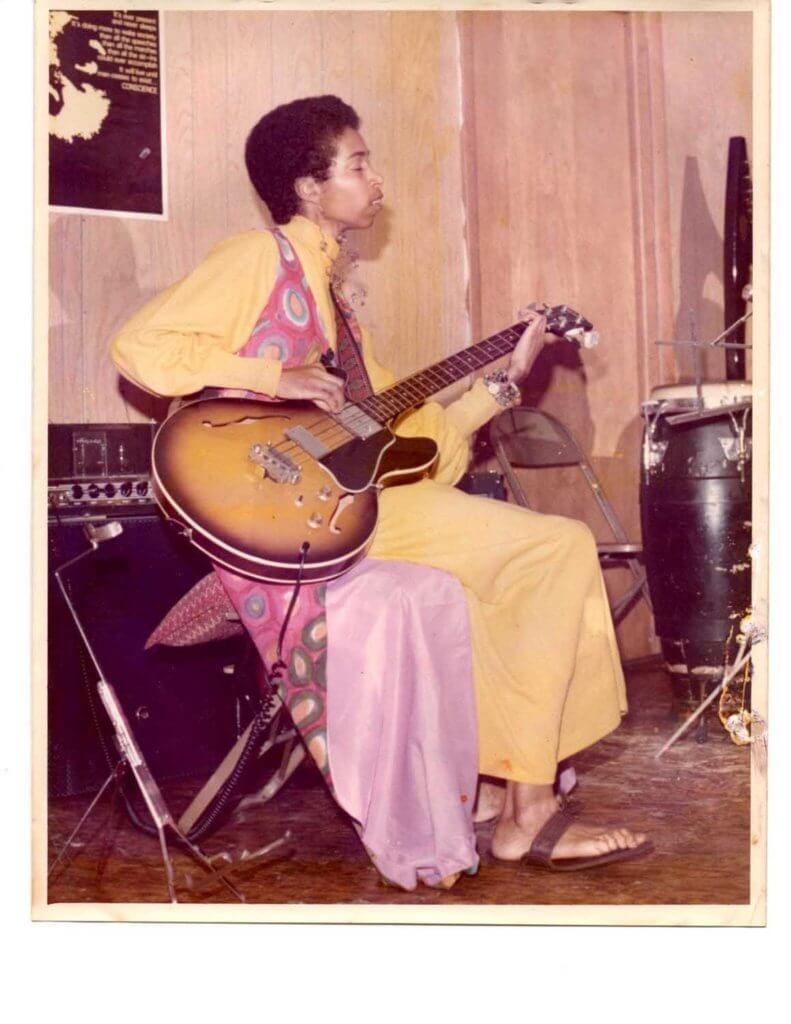
Shanta Nurullah brings together the sitar, the Indian classical instrument, with jazz. She founded Sitarsys, a Spiritual Jazz ensemble, in addition to co-founding Sojourner and Samana, playing with Nicole Mitchell, Dee Alexander, and the Association for the Advancement of Creative Musicians (AACM). She also plays bass, piano, and many other instruments, as well as being an award-winning storyteller. Last year, She Shreds chatted with Nurullah on what drew her to the sitar and the connection she’s grown with the instrument.
While Edna M. Smith (1924 – date unknown) was a phenomenal bassist, performing primarily in the 1940s and 1950s with the International Sweethearts of Rhythm, the Vi Burnside Orchestra, and the Edna Smith Trio, her major contribution to music was that of an educator. During the 1950s and 1960s, Smith studied at the Manhattan School of Music and Teachers College at Columbia University in New York City. She went on to teach in the public school system, and from 1961 to 1967 she lived in Africa and worked as a lecturer at the University of Nigeria. She contributed to numerous articles, journals, and TV and radio programs on the subject of African and Afro-American Music.
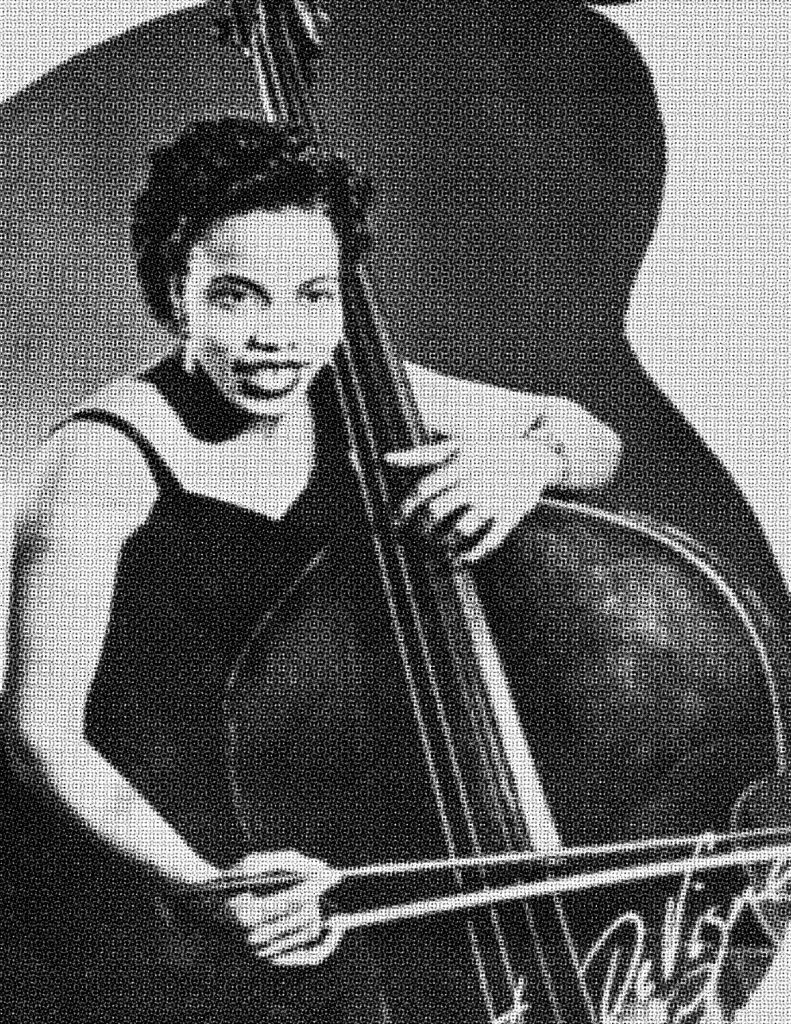
Born and raised in Los Angeles, Violet “Vi” Wilson was a bassist, pianist, vocalist, and (wait for it) master barber. She played briefly with the International Sweethearts of Rhythm and Frances Grey’s Queens of Swing, as well as other important women’s groups that came through LA. From 1976 to 1977 she sang with Interdenomination Choir, who toured Israel, Jordan, and more. In 1996, Wilson spoke with music professor and author D. Antoinette Handy, sharing that, “Women musicians should be given more credit for the contribution they have given to the music world.”
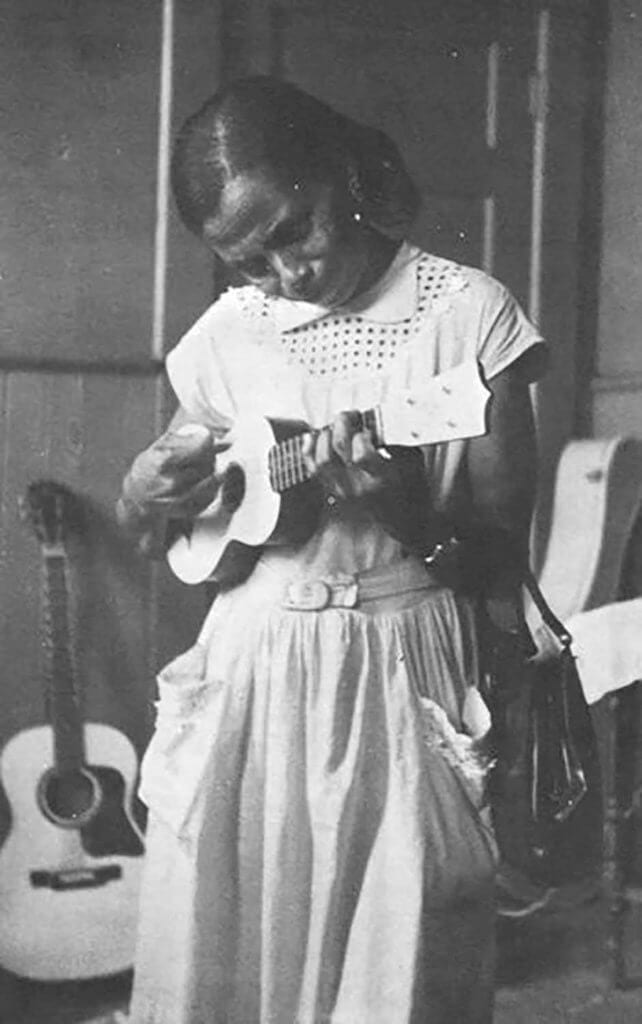
Laura Ella Dukes (1907 – 1992), sometimes referred to as Little Laura Dukes (due to her height of 4’7”) was an American blues singer and mandolin, banjo, and ukulele player in Memphis, Tennessee from the 1920s to the 1980s. From the late 1950s, Dukes mainly performed in Dixieland groups, and in 1972 she recorded tracks that were first released on the Italian albums, Blues Oggi and Tennessee Blues Vol.1. She continued to perform in clubs in Memphis in the 1980s.
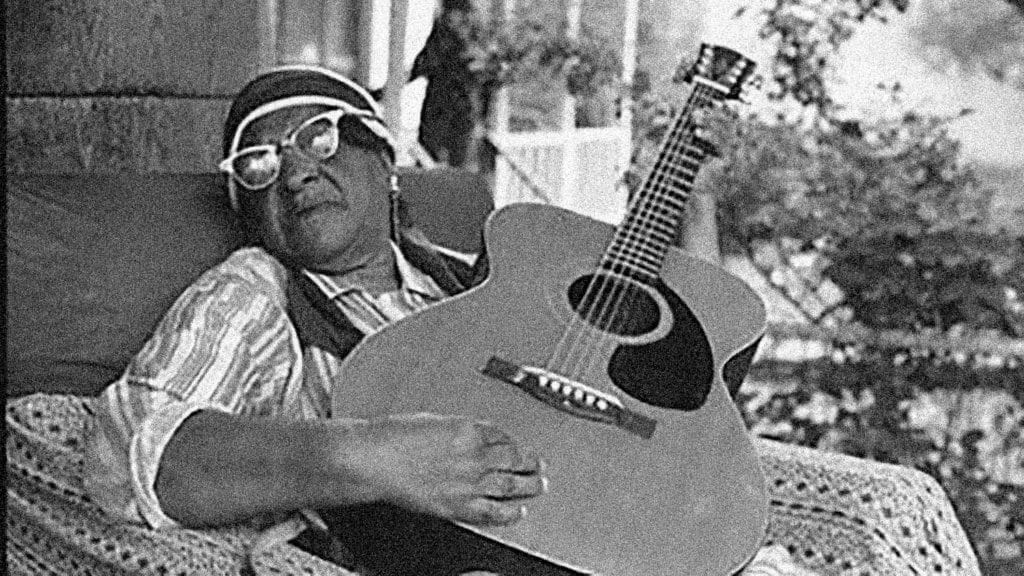
Born in Somerville, Tennessee, Van Zula Carter Hunt (1901 – 1995) was a guitarist who made a name for herself in the 1910s. She moved to Memphis, where she traveled with numerous groups, including Barnum and Bailey’s and her own group Madame Hunt’s Traveling Show. She played with local blues artists, including Bessie Smith and Memphis Minnie, recorded a number of songs, and played with the Beale Street Jug Band.
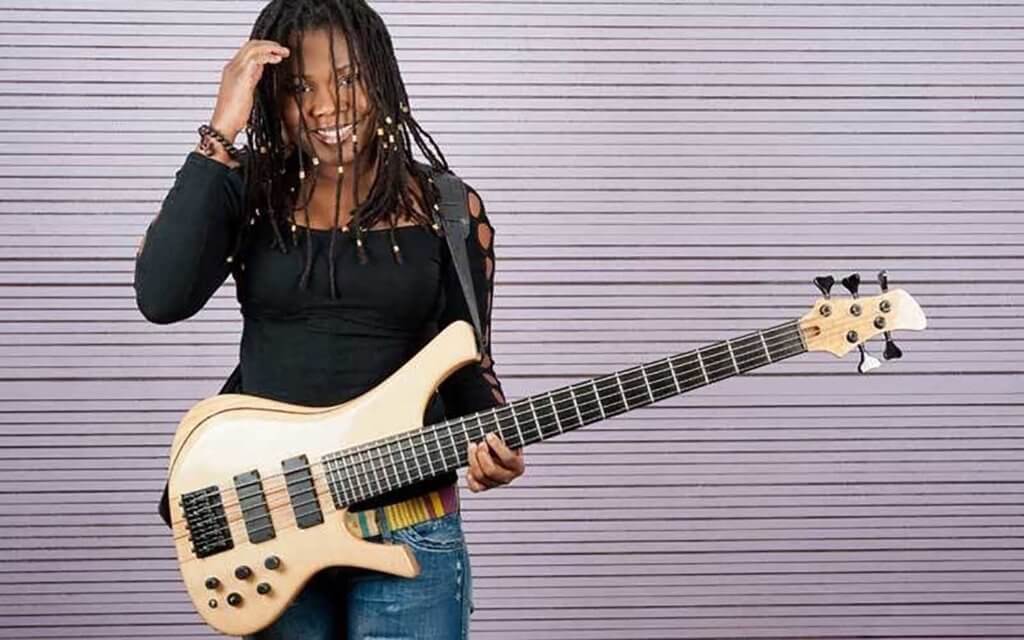
Manou N’Guessan Gallo is a West African bassist, born on the Ivory Coast in 1972. Her playing style incorporates the rich heritage of her origin, the Djiboi tribe, and her musical career led her to the legendary world music band Zap Mama. In 2009, Gallo won the MAMA Award (MTV Africa) as the “best artist,” and in 2013 Forbes Africa named her the only women among the “Top 10 Best African Bassists.” Her latest album, Afro Groove Queen, released in 2018, was produced by Booty Collins.
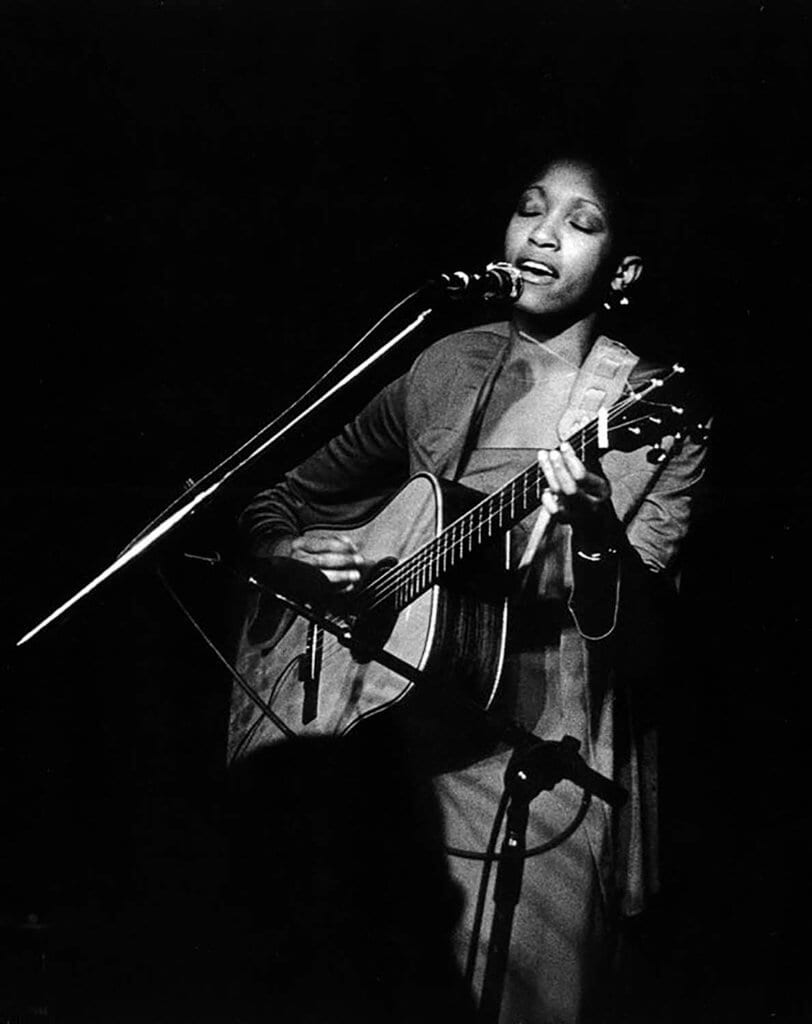
In 1963, at just nine years old, Louisville-based Faith Pillow (1954 – 2003) was given her first guitar by her mother. The jazz guitarist and singer spent some time performing in her hometown, but in the early 1970s she moved to Cincinnati to join Dee Felice’s jazz quartet, with whom she toured the United States and Caribbean. In the late 1970s, Pillow moved to Chicago to begin her songwriter career, and in 1981 she released her debut self-titled album. She eventually left Chicago, settling in Los Angeles and then Amsterdam, and released three additional albums: Sanity (1995), and Run in the Sunshine (1996), and Amsterdam (2001).
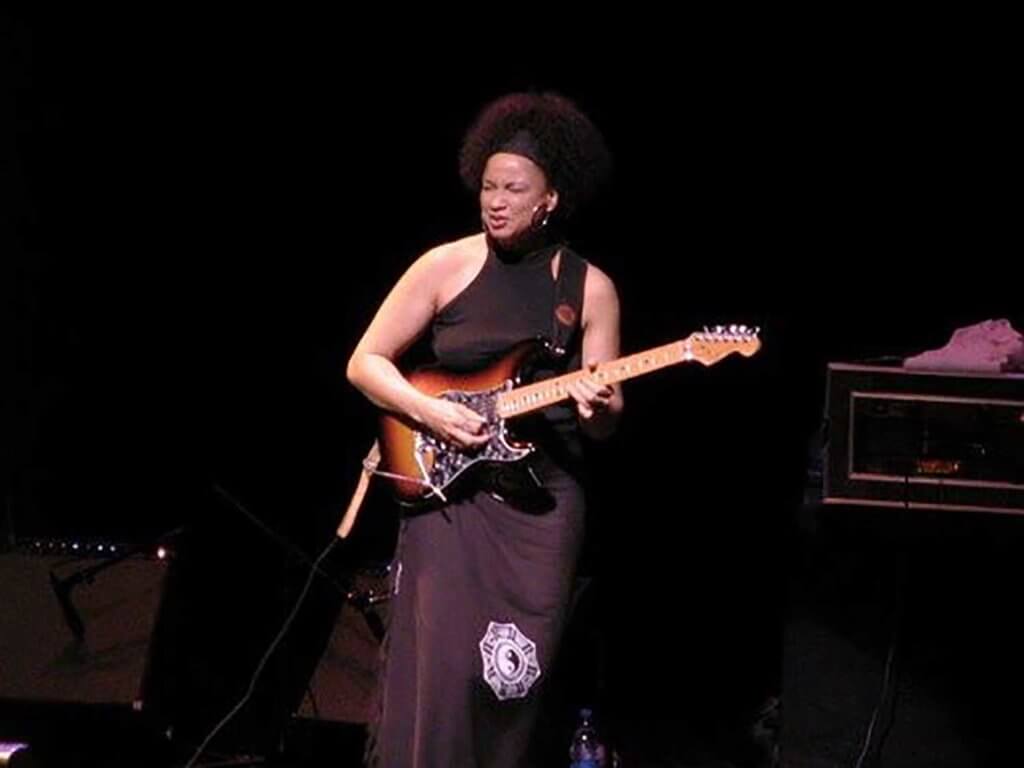
Darlene Moreno is best known for being the only woman guitarist to perform with the “Maestro of Love” Barry White. She began touring and recording with the Grammy-winning musician in 1995, joining the Love Unlimited Orchestra for over seven years. She went on to work with other notable musicians including Gerald Albright, who she performed with for six years. In 2015, Moreno suffered a traumatic head injury, and little information about her recovery and career has been publicized since.
Born in Jackson, Mississippi in 1955, jazz musician Cassandra Wilson’s love for music stemmed from her parents—her mother was a retired elementary school teacher who loved Motown, and her father a jazz bassist. She was a founder of M-Base, a collective of Black Brooklyn musicians in the 1980s, who focused on new sounds, improvisation, and creative expression. Since 1987, Wilson has released 19 solo albums and won numerous awards, including a Grammy Award for Best Jazz Vocal Performance (1997, New Moon Daughter), Grammy Award for Best Jazz Vocal Album (2009, Loverly), and BET Soul Train Award for Best Traditional Jazz Album (2001, Silver Pony).
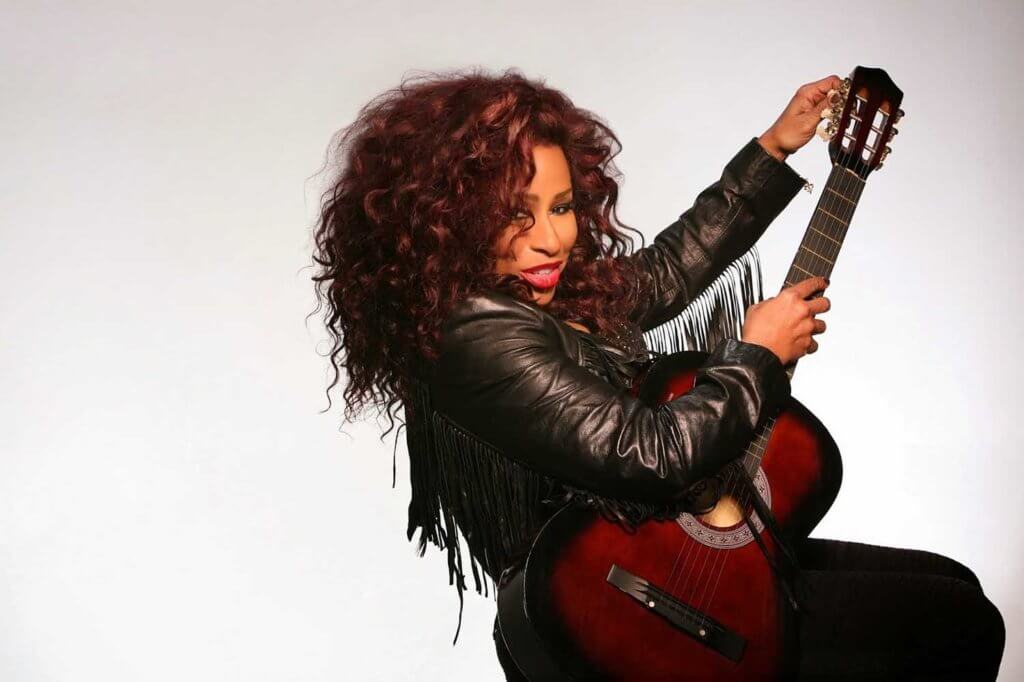
Yvette Marie Stevens, better known by her stage name Chaka Khan, is a 10-time Grammy Award-winner who performs under multiple genres, but is best known as the “Queen of Funk.” In the early 1970s, Khan started out her career as lead vocalist of Rufus, but eventually went on to pursue her solo career, releasing 12 albums starting with Chaka in 1978. She’s been nominated for induction into the Rock ‘n’ Roll Hall of Fame twice, has performed with some of the most celebrated musicians, and in 2019 she released, Hello Happiness, her first album of original music in 12 years.
There’s very little information about and no recordings or photos of Nigerian guitarist Maggie Aghomo, who performed with the all-women band the Originators. She was a pioneer of highlife, and also performed rumba and pop music. The Originators were a result of the dream of Victoria Iruemi (#65 on this list), who hoped to inspire Nigerian women to pick up instruments so that she could lead an all-women band. While Iruemi never had the chance to perform in a band of all women, she did inspire Aghomo and many more to do such.
Active since 1993, Divinity Roxx is best known for her work with Beyoncé from 2006 to 2011. She is a bassist, composer, and so much more. With Beyoncé, Roxx has done some incredible things on bass and as musical director, including appearing in two Beyoncé videos (“Irreplaceable” and “Green Light”), performing at The White House for President Barack Obama and Michelle Obama, and performing on the Grammy’s and other awards and television shows. She’s recorded three solo albums: 2003’s Ain’t No Other Way, 2012’s The Roxx Boxx Experience, and 2016’s Impossible.
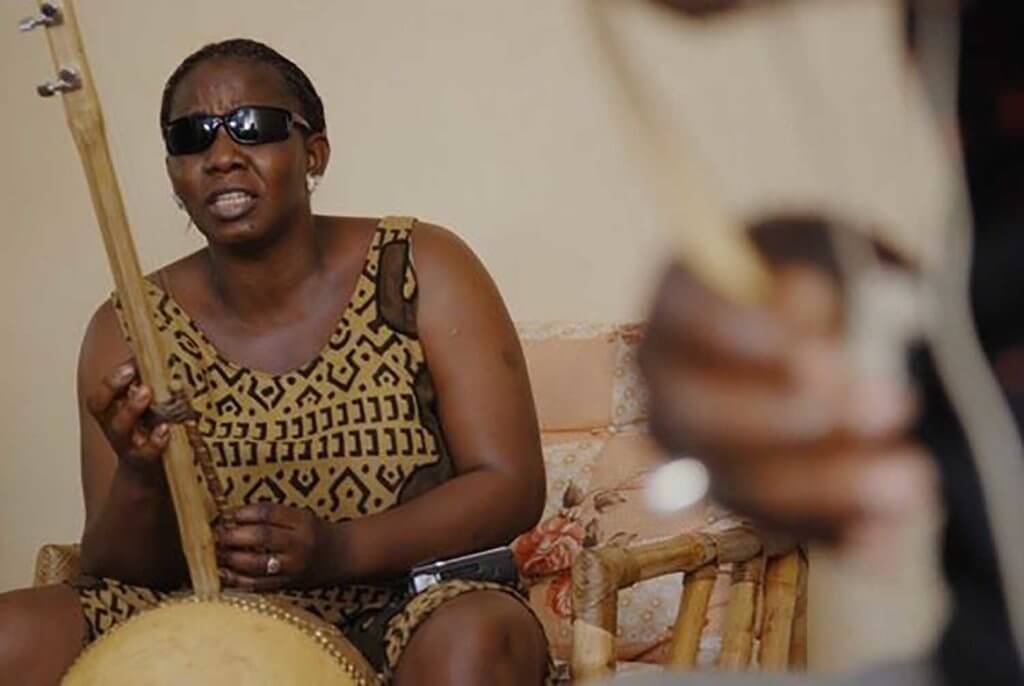
Madina N’Diaye is known for being the first Malian woman to perform with the kora on stage. One of the most symbolic instruments in the Malian musical heritage, traditionally reserved for men, the kora is a 21-string plucked harp made from a gourd. N’Diaye began her professional career with the instrument in 1990, helped by the world’s greatest kora player, Toumani Diabaté. N’Diaya went on to perform with African-influenced French band, Lo’Jo, and then formed her own group in 2000. Despite losing her eyesight in 2002, N’Diaye persevered: She went on to tour France and Europe, and released her first solo album in 2004, followed by Bimogow in 2011.
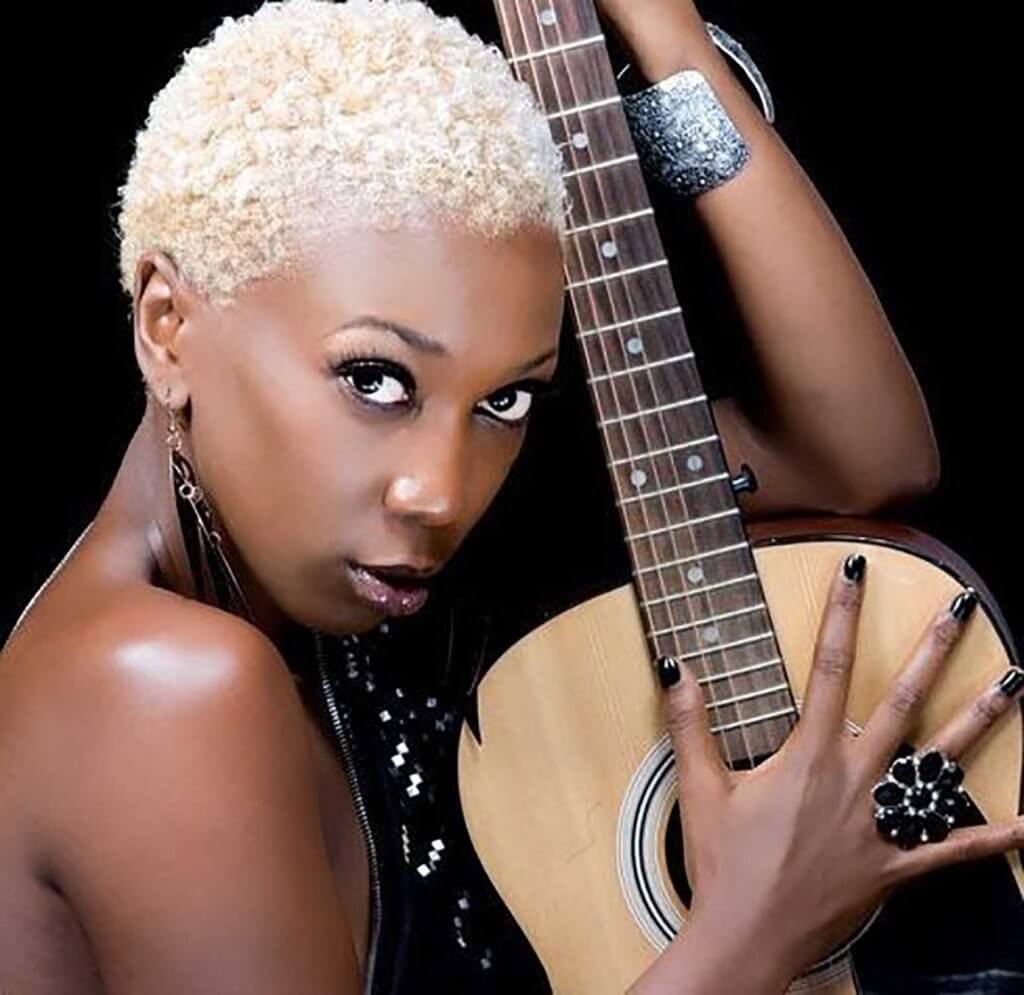
Rosemary Wahu Kagwi, known by her stage name Wahu, is a Kenyan singer-songwriter. Born in Nairobi in 1980 and originally a fashion model, actress, and entrepreneur, Wahu began performing with the guitar in late 1999. Her first single, “Niangalie, was released in 2000, and she went on to become the inaugural recipient of the MTV Africa Music Awards 2008 for Best Female Artist category, and has won a plethora of other music awards in her career.
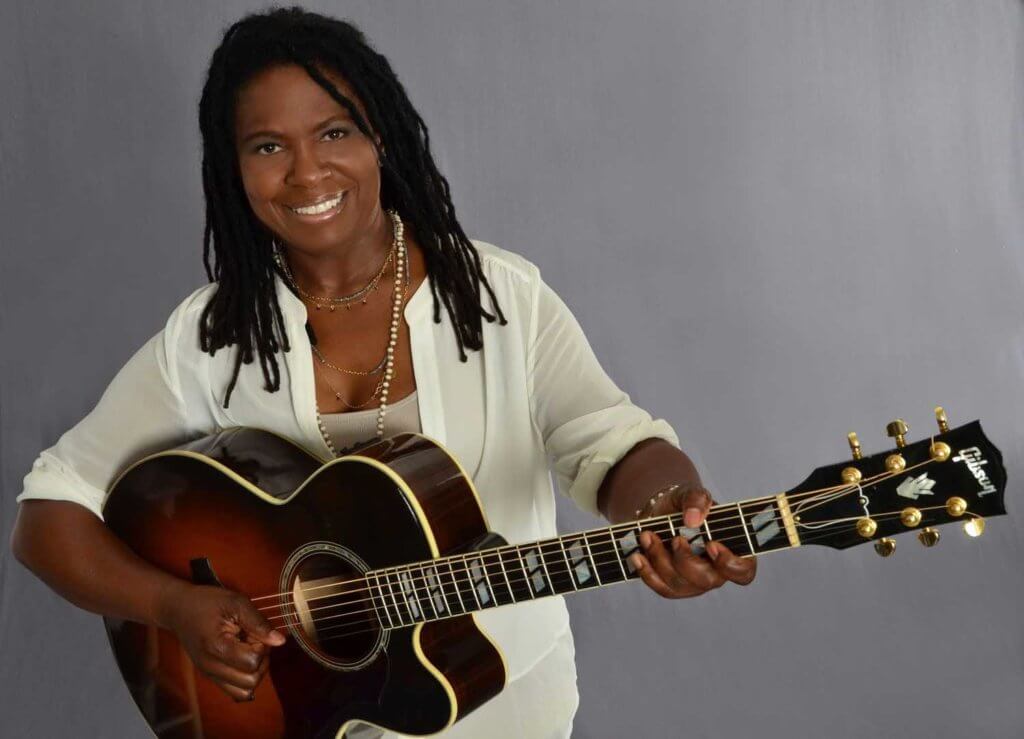
Born in 1964 in Gause, Texas, blues and folk musician Ruthie Foster began her career in gospel. She went on to study music and audio engineering, followed by joining the Navy and singing for the Navy band, Pride, which solidified her love for performing. After leaving the service, Foster signed a contract with Atlantic Records and moved to New York City to pursue a career as a professional musician. Since 1997, Foster has released 10 albums and received numerous awards and nominations, including three Grammy nominations for Best Blues Album.
Coot Grant (1893 – 1970) was born in Birmingham, Alabama, and was a blues vocalist and guitarist from the 1910s through the early 1930s. She is most well-known for her duo with her second husband, Wesley Wilson. The couple wrote over 400 songs during their career, performed and recorded with Louis Armstrong, and wrote the two songs made famous by Bessie Smith, “Gimme a Pigfoot and a Bottle of Beer” and “Take Me for a Buggy Ride.”
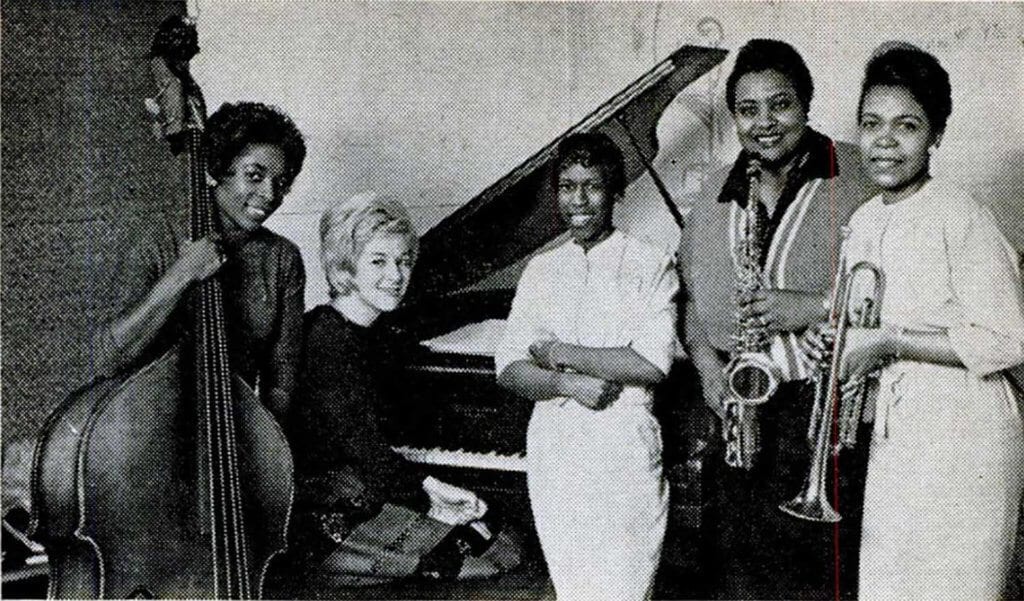
While there’s very little information available about Eileen Chance, she was best known for her bass playing with the International Sweethearts of Rhythm, Vi Burnside’s all-women orchestra, and Tiny Davis’s Hell-Divers. In a 1953 issue of Jet Magazine, it was mentioned that Chance was “excited about returning to Trinidad to marry a rich plantation owner she met when the band played there recently.” However, a 1962 issue states that Chance embarked on a six-month tour of Sweden with an unnamed all-woman jazz group.
Josie Bush was born in Florence, Mississippi. She learned how to play guitar from an uncle known as “Red” and she married Willie Brown, one of the pioneer musicians of the Delta blues genre and an influence on Robert Johnson and Muddy Waters. However, it’s been claimed by musicologist David Evans that Bush was probably just as good as her husband, and that she even taught her husband many songs.
Born as Elenore Kingston (1909 – 1995), the singer-songwriter and bassist went under a number of aliases, including Lenore King, Lenore Kinsey, Lola King, Susan King, Susan Lenore King, Nora Lee Lucie, and Nora Lee King Lucie. She recorded with Mary Lou Williams in the 1940s, and her 1950s and 1960s records were accompanied by her husband, guitarist Lawrence Lucie. King owned her own music publishing company, Kinlu Music, and in the early 1960s she and her husband started Toy Records. In the 1980s, the couple started a cable channel from their home in Manhattan that taught viewers how to play guitar, and they toured Europe and America with The Harlem Blues & Jazz Band.
Mother of notable composer and pianist Scott Joplin (often called the “King of Ragtime”), Florence G. Joplin (1841 – 1881) was a singer and banjo player. After her husband, Giles, left Joplin for another woman and, in turn, to care for her six children on her own in Texarkana, Arkansas, she struggled to support her family through domestic work. However, it was noted by biographer Susan Curtis that Joplin’s support and introductory music education for Scott was a large reason for the couples separation and Scott’s success.
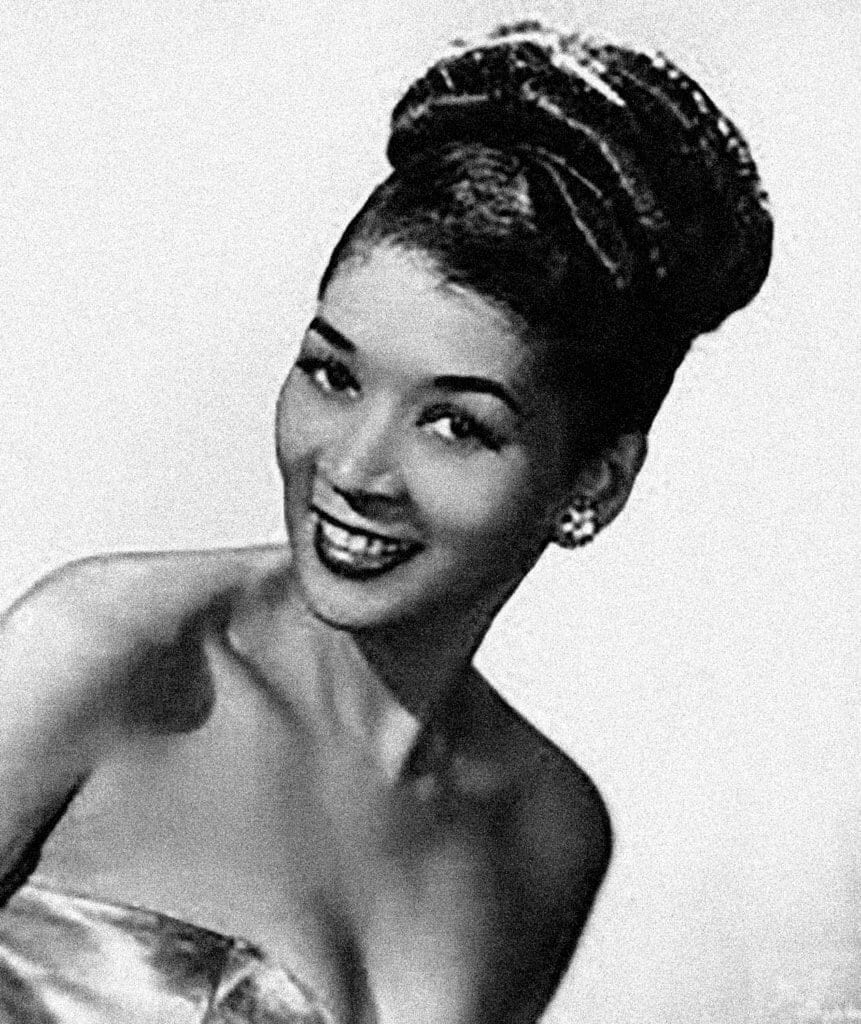
Most known for directing the International Sweethearts of Rhythm, Anna Mae Winburn (1913 – 1999) was a jazz vocalist, bandleader, and guitarist. Born in Port Royal, Tennessee, she moved with her family to Kokomo, Indiana, where she performed in various clubs under the name Anita Door. She then moved to Nebraska, where she played guitar for a variety of bands led by Red Perkins. Winburn was the leader of the International Sweethearts of Rhythm from 1941 through 1949.
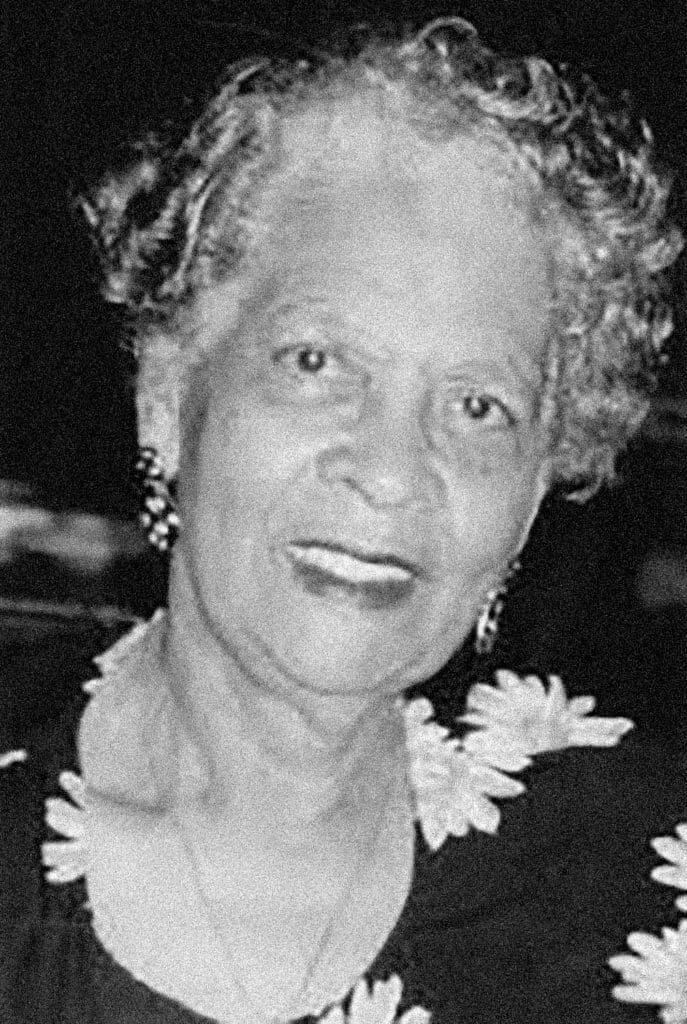
Yvonne Plummer (1919 – 2013) was born in Brighton, England, and started her musical career with the bagpipes. Arriving in the United States in 1935, Plummer worked at Piney Woods, an African American boarding school in Mississippi where the International Sweethearts of Rhythm was formed, from 1939 to 1942, occasionally performing on saxophone and guitar with the Swinging Rays of Rhythm.
Born in New Orleans, Louisiana, Olivia Porter (1880 – 1980) learned how to play bass in 1917 after she moved to New York City to join her older sister, May, to pursue a career as a musician. By the late 1920s, Porter has started her own band, the Jazz Mines, and went on to establish the Negro Women’s Orchestral and Civic Association.
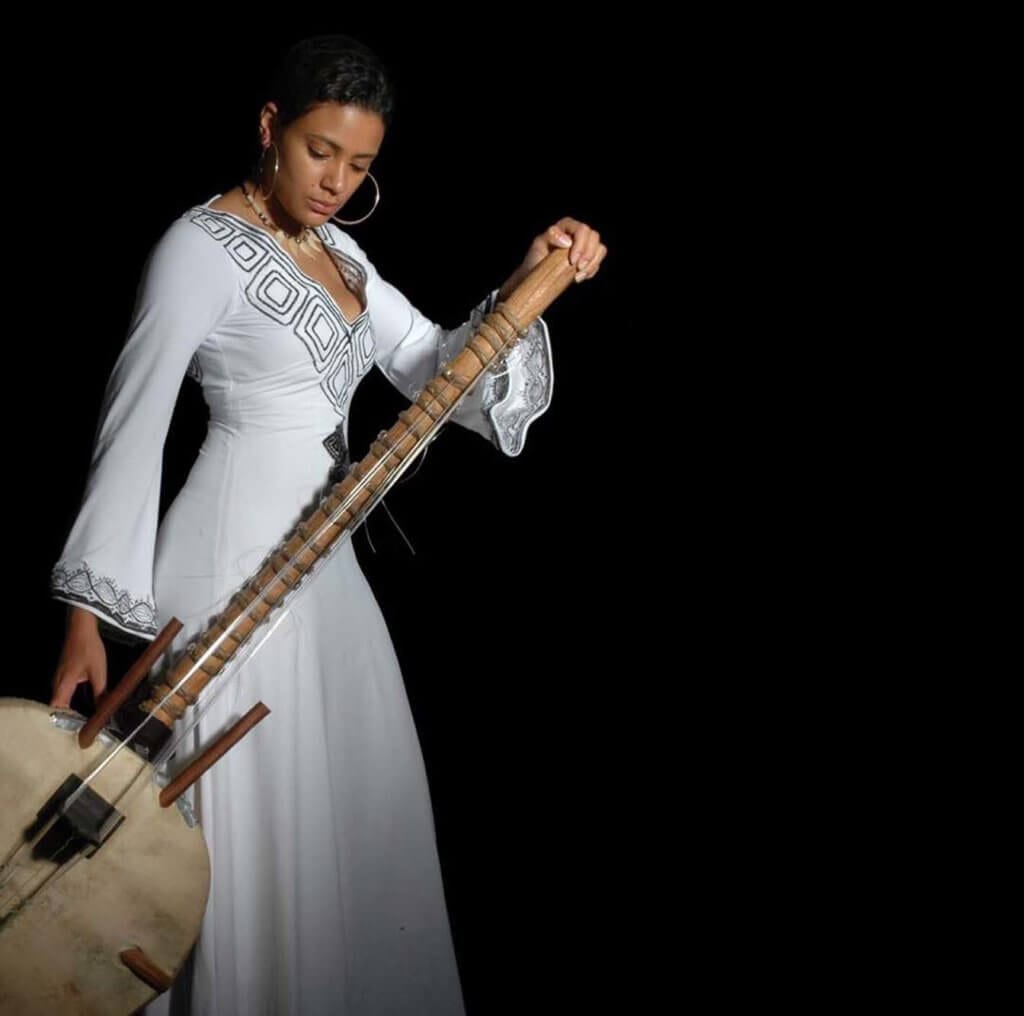
Born in The Gambia of West Africa, Sona Jobarteh is carrying on her family’s musical legacy that dates back 700 years. She was born into one of the five principal Griot families from West Africa, and is the first woman kora player to come from a Griot family as, traditionally, the kora is passed down from father to son. Jobarteh gave her first performance when she was only four years old at London’s Jazz Cafe.
Read our 2018 feature on Jobarteh here.
The often unrecognized sister of jazz bassist George “Pops” Foster, Elizabeth Foster performed on mandolin, violin, and bass with The Foster Trio, a late-nineteenth-century family band that performed quadrilles, polkas, and rags in Donaldsonville, Louisiana.
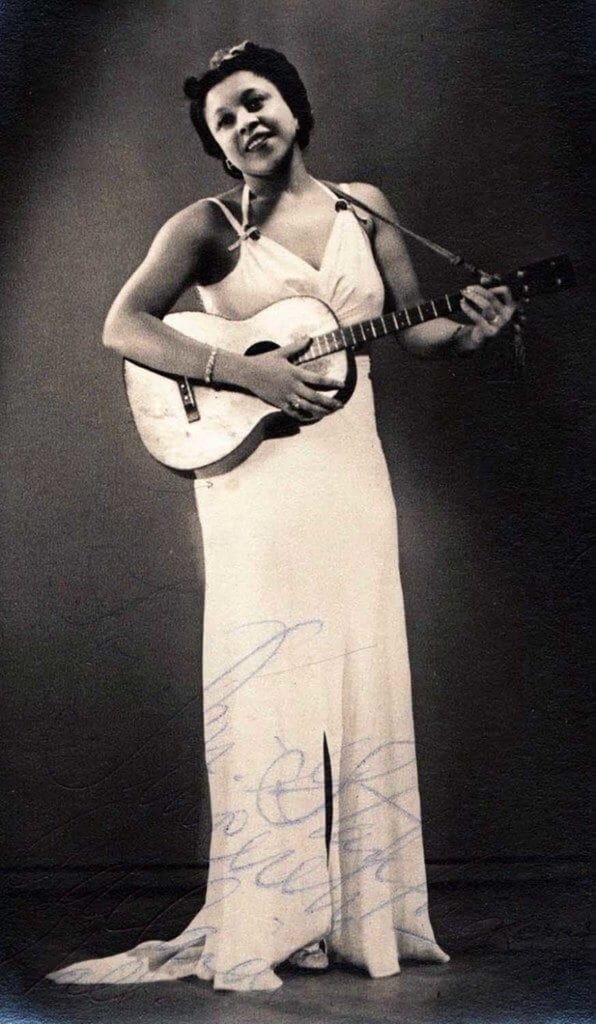
A major performer in the Harlem Renaissance, Adelaide Louise Hall (1901 – 1993) was born in Brooklyn and relocated to London in 1938. She pioneered scat singing, is widely acknowledged as one of the world’s first jazz singers, and was the first female vocalist to sing and record with Duke Ellington. Hall entered the Guinness Book of World Records in 2003 as the world’s most enduring recording artist having released material over eight consecutive decades. She played guitar and ukulele, and performed at the 1933 World Fair in Chicago, where she was referred to as “the darling girl with the guitar and the mellifluent voice” by the Pittsburgh Courier.
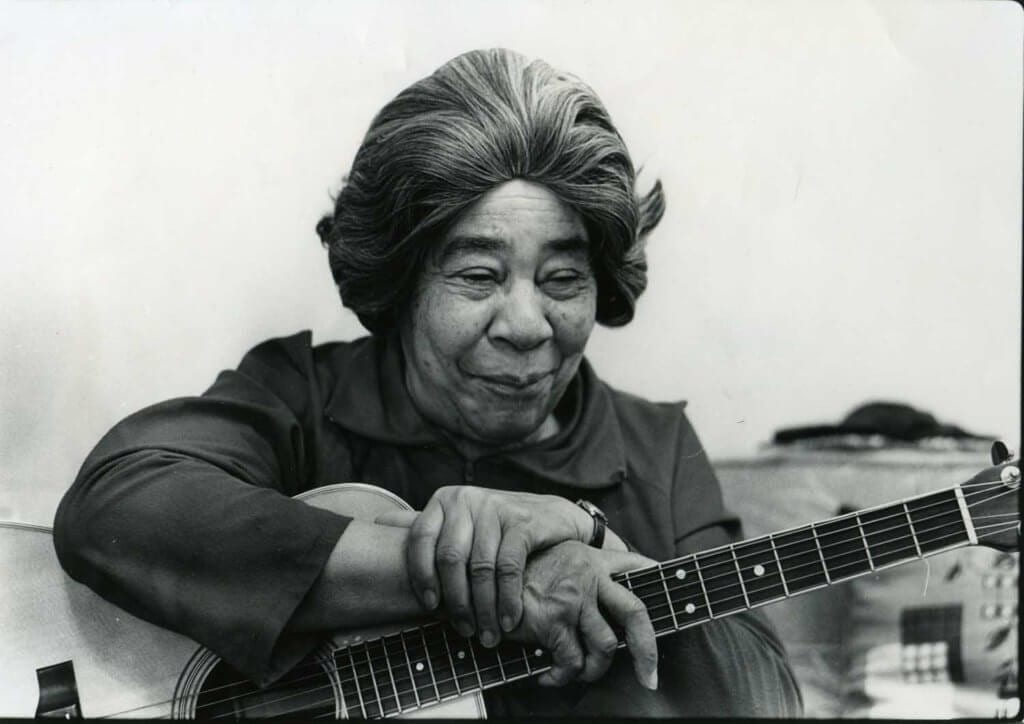
Blues singer and guitarist Esther Mae Scott (1893 – 1979) was never recognized as widely as her contemporaries, including Gertrude “Ma” Rainey and Bessie Smith. She learned how to play guitar at eight years old, and left home at 14 to join the vaudeville group W.S. Wolcott’s Rabbit Foot Minstrels. Scott eventually gave up music to become a maid, but revived her performing career when she moved to Washington, DC in 1958. She performed at the Smithsonian Folklife Festival and released her only album, Mama Ain’t Nobody’s Fool at 78 years old in 1971, which included the backup vocals of the not-yet-famous Emmylou Harris.
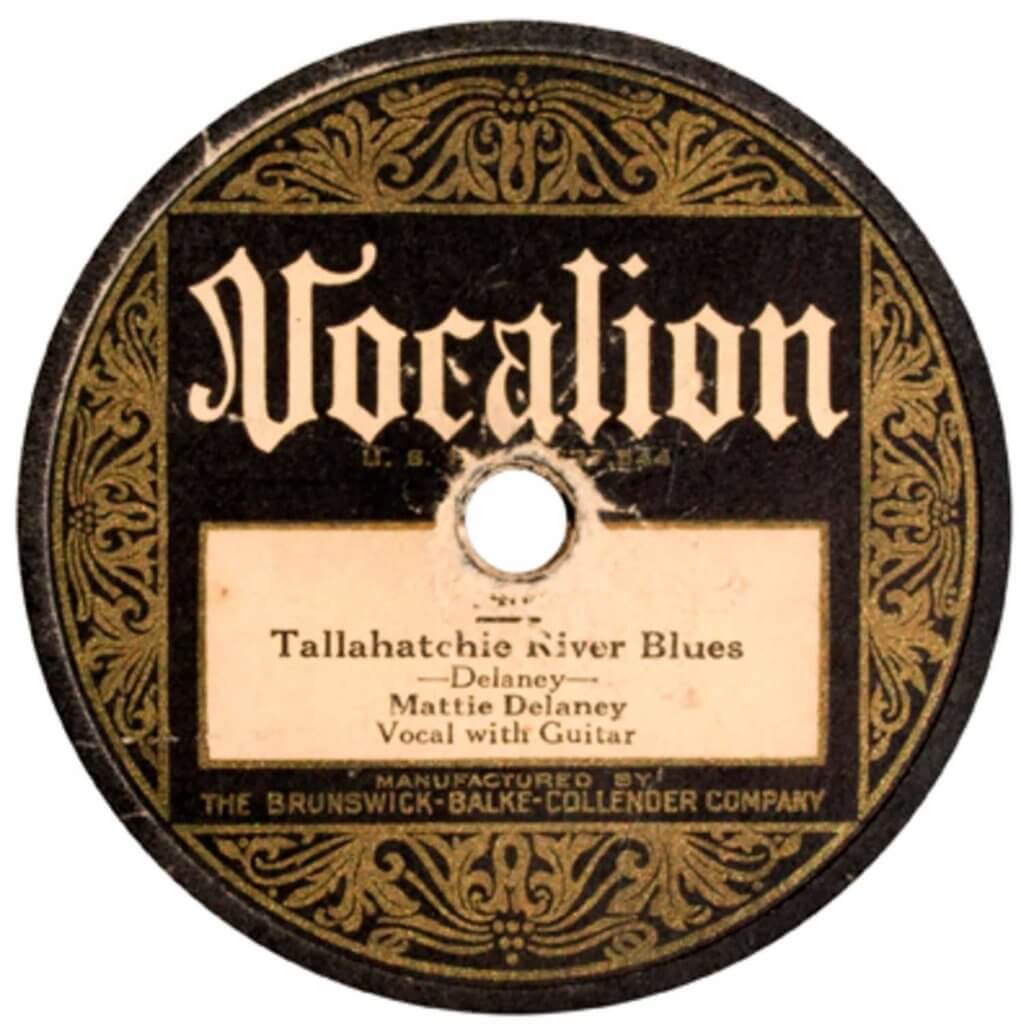
Mattie Delaney (1905 – date unknown) was a Delta blues singer and guitarist active during the 1930s. Aside from her two sole recordings on Vocalion Records, “Down the Big Road Blues” (covered by Lucinda Williams) and “Tallahatchie River Blues,” there’s very few confirmed facts about Delaney’s life.
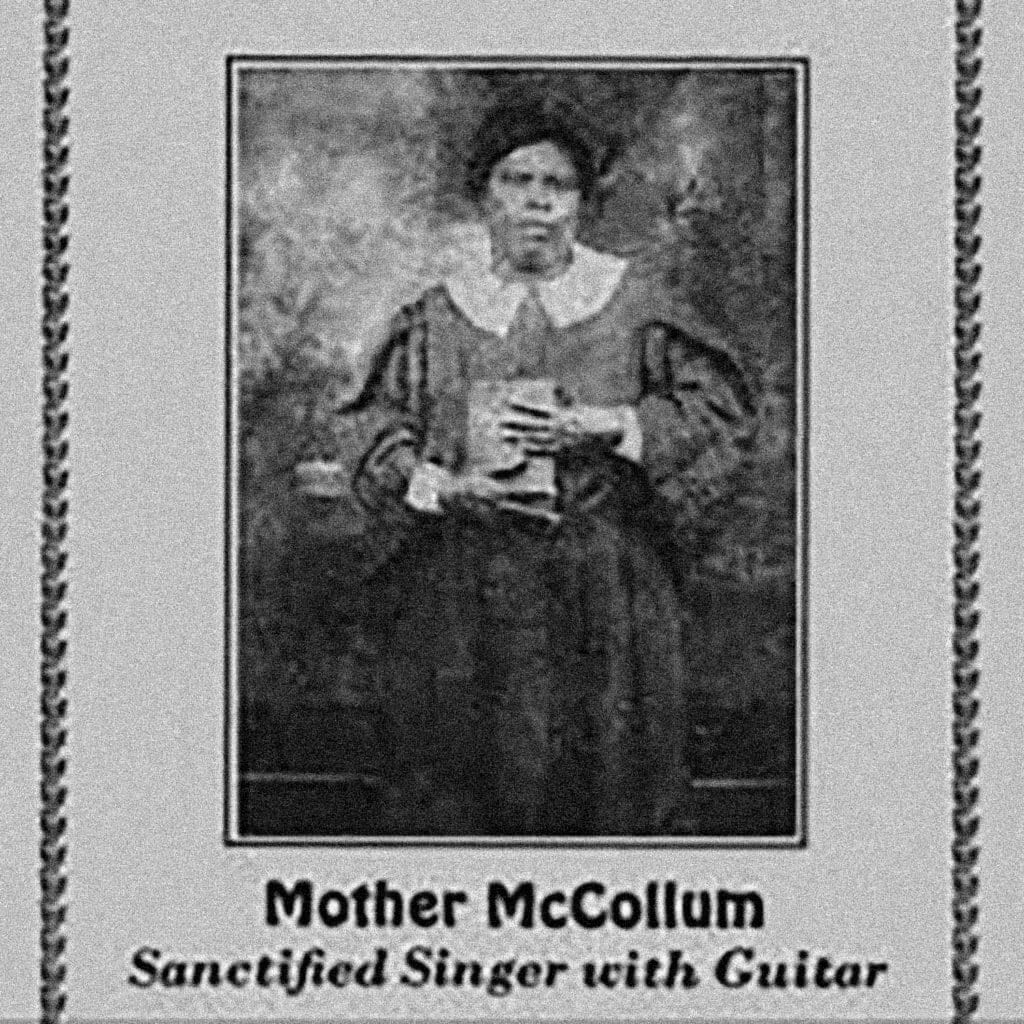
Often billed as the “Sanctified Singer with Guitar,” there is little information available about the Mississippi-born Mother McCollum, aside from her six known blues/gospel recordings from the 1930s: “Jesus is My Air-O-Plane,” “Glory! Glory! Hallelujah!” “You Can’t Hide,” “Oh Lord I’m Your Child,” “When I Take My Vacation in Heaven,” and “I Want to See Him.”
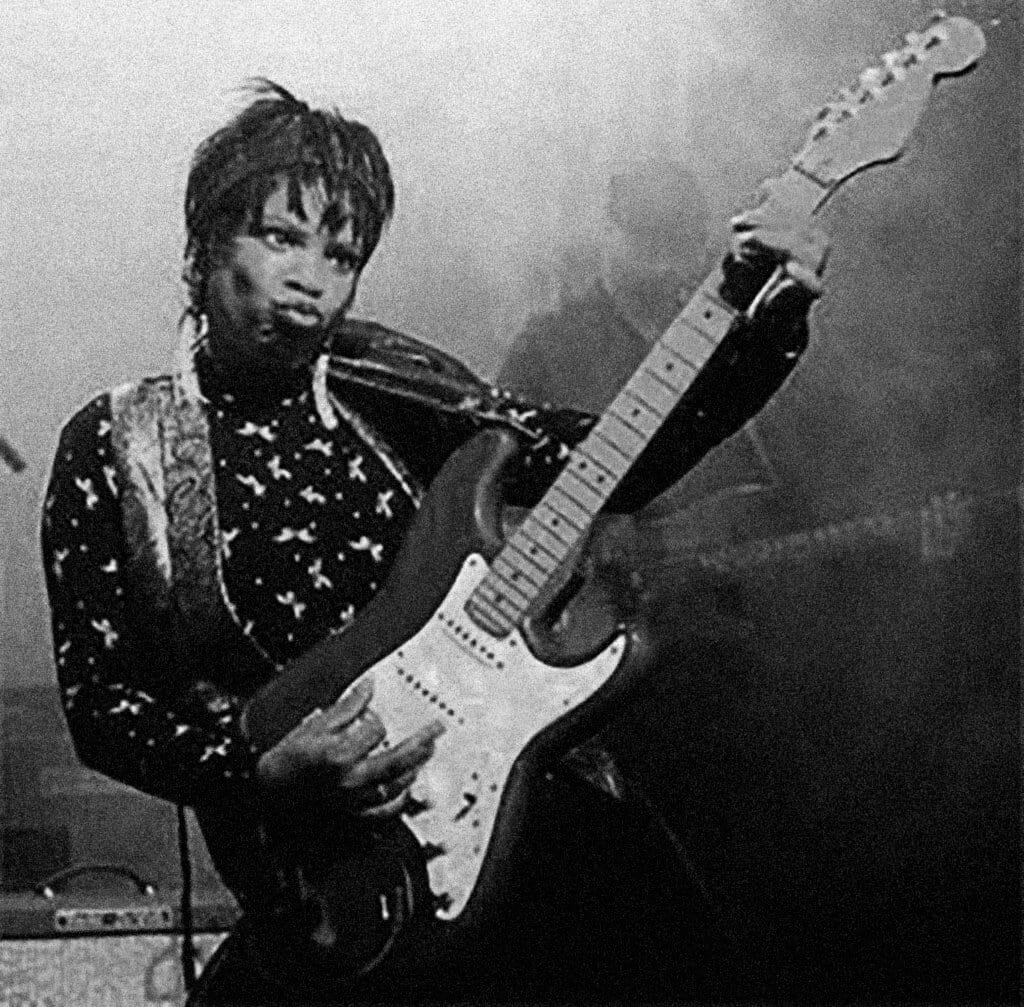
Born in San Francisco in 1955, guitarist Gail Muldrow started her career by performing on Sly Stone’s 1975 album, High On You. She performed with Graham Central Station for two years and is featured on the 1977 album Now Do U Wanta Dance. Muldrow also played with Prince, Chaka Kahn, and more. In 2003 Gail finally released her debut album, Cleen Spirit, followed by four additional solo albums through 2007.
LuLu Jackson was a blues singer and guitarist in the 1920s. She recorded a few songs for Vocalion Records in 1928, including “Careless Love Blues,” and “You’re Going to Leave the Old Home, Jim!”
Barbara Roy is a vocalist/guitarist/songwriter who is known most prominently for founding the 1970s disco supergroup Ecstasy, Passion and Pain. She started her career performing with niece Brenda Gaskins under the name Barbara and Brenda in the 1960s, and went on to play guitar with Inez and Charlie Foxx. In 1973, Ecstasy, Passion and Pain was formed, releasing a string of hit singles including “Ask Me,” which was written by Roy. After the group disbanded, Roy signed as a solo act to RCA records, releasing the chart-topping, “Gotta See You Tonight.”
Most well known as “SharBaby,” blues guitarist Sharon Newport first learned to play when she was 12 years old, inspired by her gospel-singing father. At 14, she joined her first touring band, Checkmates Part 2, and went on to form her own band, The Soul Sensations, a year later. In the early 2000s, she formed SharBaby and the Rhythm Blues Band in Alabama, releasing four albums and touring across the US and Europe. In 2012, Newport was awarded a “Master of Blues” certificate with the Blues Hall of Fame, and she currently works with the Alabama Blues Project, a non-profit effort to preserve blues through interactive programming and education.
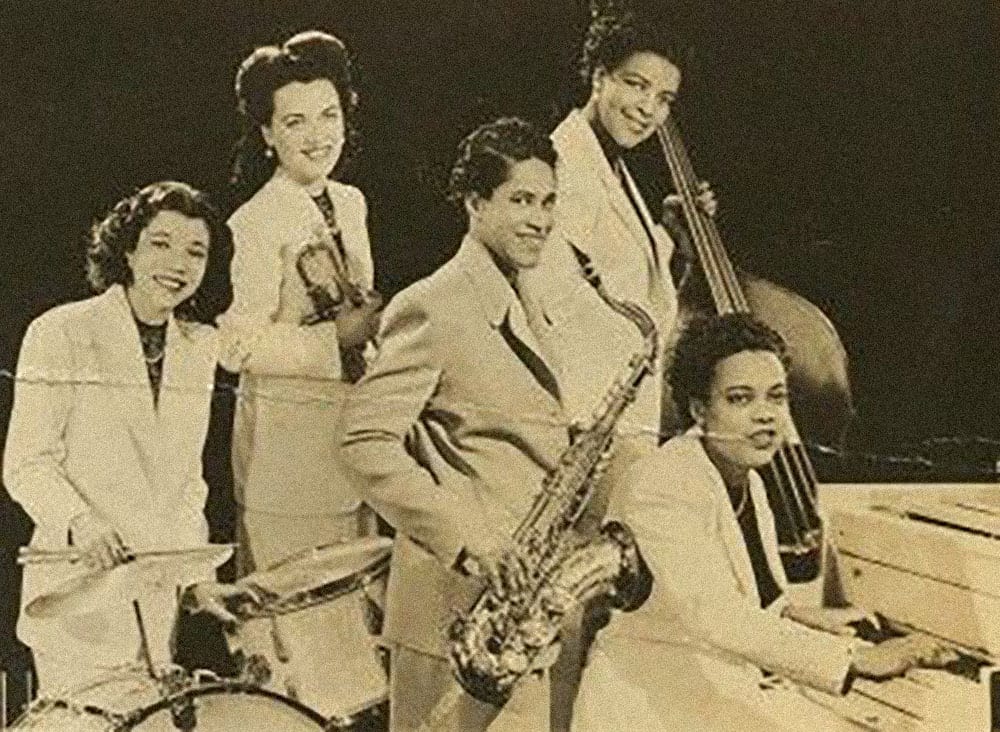
Very little information can be found on Bernice Rothchild; however, we’ve found that she played upright bass in Vi Burnside’s All-Stars and the International Sweethearts of Rhythm. We believe she is shown in the top right of the photo above.

Born in Havana in 1835, Doña María Martínez was a singer and guitarist most prominently known in Spain, France, and the United Kingdom. She studied music at the Madrid Royal Conservatory, paying her way by teaching guitar lessons. She went on to impress Queen Isabella II of Spain, and in the 1850s performed to prestigious audiences in Paris and London, including Her Majesty’s Theatre. Believed to be one of the first Black musicians who performed for wealthy white crowds in Europe and the UK in the 19th-century, very little has been written about Martínez. She was often compared to that of white contemporaries Jenny Lind and Maria Malibran, resulting in the nickname, “The Black Malibran.”
Emma Daniels was a singer and guitarist most well known for Two Gospel Keys, her 1940s gospel duo with Mother Sally Jones on vocals and tambourine. They recorded few songs, including “I Don’t Feel At Home In This World Anymore” and “You’ve Got To Move.”
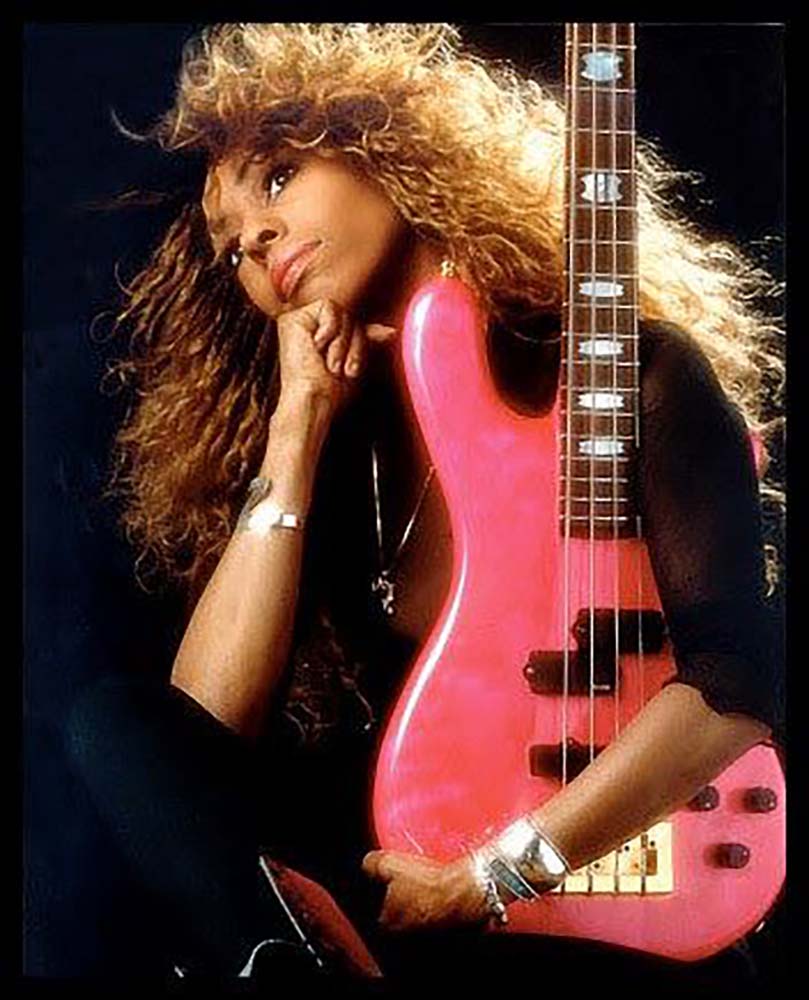
Born and raised in Queens, New York, Lizz Chisholm (also known by her solo moniker, Double Z) is a vocalist, bass player, and multi-instrumentalist who has toured with Grand Master, Melle Mel and the Furious Five, and Run DMC. She is one of the first women bass players to perform in hip-hop, and has dubbed herself as “the very first live hip-hop bass player… EVER!” She’s written music for TV and film, and has performed with the funk group The Jack Sass Band for over 30 years.
Kat Dyson has performed with some of the most profound legends in music history, including Prince, Cyndi Lauper, Sheila E, Big Mama Thornton, Odetta, and plenty more. She is best known for her work with Prince as a guitarist/vocalist in the New Power Generation and is featured on albums Emancipation, The Truth, and Newpower Soul. Before joining Prince, Dyson was a contributing guitarist and vocalist on Cyndi Lauper’s multi-platinum greatest hits album, 12 Deadly Cyns, along with Sisters of Avalon, At Last and The Body Acoustic, and she continues to perform with Lauper today.
Evi-Edna Ogholi is often credited as Nigeria’s first woman reggae musician who permanently changed the genre’s landscape, but her story is widely unknown. Ogholi is a master guitarist who is known for singing in her Isoko dialect, and from 1987 through 1990 Ogholi released six albums (three of which went platinum), wrote one of Nigeria’s most famous songs to date, “Happy Birthday,” and permanently changed the landscape of Nigerian reggae.
Learn more about Evi-Edna Ogholi in our 2020 feature, “The Unsung History of Evi-Edna Ogholi, Nigeria’s Queen of Reggae.”
Gaye Adebalola is many things: activist, teacher, photographer, and accomplished blues guitarist. Musically, she is best known for founding Saffire-The Uppity Blues Women, a three-woman blues ensemble active from 1987 to 2009 that won a Blues Music Award (best original song) for “Middle Aged Blues Boogie,” written by Adegbalola. She went on to work as a solo artist, releasing her 1999 debut solo album, Bitter Sweet Blues, followed by three more studio albums, including 2019’s The Griot. In 2018, she won the Kristin Lems’ “Social Change Through Music” Award at the National Women’s Music Festival. Outside of music, from 1966 to 1970, she was involved in New York’s Black Power Movement, and in 2011 she was named an OUTstanding Virginian by Equality Virginia for her LGBTQA+ activism. As of 2020, she continues to serve as Vice President and works on the Political Action Committee of her local NAACP chapter.
Mary Cutrufello has been a mainstay in the Americana scene for over 30 years. Bouncing from city to city—Connecticut to Houston to St. Paul—she fuses heartland rock with Texas twang. She’s performed on The Tonight Show and Austin City Limits, toured in all 50 states and several European countries, and has released five studio albums, including 2014’s Telecaster-driven, Faithless World.
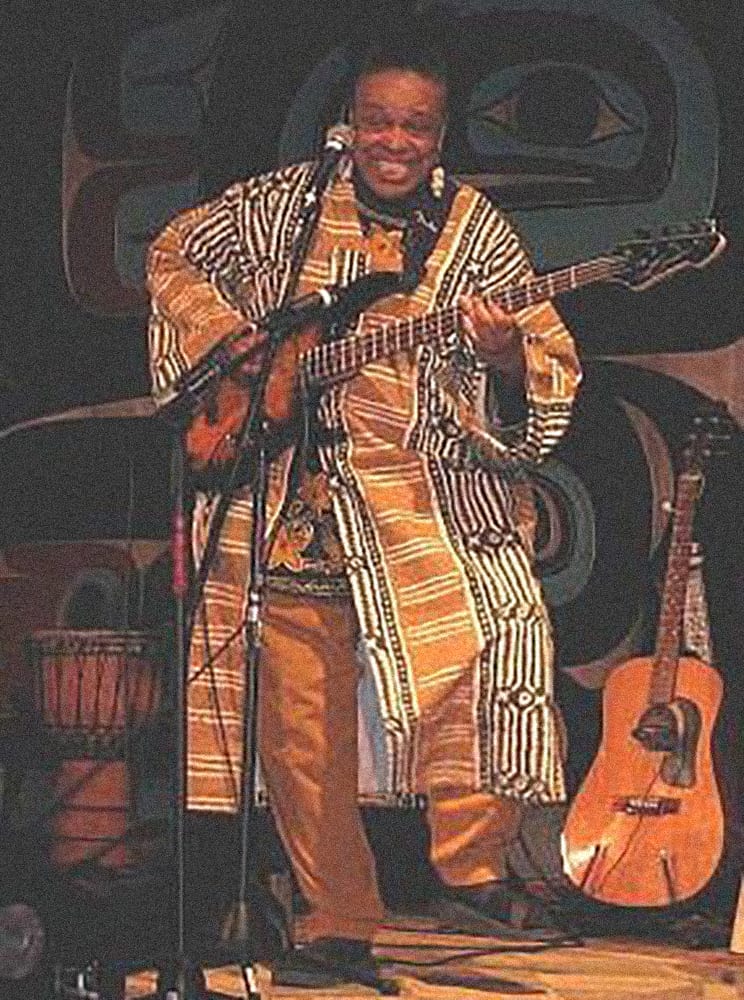
In her own words, Paula Larke can be described most accurately as a “story-teller / gatherer.” A dramatist, writer, educator, and musician for over 25 years, Larke has performed nationally, presenting chants, songs, and spirituals from Tuskegee, Alabama; the Georgia Sea Islands; the Blue Ridge and Appalachian mountains; and the Piedmont Plateau region of North Carolina. She has also worked on and off Broadway, founded Voices in the Treetops, and has been described as “a modern-day djali (village chronicler in West Africa), carrying the personal stories of ordinary people to the altar of life for benediction and forgiveness.”
Bassist and vocalist Oneida James-Rebeccu has toured the world and performed with the likes of Lenny Kravitz and Joe Cocker. Today, she continues performing her own music with the Oneida James Band, and teaches at the Musicians Institute in Los Angeles, focusing primarily on the many aspects of groove. In 2005, she wrote the bass guitar instruction book, Groove Mastery: the Bassist’s Guide to Groove.
Acclaimed singer-songwriter, jazz musician, and activist Pamela Means received her first guitar at 14, just after her mother died of cancer. Music became her main means of expression, and remains so today. Fronting many varied outfits (solo, Pamela Means and the Reparations, Pamela Means Jazz Project), she has released 10 albums to dates and has shared stages with Pete Seeger, Neil Young, Joan Baez, Violent Femmes, and more. Ani Difranco once said to Means, “You’ve got such a deep, deep groove, I can’t get out. And, I wouldn’t want to.”
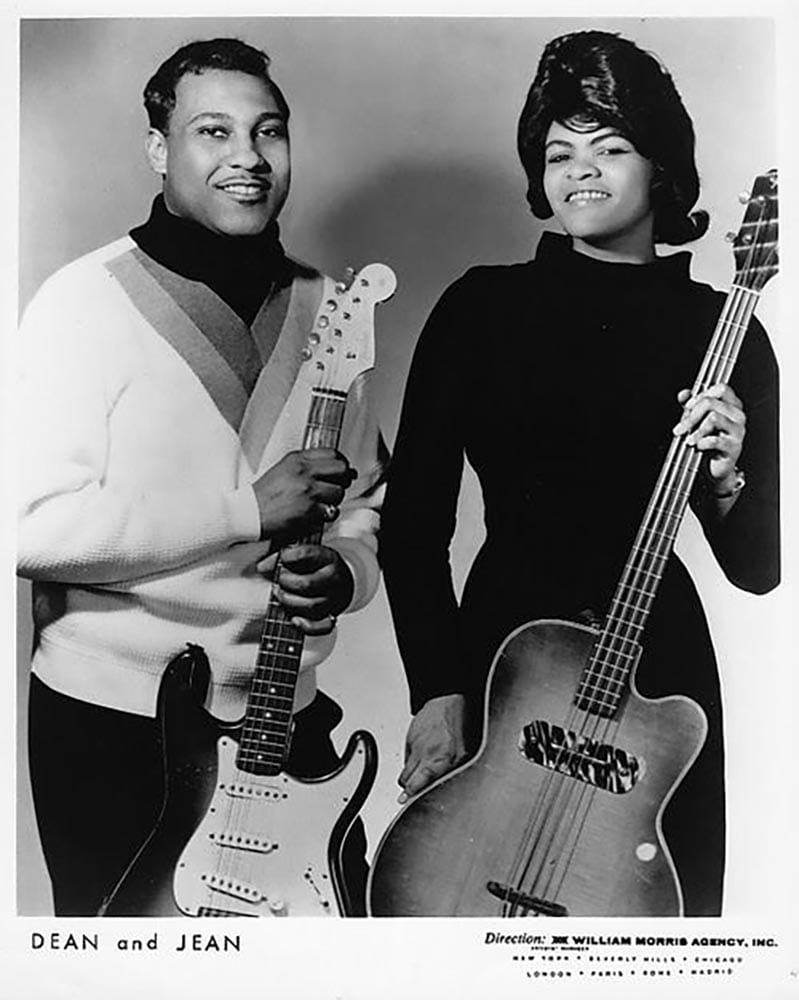
One half of the duo Dean and Jean with Welton Young, Brenda Lee Jones (later known as Brenda Melson) was a singer, songwriter, and guitarist/bassist. The band was active from 1958 to 1966, and while little is known about Jones after Dean and Jean, it has been noted that she recorded a solo album, Try Jesus (Morada) in 1983.
Best known as the guitarist for legendary R&B outfit Klymaxx, Cheryl Cooley began learning guitar at the age of 11. She studied music composition, orchestration, and arrangements at her Los Angeles high school, earned a college degree in commercial music, and in 1979 she joined Klymaxx.
Dallas blues guitarist Cookie McGee started playing guitar at 5 years old, learning from her blues legend neighbor and Rock and Roll Hall of Fame inductee Freddie King. She started her career as a backup musician and bandleader, but frustrations with the music industry and personal obligations kept her in and out of music. In the 1990s she made a comeback, releasing the albums Right Place (JSP Records, 1998) and One Way Ticket (Wolf Records, 2010).
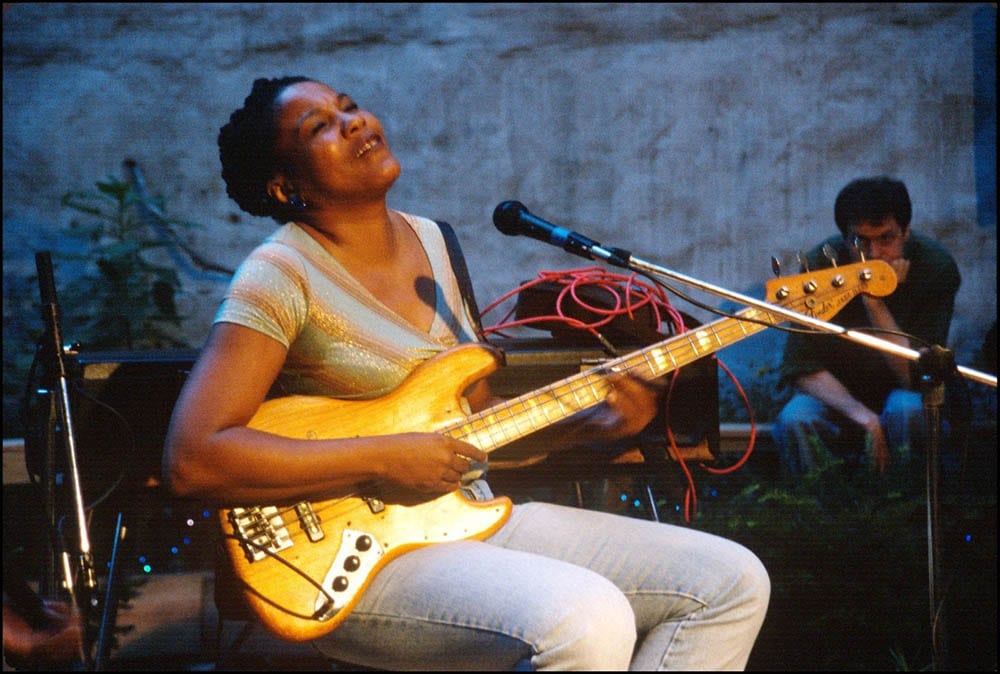
Felice Rosser is a singer, songwriter, bassist, actress, and writer born in Detroit and currently living in New York. In the past, she has played in the all-women reggae band Sistren, as well as with artist Jean-Michel Basquiat, and Ari Up of the Slits. She currently leads the band Faith.
After the departure of Carlita Dorhan, Hazel Payne joined disco-soul group A Taste of Honey on guitar in 1979. The group became a duo in 1980, featuring Payne and Janice-Marie Johnson, but Payne left the group in 1983 and became an international stage actress. The duo reunited in 2004 for the first time in 20 years.
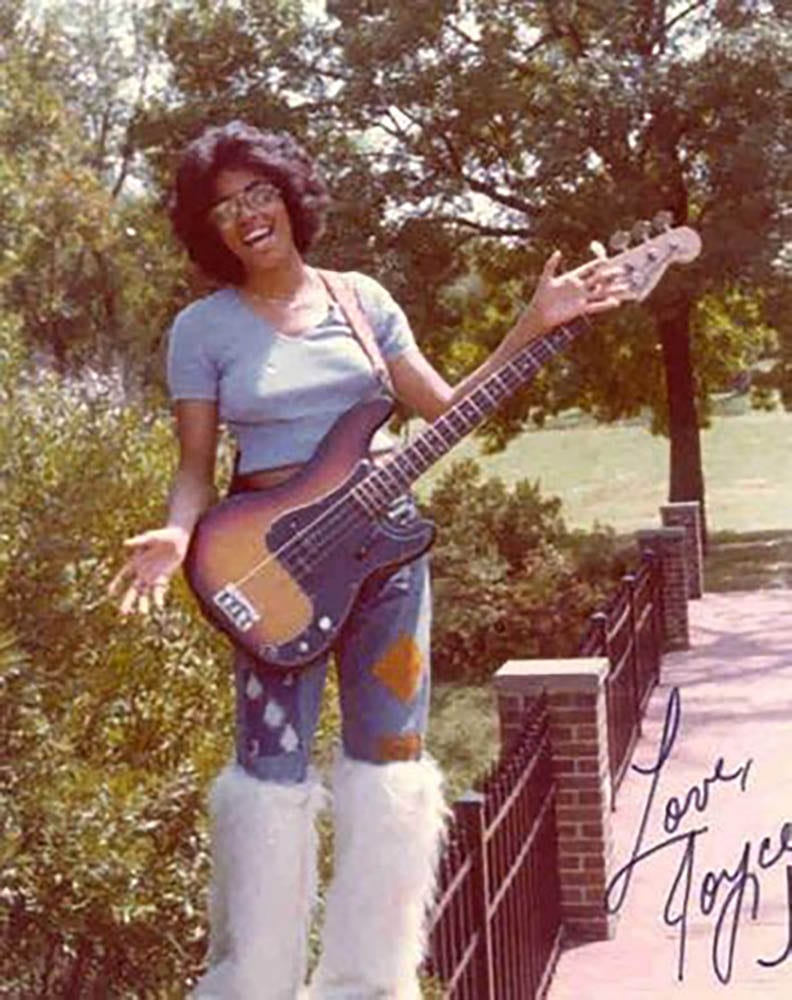
As a teenager, Joyce Irby could be found performing bass outside concerts on the loading dock, which is where George Clinton found her and resulted in her signing on with his P-Funk crew as “Fenderella.” She went on to sign a record deal with Motown in 1989, followed by joining Klymaxx as the original lead singer and bass player on three of Klymaxx’s four biggest records. She went on to found Diva One Productions, with which she signed and published a number of up-and-coming artists, including scoring a top 5 Billboard hit as a co-writer with the Fat Joe/Chris Brown song, “Another Round,” in 2012.
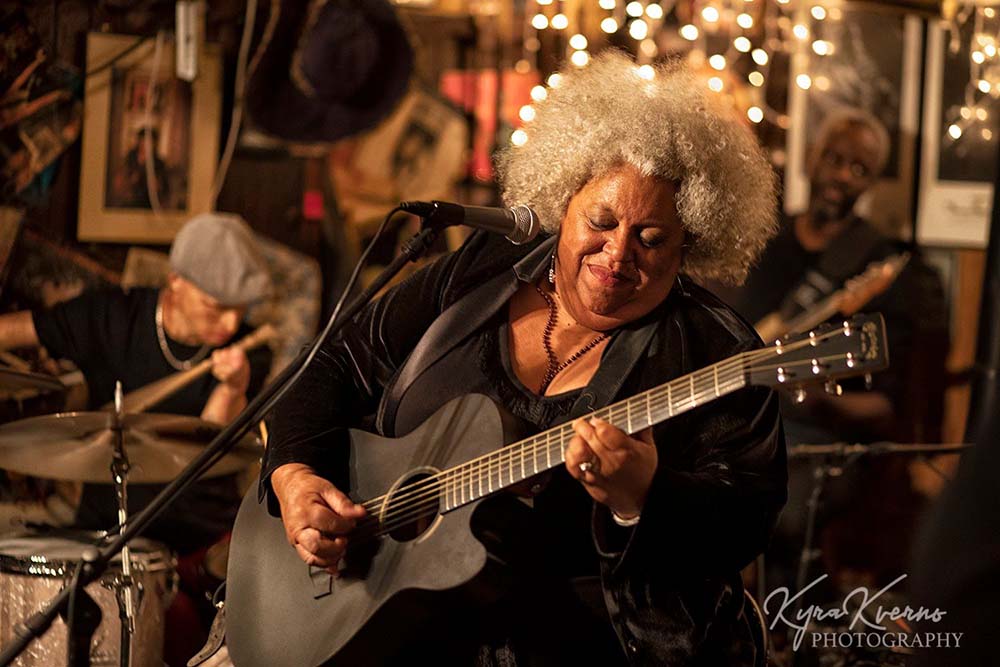
Born and raised in New York City, KJ Denhert is an acclaimed singer-songwriter who has been performing for over 40 years. She toured the world with Connecticut-based all-women band Fire, founded Mother Cyclone Records (through which she released her debut solo album), and started the music collective The NY Unit. She earned seven Independent Music Awards, and has maintained a 20-year residency at Manhattan’s 55 Bar.
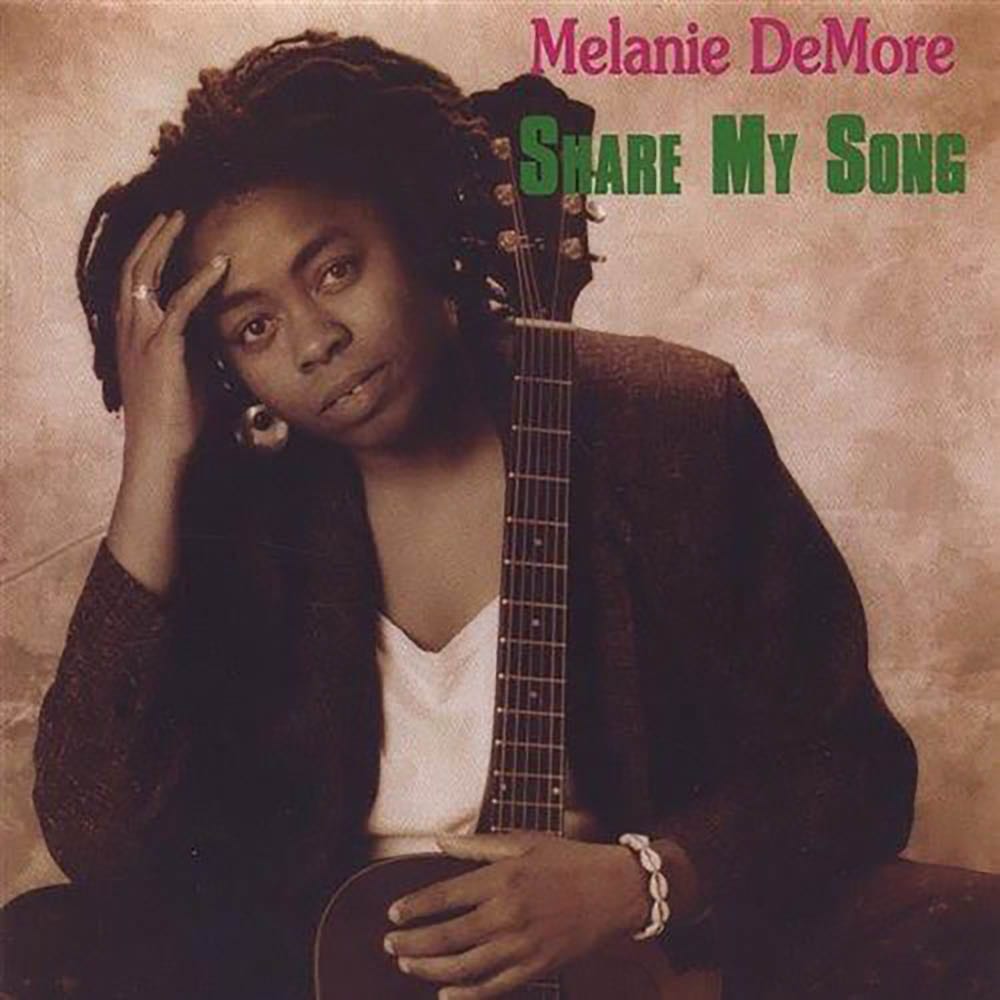
Accomplished songwriter, composer, choral conductor, and educator Melanie DeMore has traveled the world with her music. She was a founding member of the Grammy-nominated vocal ensemble Linda Tillery and the Cultural Heritage Choir, and has shared the stage with Gloria Steinem, Odetta, Pete Seeger, Ani DiFranco, and more. She released her debut solo album, Share My Song, in 1993 and In the Mother House in 2012. She has also developed a number of vocal and educational music workshops for children and adults.
Rev. Rabia has been performing for over 30 years. Born in the Bay Area, she learned how to play guitar at the age 14. She performed as a singer-songwriter as well as a backup singer with Afrobeat band Bole Bantu, but it wasn’t until she met mentors Robert Lowery and Virgil Thrasher that she found her musical direction. She has since performed at several festivals in California, toured southern Italy with Sonny Rhodes, opened for the late J.J. Cale, and released three albums—2000s Never Too Late (with Thrasher), 2015’s Future Blues, and 2020’s Ol’ Guitar.
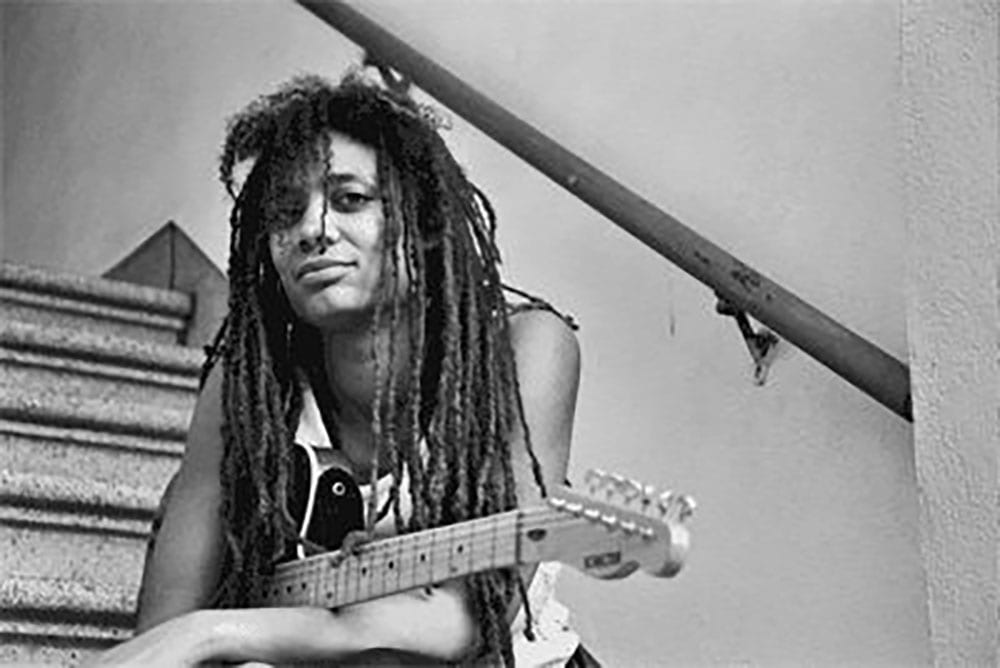
Guitarist Shelley Doty may best be known for founding the popular West Coast band Jambay, but she’s gone on to do plenty more since they disbanded in 1996. She currently fronts her band Shelley Doty X-tet, and also often performs solo acoustic these days. She has played and recorded with Bonfire Madigan (Kill Rock Stars), and was featured in the March 2008 issue of the renowned Guitar Player Magazine.
Acoustic folk blues guitarist, banjo player, and historian Veronika Jackson was inspired by artists such as Odetta, Dolly Parton, and Joan Baez as a child growing up in St. Petersburg, Florida. She grew up to create her own unique sound, combining R&B, acoustic folk, and Piedmont-style guitar picking. She released her debut album, Hat Check, in 2000, and her most recent album, The Woman I Am, in 2019. As a folk blues historian, she teaches workshops that focus on the early 1900’s – 1960 and uses her live performance to illustrate the roots and history of African American folk blues.
Daughter of Tom Winslow, folk singer and former member of Pete Seeger’s band, Thomasina Winslow was born with music in her veins—as a toddler she was a music prodigy, and sang back-up on her two of her father’s album as well as performed with her family band, The Winslows. The blues and gospel singer-songwriter went on to perform solo, as well as with numerous bands, and released the solo album, RETURN, in 2020. She is the owner of Winslow Productions and teaches music and performing arts in upstate New York.
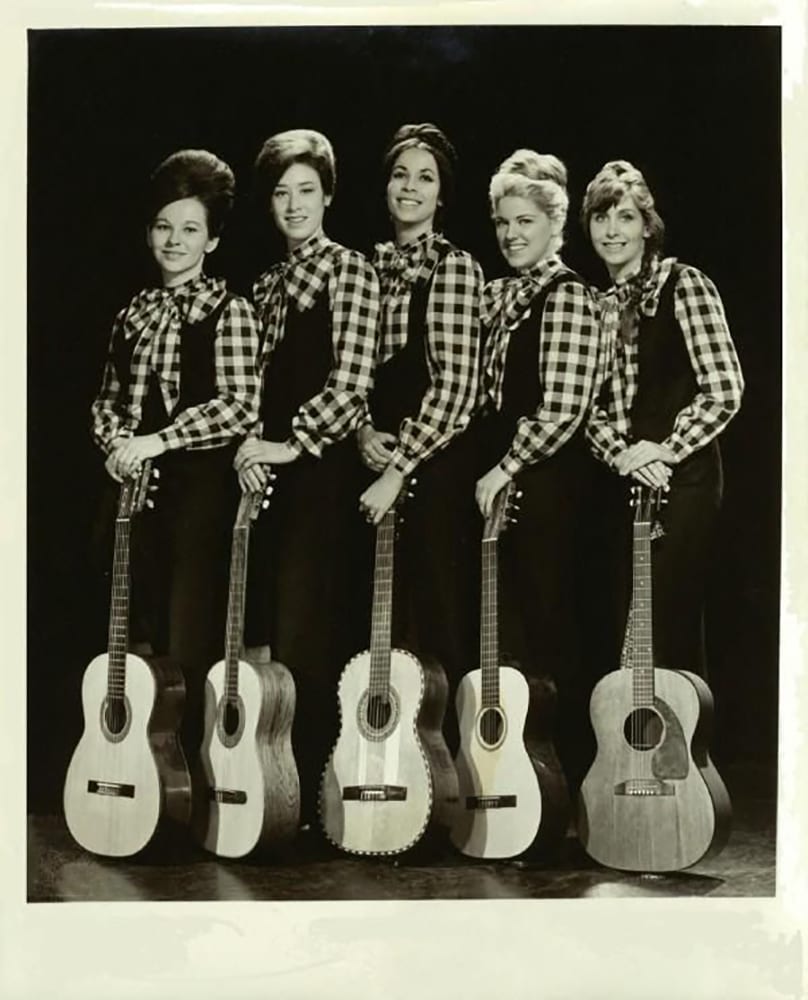
Musically, Leni Ashmore Sorenson is best known for her involvement in the all-women folk band The Womenfolk, in which she played guitar. Active from 1963 to 1966, The Womenfolk started in Los Angeles, and during their five years recorded five albums for RCA Victor and toured North American and the UK. More recently, their hit song, “Little Boxes” was featured in the HBO show Weeds. These days, Sorenson is a historian and homesteader.
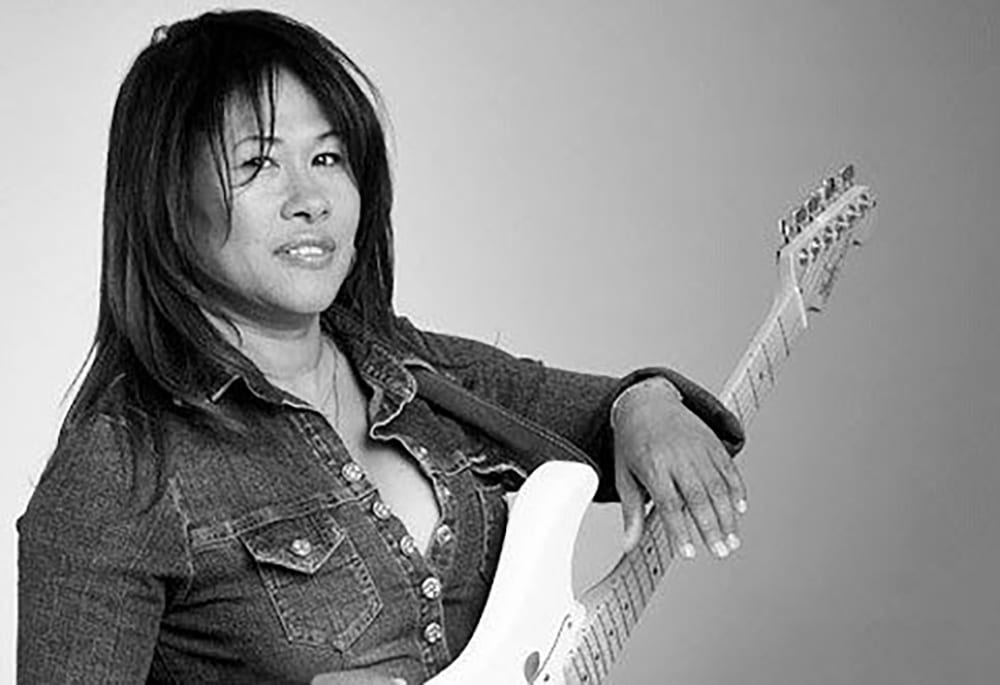
Suzanne “Minnie” Thomas (1955 – 2011) founded and joined some of the most pivotal music outfits that transformed the music industry for Black women. In the 1990s, she founded PMS (Pre-Metal Syndrome, and #44 on this list), the first all-Black women metal band. In 1996, she joined the all-women dance duo A Taste of Honey, after founder Janice-Marie Johnson reformed the group after her split with co-founder Hazel Payne. Thomas also fronted her own band, Suzanne and the Blues Church, who released The Cost of Love in 2011.
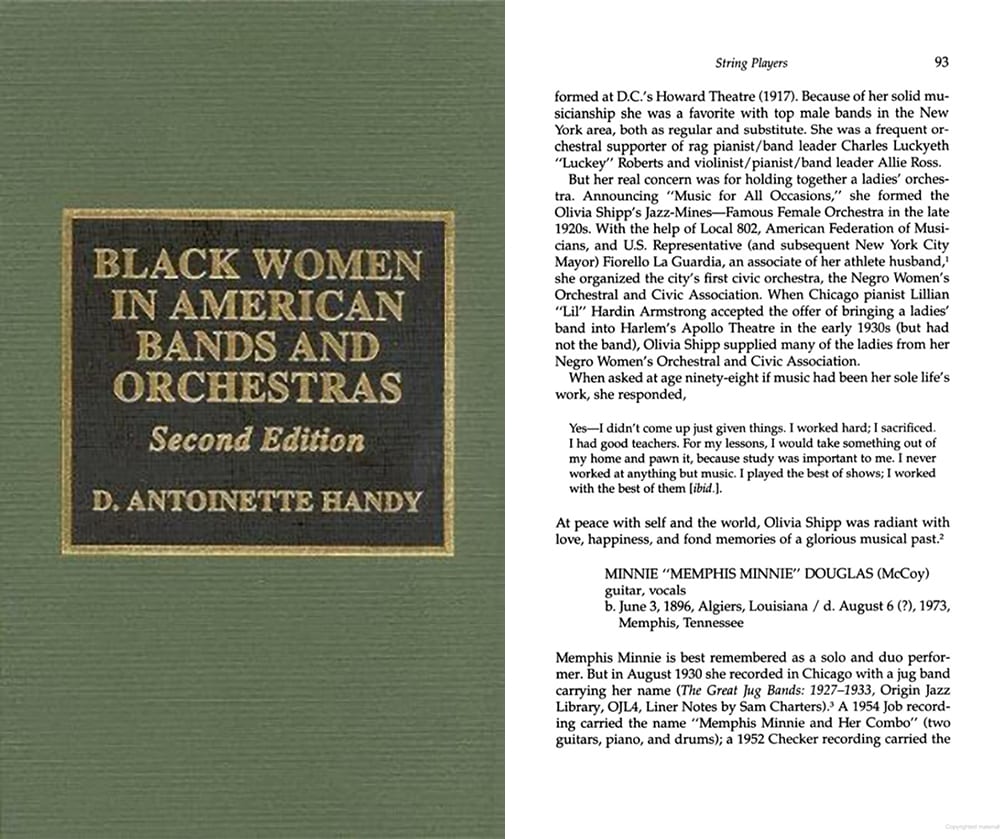
Very little is known about the life of Betty Lomax. She performed on guitar with the Negro Women’s Orchestral and Civic Association (founded by Olivia Sophie L’ange Porter Shipp, #92 on this list) in New York City during the late 1920s and early 1930s.
Blues guitarist and vocalist Pat Wilder has spent the past 30 years performing in a series of funk, rock, and blues bands around the Bay Area, including with Bobbie Webb, Billy Dunn, Curtis Lawson, Zakiya Hooker, Luther Tucker, and more. In 2015 she released the album, Alive.
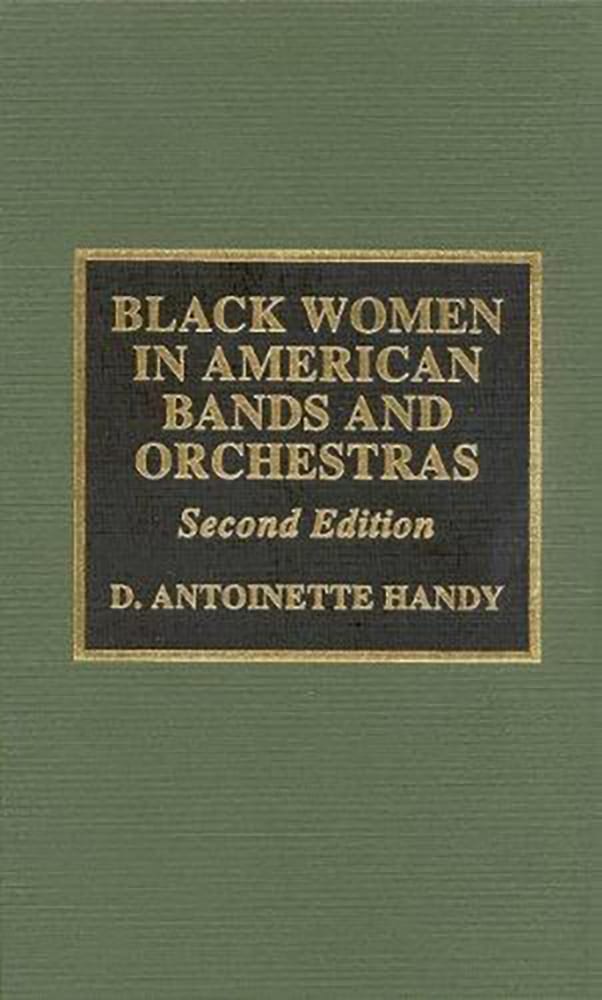
Sisters Alice and Fanny Wiley played, respectively, string bass and guitar in their family band, The Wiley String Band, based out of South Carolina. Aside from this meager information found in the book, Black Women in American Bands and Orchestras, by D. A. Handy, little else is known about the sisters or the band.
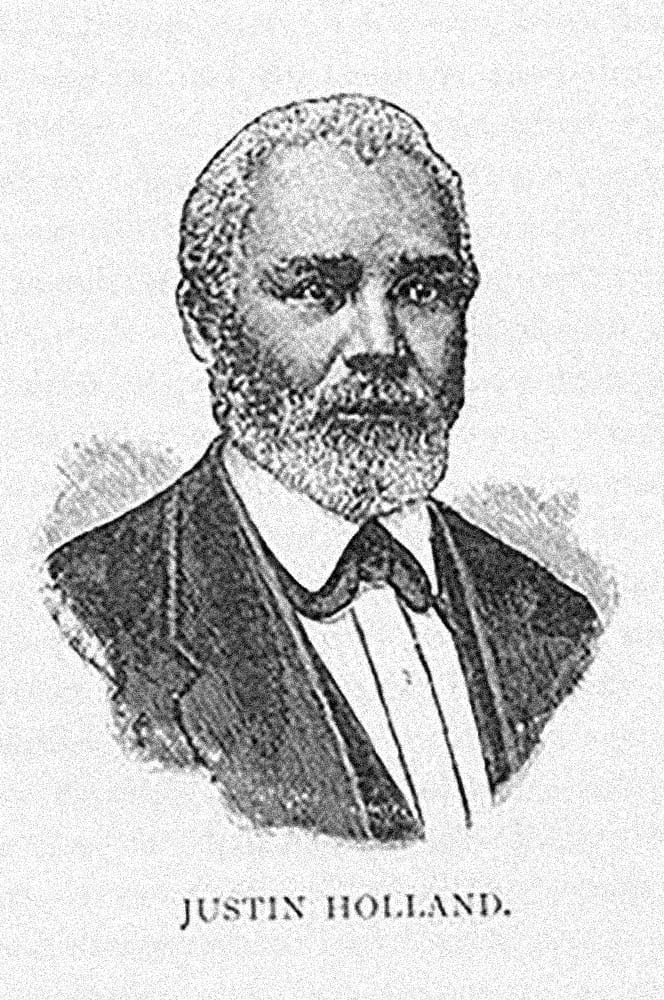
Clara Monteith Holland, daughter of classical guitarist Justin Holland, was an accomplished pianist and guitarist in the late 1800s. Little else is known about her life, but her father, aside from being an esteemed guitarist, was also a music teacher, community leader, and civil rights activist who worked to help slaves escape through on the Underground Railroad.
Fender is one of the oldest and most popular manufacturers of musical instruments today. They helped usher solid body electric guitars into existence during the 1950s which has since become their most influential period. From 1950 through 1959 Fender released three core guitars that were each meant to be at the top of the line with each debut, including the Jazzmaster.
The Jazzmaster arrived in 1959 and was a radical departure from both the Telecaster and the Stratocaster which were already very successful. Originally this guitar was designed to entice jazz musicians who were not typically known for playing with solid body guitars. The offset shape of the guitar was designed to be exceptionally comfortable while playing sitting down and balances well when standing up. The bridge featured a new tremolo system that offered greater tuning stability with a bar that was easier to reach.
At the heart of the guitar were its electronics which featured large single coil pickups that were similar in appearance to Gibson P90s but had a different method of construction and their own distinct sound. Jazzmasters also featured a unique “rhythm circuit” that when engaged gave a slightly darker tone to the guitar’s neck pickup. The rhythm circuit also had separate volume and tone controls which could be used to dial in a “preset” tone on the fly.
By 1980 the guitars were gone, production ceased and discontinued. Thankfully the Jazzmaster did not stay discontinued for long as today they still offer it in a variety of configurations and price points.
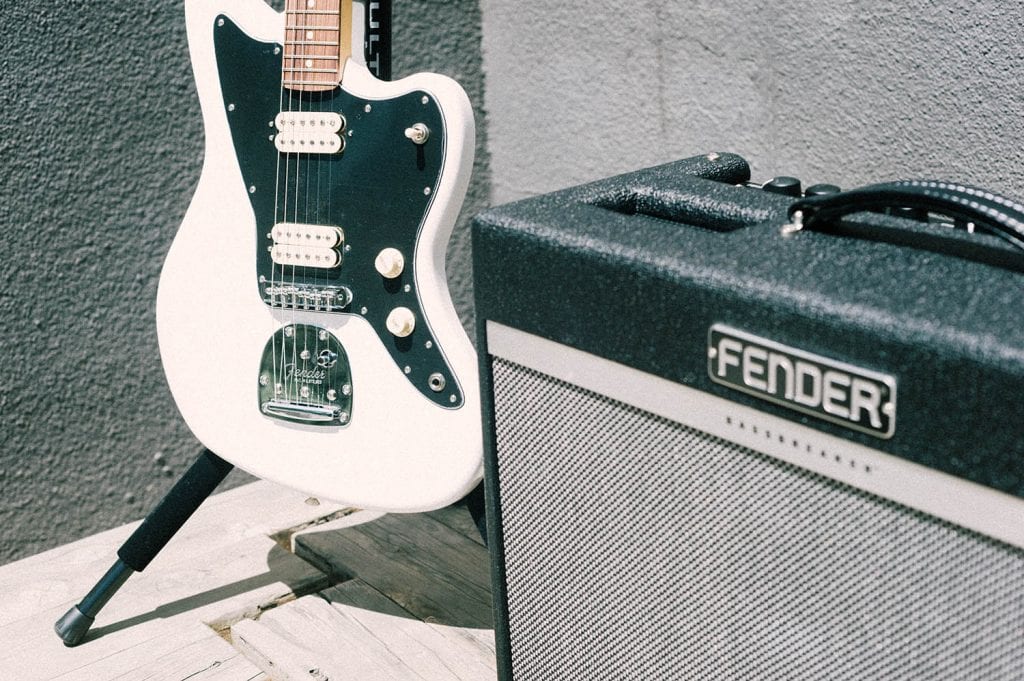
Renaissance
Although the Jazzmaster never quite took off with its intended audience, it began to develop an underground following with guitarists who were attracted to its unique sound and aesthetics. During the 80s into the early 90s Jazzmasters could be found for lower prices than vintage strats and teles.
A lot of players in the emerging indie and alternative rock scene began to use Jazzmasters. There were a lot of popular mods that players used to make their guitars a little more suited to their own needs but one of the more popular ones was changing the pickups.
Although the original pickups were highly regarded for their tone, some players preferred humbuckers which handled the higher gain tones with less noise and gave the guitars a thicker more modern sound. With this in consideration Fender unveiled the Player Series Jazzmaster.
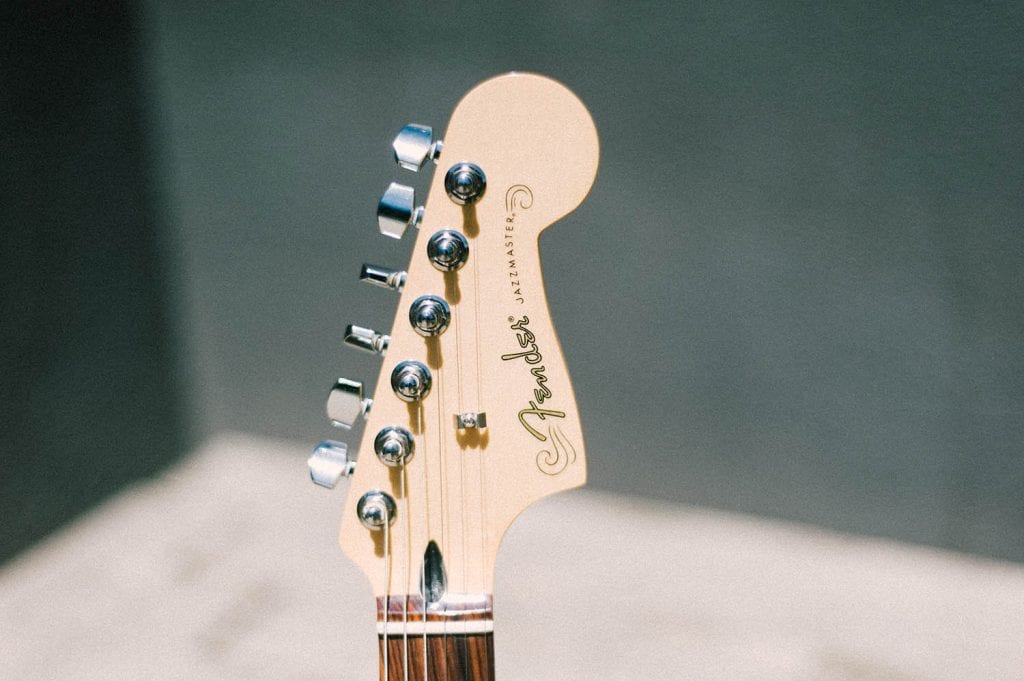
Introducing the Player Series Jazzmaster
Fender Player Series instruments are all made with pride in Ensenada, Mexico. The intent behind the series is to offer high quality affordable instruments that are built well enough to be enjoyed by players at all levels of ability. Overall the Player Series in general offers an excellent value for their relatively low cost when compared to Fender’s American-made instruments.
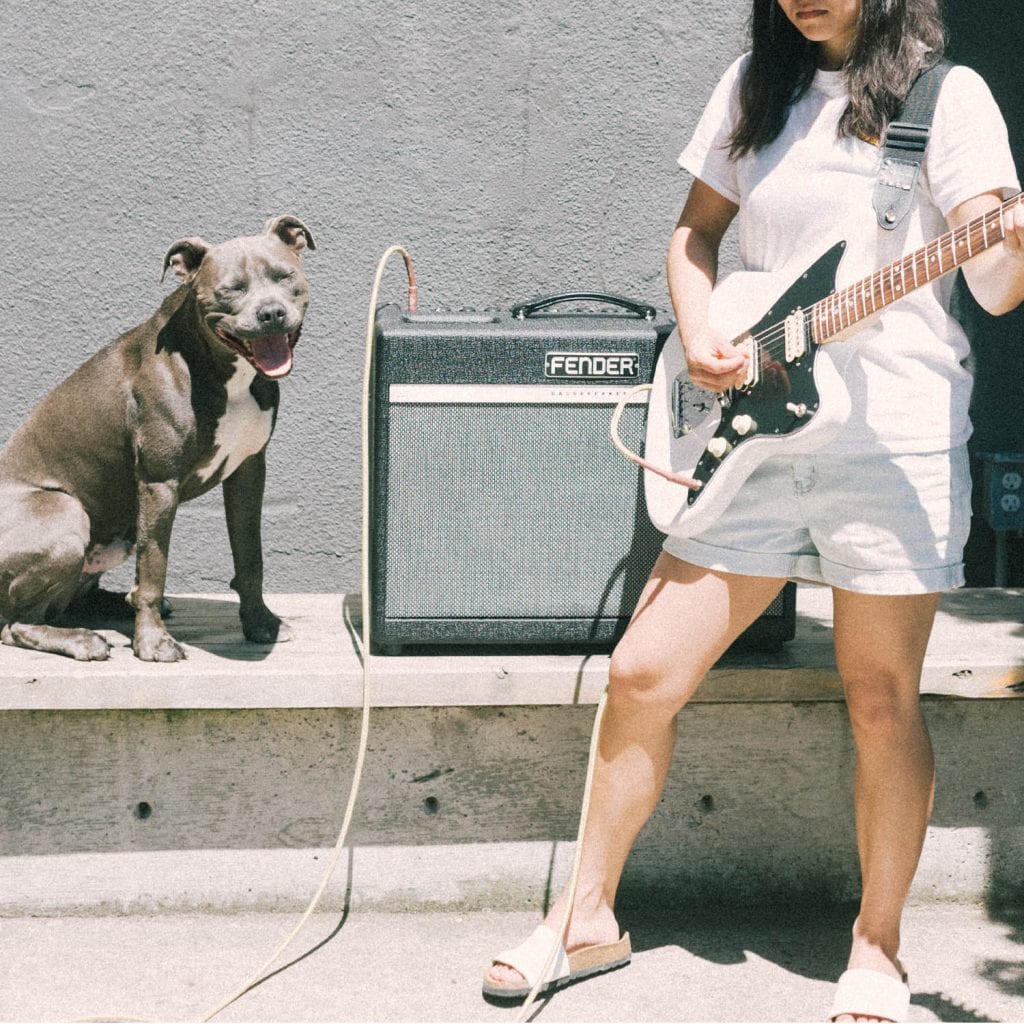
The Player Series Jazzmaster takes a modern approach while still offering a vintage inspired look and sound. The body keeps the original contours while the hardware gets a beefier bridge and set of tuners. Instead of the original single coil pickups, Fender provides a fantastic set of Alnico II humbucking pickups. The pickups have a nice amount of clarity with plenty of output to push a tube amp into overdrive. In lieu of a rhythm circuit you have the ability to split the coils via a push pull pot on the tone knob arguably making it the most versatile guitar in entire Player Series lineup.
With the push pull engaged I was able to capture that sweet single coil sound that made Fender famous in the first place, but with the humbuckers engaged I had no problem taking the same guitar to punk rock and even some rather extreme metal territories. It’s also worth noting that there is a hum canceling position available with using the guitar in its single coil mode.
The neck features a Pau Ferro fretboard which is currently a more sustainable alternative to rosewood. Pau Ferro has an appearance that is similar to rosewood but is a bit lighter in color ranging from reddish hues to deep chocolate brown. The grain tends to be a bit more intense/striking than rosewood. It is also less porous than rosewood and has a feel that is closer to ebony. Because the wood is less porous it does not need to be oiled as much or nearly as often, overall it requires little maintenance.
Previously, Pau Ferro fretboards were seen on the Fender Stevie Ray Vaughan signature model which was introduced in 1992 and it is nice to see Fender implementing a high quality wood with sustainability in mind on the Player Series guitars. The tremolo on the guitar is quite nice and holds up to extended use without slipping out of tune once it’s dialed in.
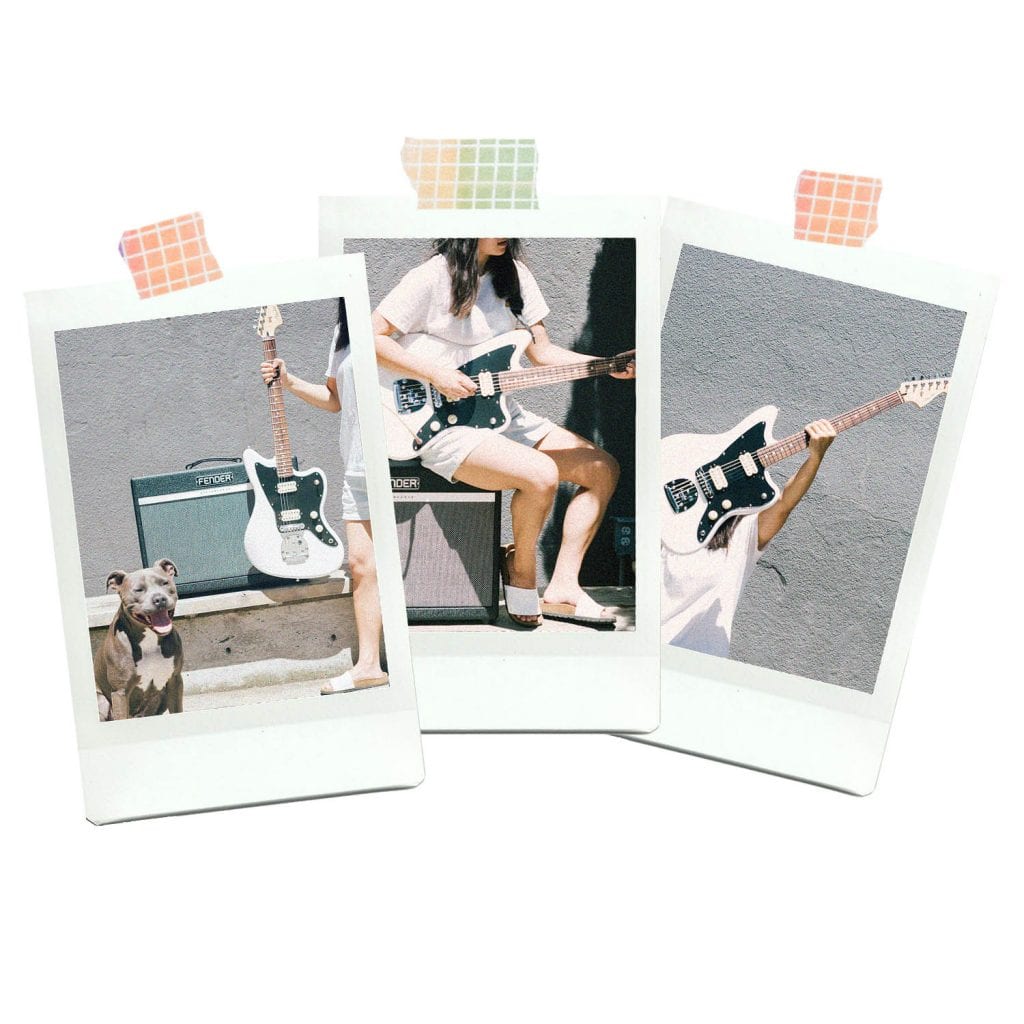
Impressions…
For this review I paired the guitar with Fender’s Bassbreaker 30R which, much like the Player Series Jazzmaster, is a versatile powerhouse of its own and one of Fender’s few High Gain options. Once I unzipped the gig bag I was in awe of just how cool the instrument looked. I felt as if it would look good on stage with just about any band regardless of genre.
One of the things that surprised me the most was how comfortable it was to play, and as a result I played it as often as I could have. For the price point, the pickups were among some of the best I have heard and I would likely not consider changing them for quite some time, if ever. I also found the sheer range of tonal options quite useful and inspiring which overall, made for a guitar that was very hard to put down.
Leila Sidi knew it was risky to build a pink, short-scale guitar. “I was worried about falling into the stereotype of building a pink guitar for women,” says Sidi, owner of TunaTone Guitars, over the phone from her woodshop in Edmonton, the capital of Alberta, Canada. The color was inspired by the work chair she sits on every day while cutting, sanding, and shaping wood—dusty rose with flecks of grey from the daily wear and tear of the shop.
When she stumbled across a similar shade (“Mars Red”) in a paint store, she knew she had to take the creative risk. “I recognized that people were going to interpret a guitar in that color in whatever way they wanted, but I also knew I was going to build a serious instrument and it was going to look good,” says Sidi. “So I did it. And a vast majority of my orders for next year are in that color.”
As a luthier, Sidi isn’t afraid to push boundaries. She designs her TunaTone guitars in Mars Red, black and white, and natural finishes that have a distinct, mid-century-meets-futuristic feel—a look she credits to her love of “1950s and ‘60s guitars sold in Sears catalogs.” Sidi’s style emerged out of her first project as a luthier, a replica of a friend’s 1969 Fender Musicmaster Bass that had been used mostly by children in an elementary school.
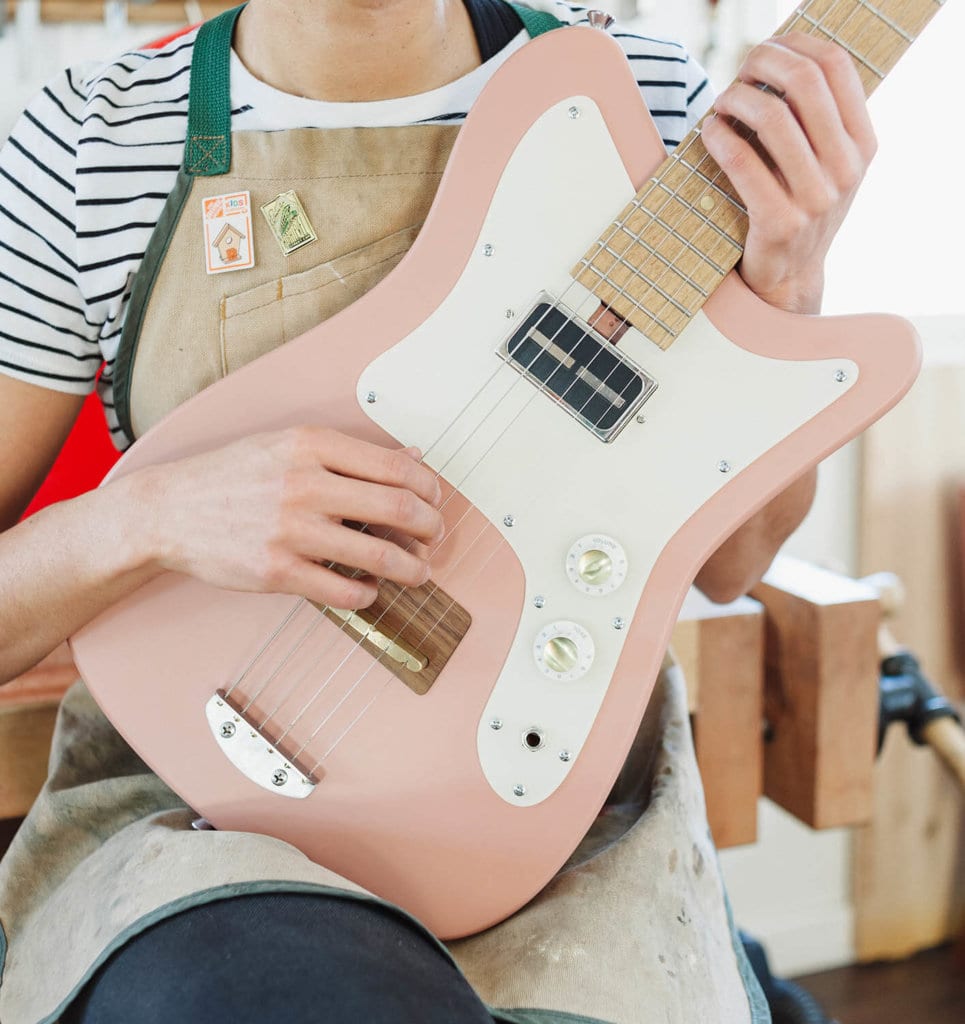
“Guitar companies like Fender and Gibson would make short-scale basses, but they wouldn’t include them in their professional series,” Sidi says. “Part of their reasoning was systematic. The Musicmaster Bass was made for children to learn on, or for women. So it was never considered a serious instrument and builders didn’t pay the same attention to detail that they would with full-scale guitars.”
Originally, short-scale guitars were designed to be cheap and accessible, so they didn’t have a high-quality sound. Sidi took this as the ultimate design challenge: to create her version of a short-scale bass for women. “As I was thinking about who short-scale instruments were made for, I realized I wanted to build smaller scale, lightweight guitars that are serious instruments, but also accessible for all body sizes,” Sidi says. “Most short-scale guitars are built for large hands and male bodies. I want to build beautifully-made, high-fidelity instruments that are comfortable for the rest of us.”
Sidi leaned on a community of woodworkers and artists in Edmonton, where she grew up after emigrating from Nairobi to Canada with her family. Growing up, she always enjoyed working with her hands, starting out as a bike mechanic before switching to woodworking. Currently, she shares a workspace with her mentor, Dion James, who crafts acoustic guitars under the name Dion Guitars and was especially supportive of her goal to build a guitar from scratch. The guitar took Sidi a year to complete, partly because she was only able to work on it between jobs, and partly because she had to learn from her mistakes.
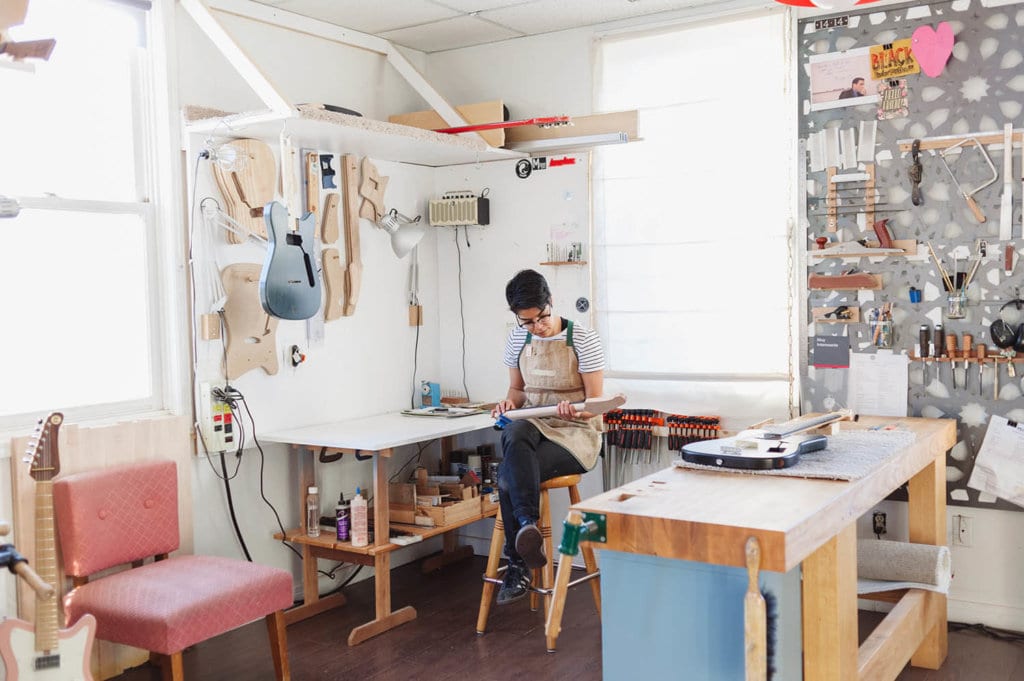
“The creative process is pretty emotional for me,” Sidi says. “It’s a good feeling to see my skills grow, but it can also be very demanding.” She admits she has ambitious standards when it comes to her designs, considering her seven years of experience in woodworking, which is relatively low by luthier standards. “It can be frustrating to see details that I want to achieve, and then having to do it and redo it to get what I want. But the process teaches me a lot about myself. I’m always dealing with the potential for failure. Eventually, I have to learn to accept my fear of failure and be able to keep going.”
Sidi is quick to point out that designing, prototyping, and building a guitar is a collaborative effort. Though she builds each part of her TunaTone guitars by hand, she relies on friends in graphic design and electronics to help her learn 2-D modeling and guitar wiring. Being a queer woman of color in the guitar world can be a challenge, especially as a builder, and Sidi is grateful for the support she’s found.
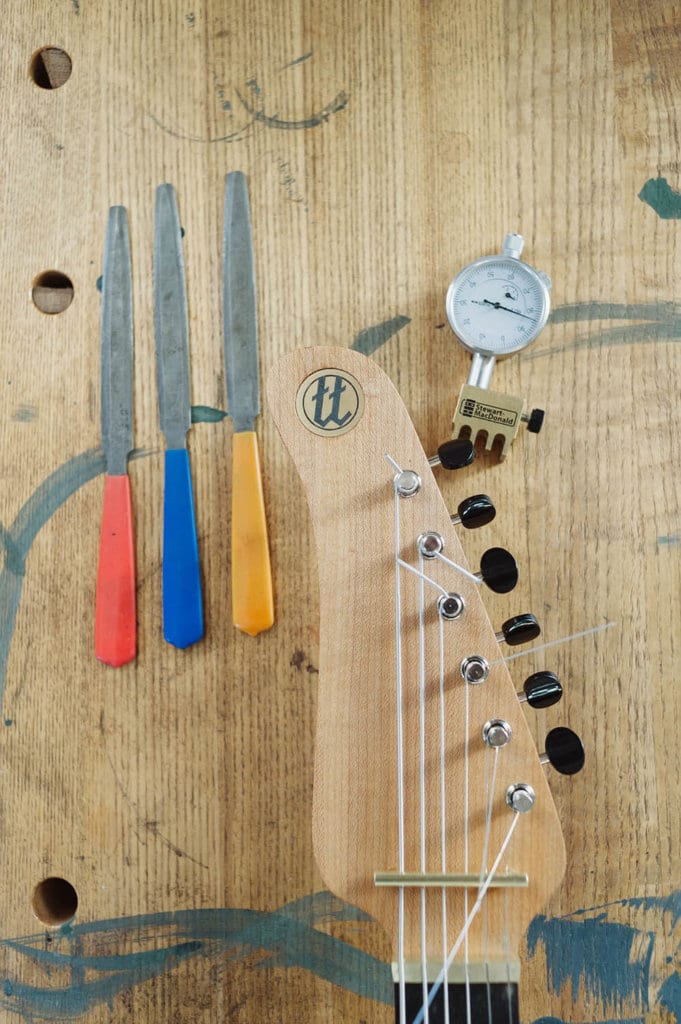
“As someone who embodies a lot of different identities, I have managed to build a community of people around me who have been so generous with their collaboration,” Sidi says. “Every single one of my collaborators are white, cis men, and they are sharing skills that they have acquired with me. They’ve been willing to uplift me and help me get better at my craft.”
This approach to mentorship is part of Sidi’s belief in “designing for the world we want to live in,” where an industry typically dominated by men, and their designs, is challenged by everyone involved. Inspired by the work of the Design Justice Network, a collective out of Toronto that looks at how design affects gender, race, and the environment, Sidi strives to be socially and environmentally conscious about every TunaTone guitar she builds, using sustainably-sourced wood from nearby Turtle Island, and screws and brass from local shops in Edmonton.
“I don’t subscribe to the idea that the more exotic the wood is, the better it is,” Sidi says. “In the guitar world, they’ve really normalized and upheld exotic woods as superior in quality. So many of those woods are facing endangerment or are harvested unethically.” She notes the deforestation of Brazilian rosewood, a hardy wood often used for fretboards, and the long list of endangered woods in Canada and internationally. “Guitar building isn’t the main reason why certain woods are going extinct, but I think we do have a collective responsibility to think about what materials we are using and how they are being extracted from the land.”
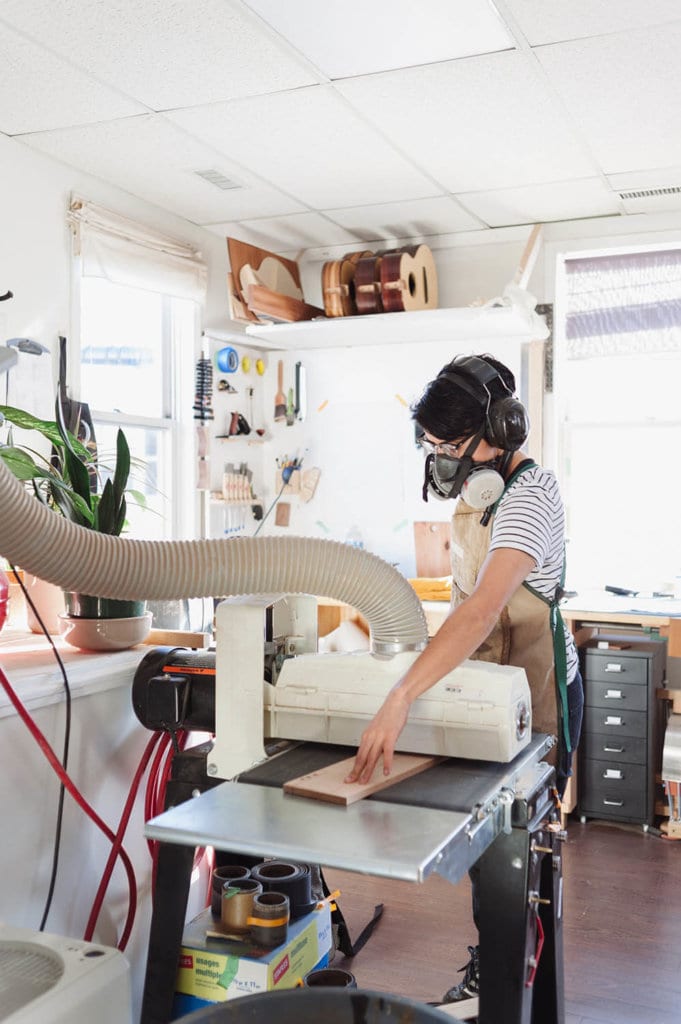
Sidi’s focus on sustainable materials and practices has been informed by her inspiration of the Tiny House Warriors, an organization building tiny houses to stop the Kinder Morgan TransMountain pipeline from crossing unceded Secwepemc Territory, and Indigenous Climate Action, who work against deforestation and climate change. “There are choices that I can make that may seem small, that allow me to be less damaging to the environment and not contribute as much to colonial practices,” Sidi says. “Eventually I would like to cut down my own trees and be involved in harvesting my own wood, but for now, I try to do what I can to act responsibly about my materials.”
Sidi has also found support through partnerships with Femme Wave and Sled Island, two music festivals based in Calgary, and recently facilitated her first woodworking class at her shop. Most of the participants were friends—“queer and gender non-conforming folks”—and she likens the experience to “bringing people I associate with home into my home.”
On an international level, Sidi is starting to feel like a part of the guitar building community, meeting some of her heroes and fellow luthiers at guitar shows, many of them women. “In the world of luthiers, there are lots of women who have paved the way and made space for builders like me,” Sidi says. “I’ve definitely benefited from their work.” Luthiers like Maegen Wells and Linda Manzer are two examples. When the the Woodstock Invitational Luthiers Showcase recently honored Manzer with its annual lifetime achievement Traditions Award, she invited every women luthier present to join her on stage. Sidi sees this as a necessary shift, where women are being admired for their luthier skills and are supportive of one another in the community. “I really feel like builders I have followed and looked up to are starting to see me as a peer,” she says. “I didn’t expect that and I didn’t even know I could hope for that, so that’s been a super wonderful surprise.”
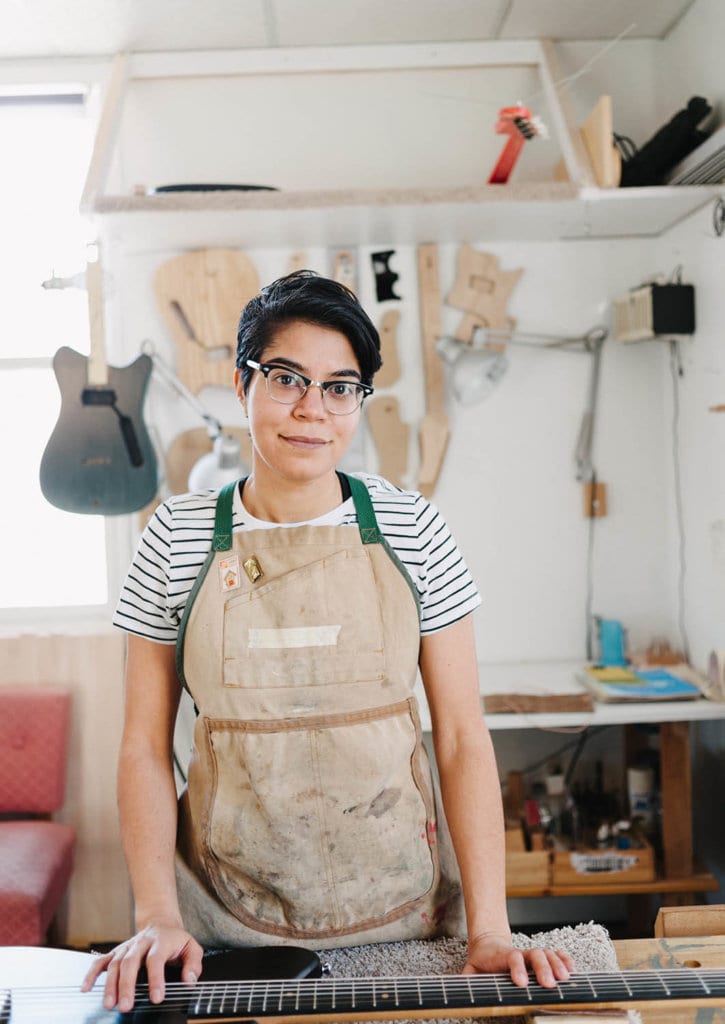
There is one area where Sidi does feel left out, which is actually playing her guitars. As a non-player, Sidi has to put absolute trust in her skills as a builder, working on a guitar for months at a time before it comes alive. “Once the guitar is done and it’s being played, there is this feeling of letting go. In that moment, it becomes something separate from me,” she says. Sidi compares the experience of hearing one of her guitars being played to using a well-made tool in her workshop, where you can feel the craft and skill that went into it. “It feels like a gift to hear someone play an instrument I’ve made,” she says. “It’s this one part of its expression I could never give to myself, and in a way, the person playing it is giving a gift to me.”
With a full build list for 2019, TunaTone guitars for sale in shops in the United States and Germany, and a few new designs she’s dreaming about, TunaTone is a guitar company on the rise. Sharing a shop with her mentor, and her scrappy tabby, Tuna, who inspired the TunaTone name, Sidi feels firmly rooted in her shop in Edmonton. The staunchly conservative political environment of the region pushes her to seek out mentorship and community, creating a space where skills are shared and deep connections are made through art.
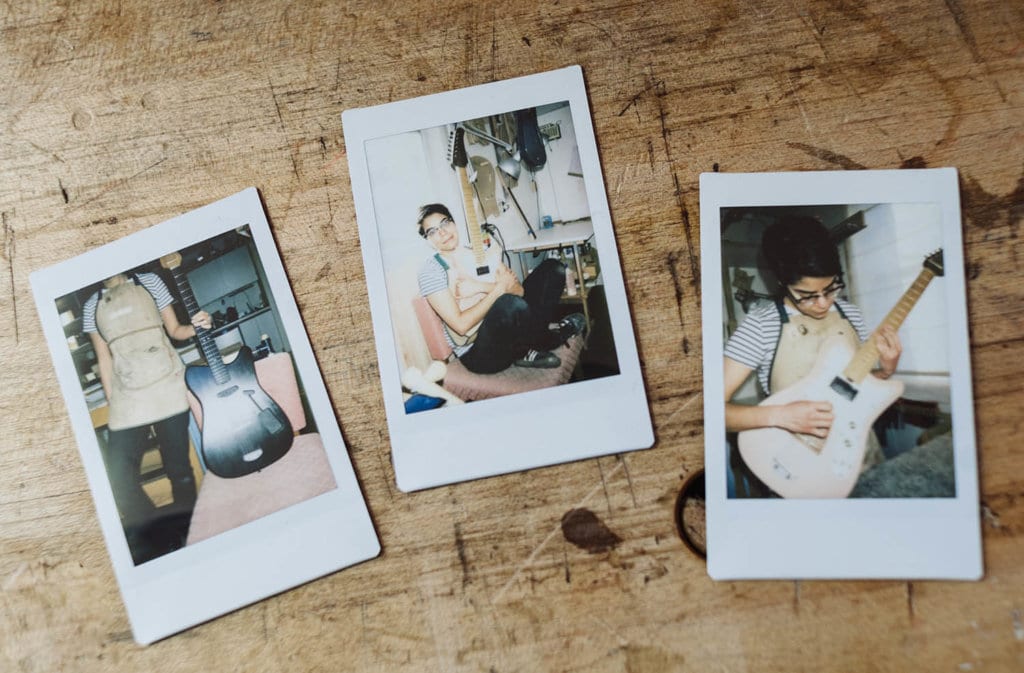
And that worrisome pink, short-scale guitar? TunaTone’s Sidi is slated to build five more this year for musicians all over the world, a prospect she finds exciting; a pink guitar women players can shred. “It’s almost the difference between a patriarchal idea of femininity and queer femmes owning it so hard,” she says. “I want to build guitars that are like that.”
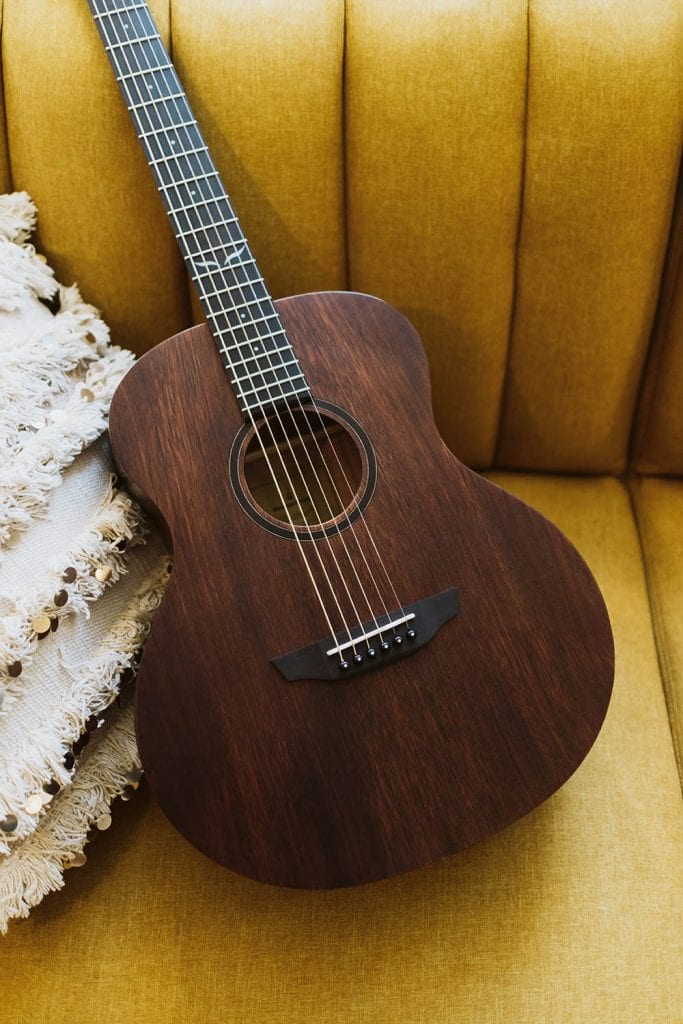
We can all feel good financially and morally about investing in the “Oliver Junior” as a beginner or travel style guitar. The price-point puts this little cutie (available with or without on-board Sonitone Fishman pickups) into the mid-low range, making it pretty accessible, and tending to a notable gap in the acoustic guitar market. Orangewood now pairs with its own third party financing company, setting up payment plans for those who can’t afford to purchase an instrument outright, which lets face it, is most of us. In cutting out all middle-persons, centering womxn primarily in their marketing strategy, and bringing the product directly to your doorstep, a different kind of guitar company has arrived.
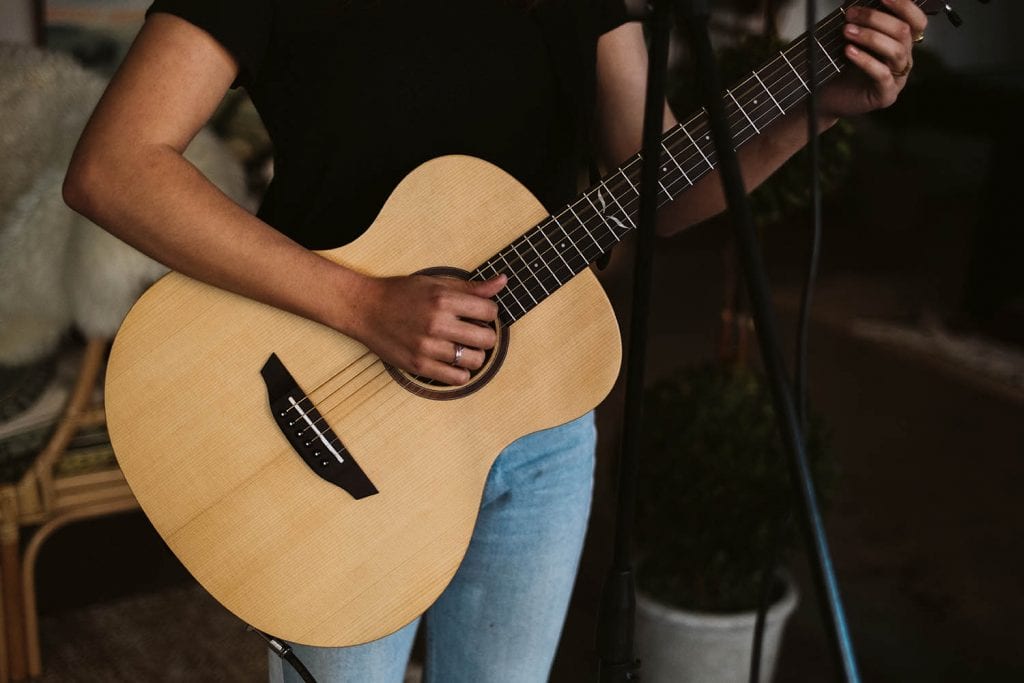
The spirit of the overall tone, and resonance of an acoustic guitar lies within the materials used to create it, each piece of wood holding its own story. Each guitar becomes a wooden mirror, a reflection of the conditions in which it was grown, cultivated, set up, fine tuned, and loved until the point that it gets to your hands. Orangewood took all of this heavily into consideration, when creating the Oliver, and then the Oliver Jr. model, choosing bright tones, smooth playing action, light-weight materials, and a backpack carrying case to make your adventures a little easier.
I enjoyed the Sitka spruce body, which due to its large trunk and straight grain, has the perfect strength/weight ratio. With the current manufacturing technologies, the ability to now create and distribute a super fairly priced acoustic guitar, perfectly assembled, set up, tuned, and equipped with picks, exists. No messing around, open the box, take it out and play it. If it doesn’t fit your needs, no worries send it back! You have 30 full days to make your decision, and the shipping is free.
The company itself was started by a pair of brothers who emigrated to Orange County, California from South Korea in 2004. After being manufactured overseas in China or Indonesia, depending on the model, the guitars are sent to Los Angeles / Orange County, CA for a complete setup, tuning, and overall quality control.
The company makes no effort to hide the fact that they utilize overseas manufacturing to keep their price point down. A highly established and well maintained online marketing platform has pushed this up and coming guitar company into the recent spot-light, fueled by primarily womxn guitarists. Their web-marketing features well curated videos of players of all styles and skill levels, embracing an often overlooked diversity that thrives especially amongst our youngest guitarists.

Speaking of the youth, the effort to integrate a charitable giving program directly into their overall business model shows that Orangewood cares about more than just making a buck.
Every sale made puts money back into our own communities, helping to nurture our underfunded and disappearing, or stretched thin school music programs. There has been a universal public outcry in regards to the defunding of music education programs. Orangewood has taken upon itself to provide for the creative needs of our youth, helping provide the resources necessary to nurture new and existing school programs.
The future of music depends on companies stepping up, and using their voices and resources to keep the music alive. The hope is that others will follow in succession, providing instruments for, and filling the air with the sounds of young shredders across the globe. Orangewood is a company on a mission, and a potent one at that. Head over to orangewoodguitars.com to learn more.
C.F. Martin and Co. have been producing some of the finest acoustic guitars available for more than 180 years. They have made significant contributions that help define the instrument into what it is today. Notable examples include the invention of the dreadnought and their use of “X-bracing.” Together these developments completely changed the entire industry.
Though they are steeped in tradition, they continue to innovate even to this day. Martin has a wide selection of guitars with different shapes, sizes, and materials available, suiting the needs of virtually any guitarist. The most prominent characteristics of what can be described as the “Martin sound” is the amount of projection, bass, clarity, and piano-like sustain that embodies their instruments, making them a popular choice with musicians across the globe.
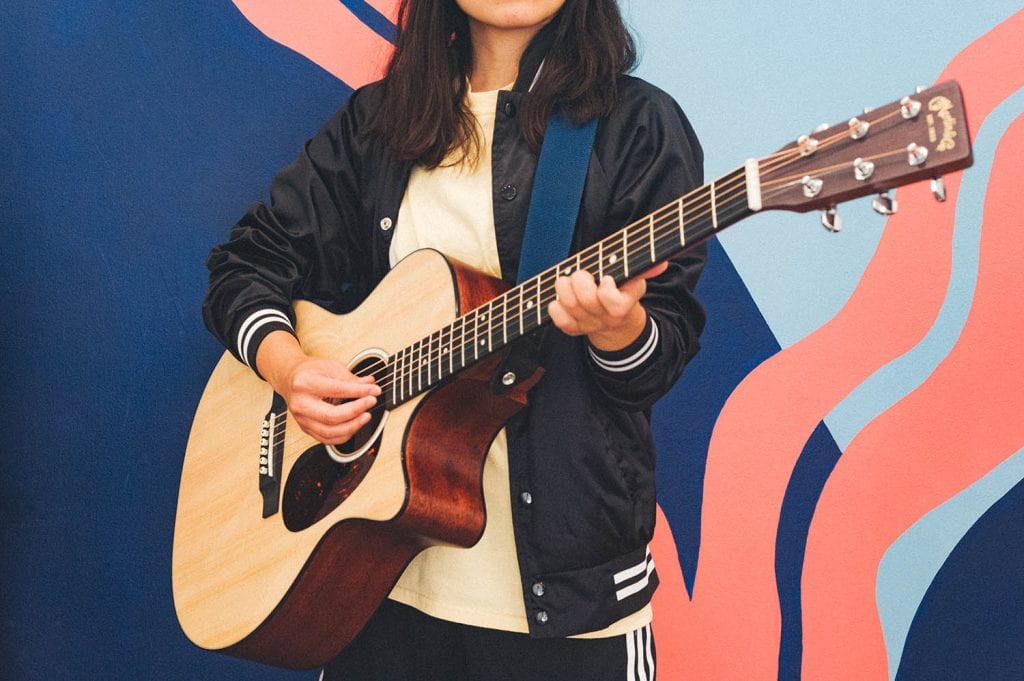
The Road Series
The Road Series guitars represent an excellent value at a lower price point than their core lineup. While these guitars are a fine choice for anyone looking to invest in a high quality acoustic, they are exceptionally tailored to the needs of touring musicians who look for features such as an inspiring sound, overall comfort, solid wood construction, electronics suitable for gigging and recording, as well as a reliable case or gig bag.
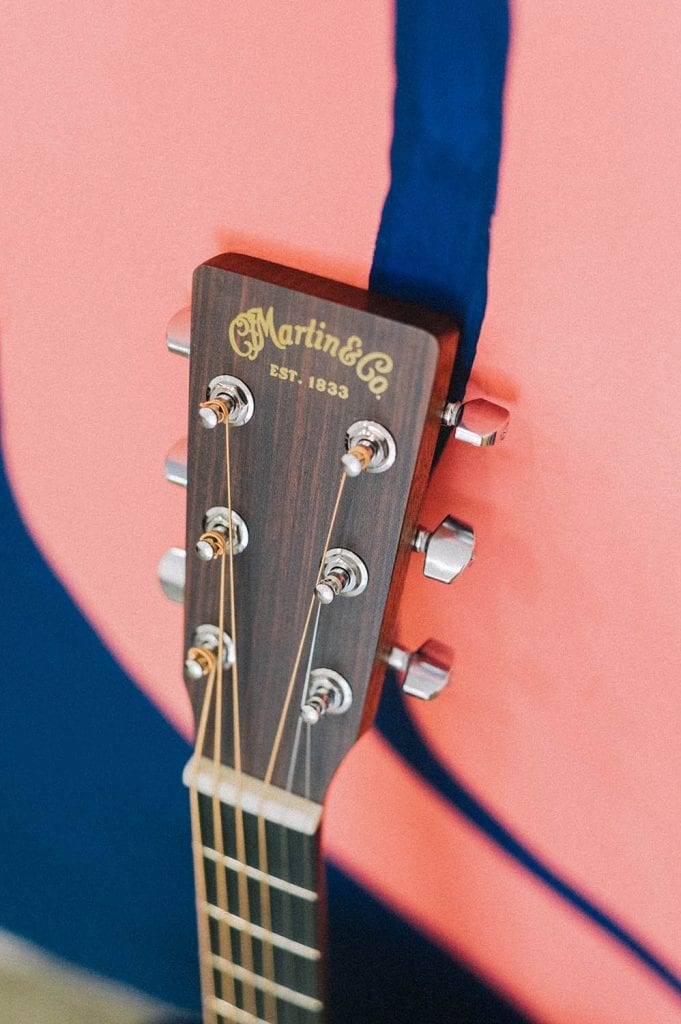
Grand Performance, Unplugged
The GPC-11E is a grand concert sized acoustic guitar. It is a bit more compact when compared to the size of a dreadnought, yet it still offers a strong bass response and wide dynamic range. The narrow waist of the guitar shifts the extended lower bout in such a way that makes it very comfortable to hold for just about anyone.
The neck is joined at the 14th fret and the cutaway makes the upper notes easily accessible. Unplugged, the tone of the guitar is incredible thanks to the solid Sitka spruce top and sapele back and sides. The advantage that this provides is a guitar that can resonate all over because it is not hindered by stiffer laminated construction, which can be made up of several layers of wood “sandwiched” together.
Instead, the single layer of solid wood allows it to have a faster response to the vibrations induced by the strings, which in turn helps contribute to the amount of bass and sustain the guitar has. The top of the guitar is made of Sitka spruce which is known for its clarity and is a popular choice across many acoustic instruments. The back and sides are constructed of sapele which is often used as an alternative to mahogany due to its remarkable similarities both visually and sonically. The slightly absorbent nature of both of these woods is best characterized by strong fundamental responses with highs that are detailed yet soft enough to retain a nice amount of warmth.
Together, this combination of woods provides a sound that is very balanced and records well. I found the guitar to have a very generous amount of piano-like sustain that responded really well to how softly or loudly I played it. Every note popped without an excessive amount of brightness, and the overall character was quite inspiring. There is a certain warmth to the overall timbre of the instrument that is largely provided in thanks to thick bass that is present making it suitable for both solo pieces and within the context of a larger mix.
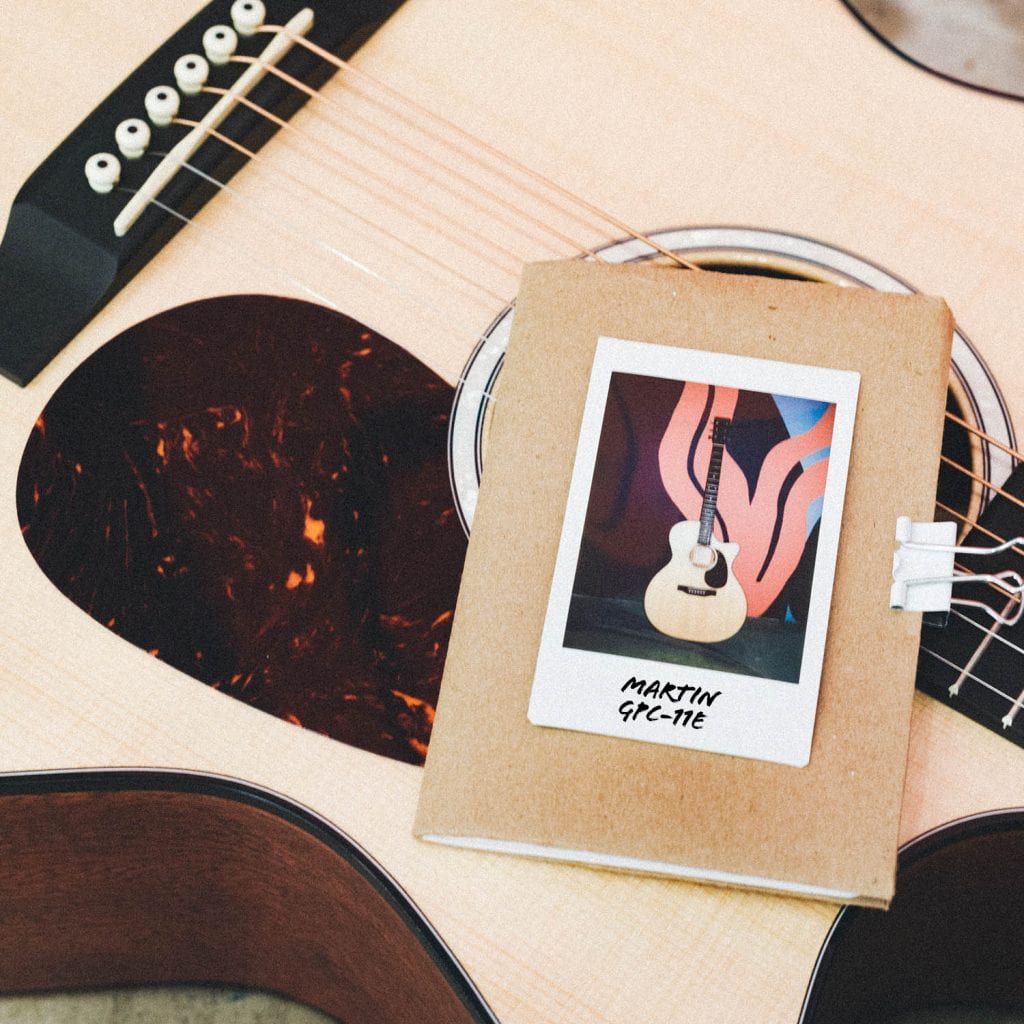
On stage and in the studio with the Fishman MX-T
At first glance you might not even notice that the guitar is equipped with any electronics at all because the majority of the Fishman MX-T system is cleverly hidden inside the sound-hole, making it practically invisible to the audience. This clever layout minimizes the amount of wood which is normally drilled away to make room for such things. Inside you will find a built-in chromatic tuner with an illuminated color display.
The display is nice and bright, but most importantly very easy to see with a quick response. Engaging the tuner bypasses the output of the guitar, making it easy to tune on stage without interruption while also giving you direct access to a built-in mute should you need to quickly turn off the guitar. The pickup captures all of the warmth and sparkle that this guitar has to offer and is controlled by one volume and one tone control located towards the top of the sound-hole.
The controls are just as easy to reach as the tuner and can be operated without even looking at them. These controls are useful for getting a good signal to noise ratio and fighting feedback when playing live as well as when recording direct in the studio. The battery compartment and the input jack are located towards the lower right side of the guitar.
At just 22 years old, Francesca Simone (Simone being her middle name, which she goes by casually) is already proving herself to be a trailblazer. With her soulful shredding and laid back Los Angeles vibe, Simone has a style of sound all her own. When one of her viral performance videos caught the eye of Beyoncé’s music director for Coachella, Simone’s world exploded. She soon found herself playing guitar solos alongside Beyoncé at one of the biggest festivals in the world, earning a regular gig on The Formation World Tour. She recently joined R&B artist Kehlani’s latest tour as lead guitarist, and just released her first single, a dreamy instrumental track called “Still.”
We talked to Simone from her apartment in L.A.—where she’s currently working on new material—about discovering her influences, channeling emotion through her music, and the value of taking creative risks.
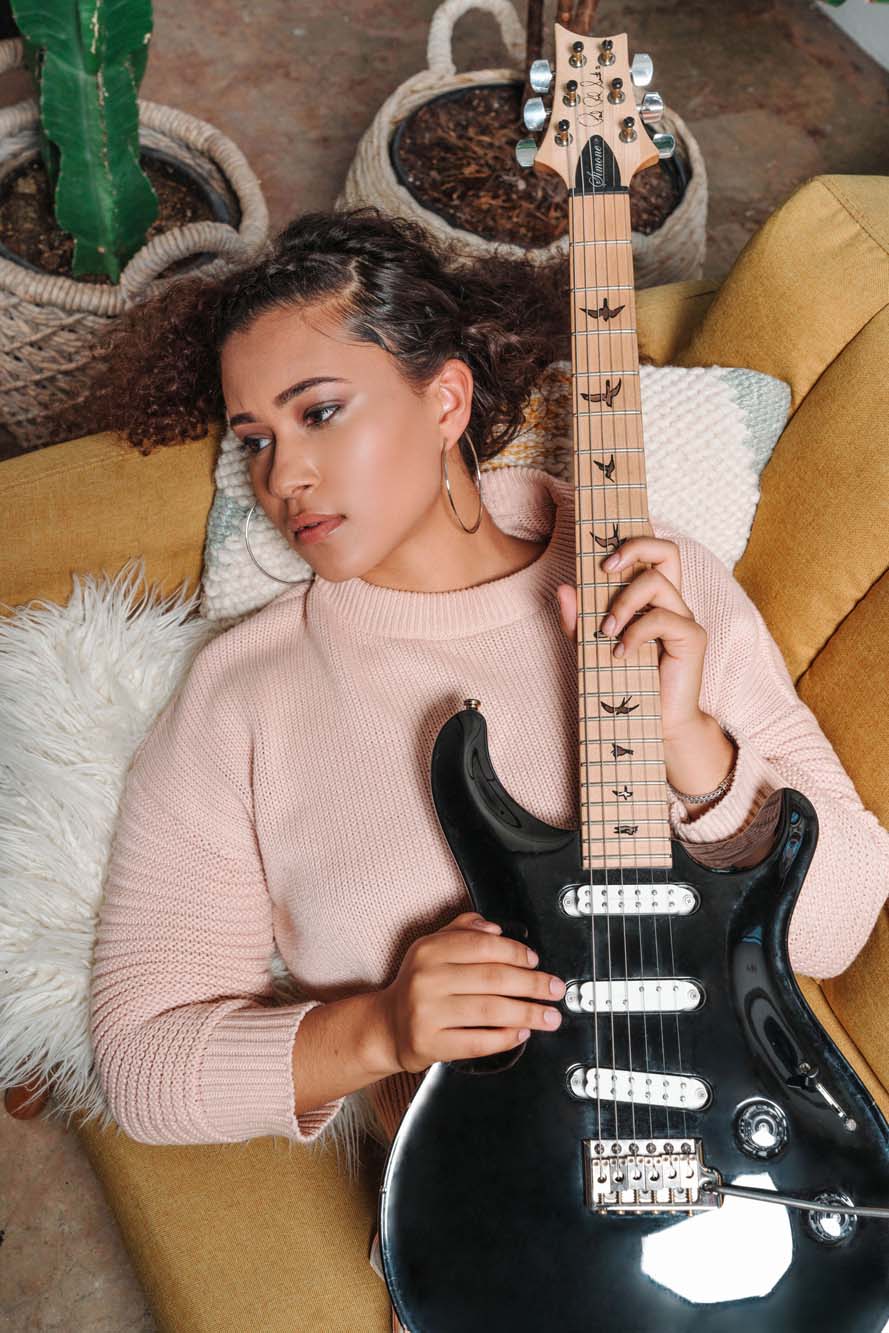
She Shreds: Let’s start with influences. You’ve mentioned Carlos Santana in previous interviews, but are there others who have shaped you as an artist?
Francesca Simone: Definitely Santana. He’s why I started playing guitar. In high school, I started studying jazz more seriously—musicians like George Benson, Pat Martino, Pat Metheny. Right now I’m really into this musician named Plini; he’s super dope, he mixes metal with melodic guitar. There are also some cool guys on YouTube that I listen to and transcribe.
You seem to be into a lot of different genres, from jazz to rock to metal. How do you feel your influences filter into your own music?
I think I’ve developed a certain sound. When I learn a new riff or lick, I can play it and it will always feel like Simone played it. I think at this point, listeners can hear my sound and know that I’m playing. Any time I learn something, I’m always expanding my vocabulary, but it will also always sound like me, like the way I play.
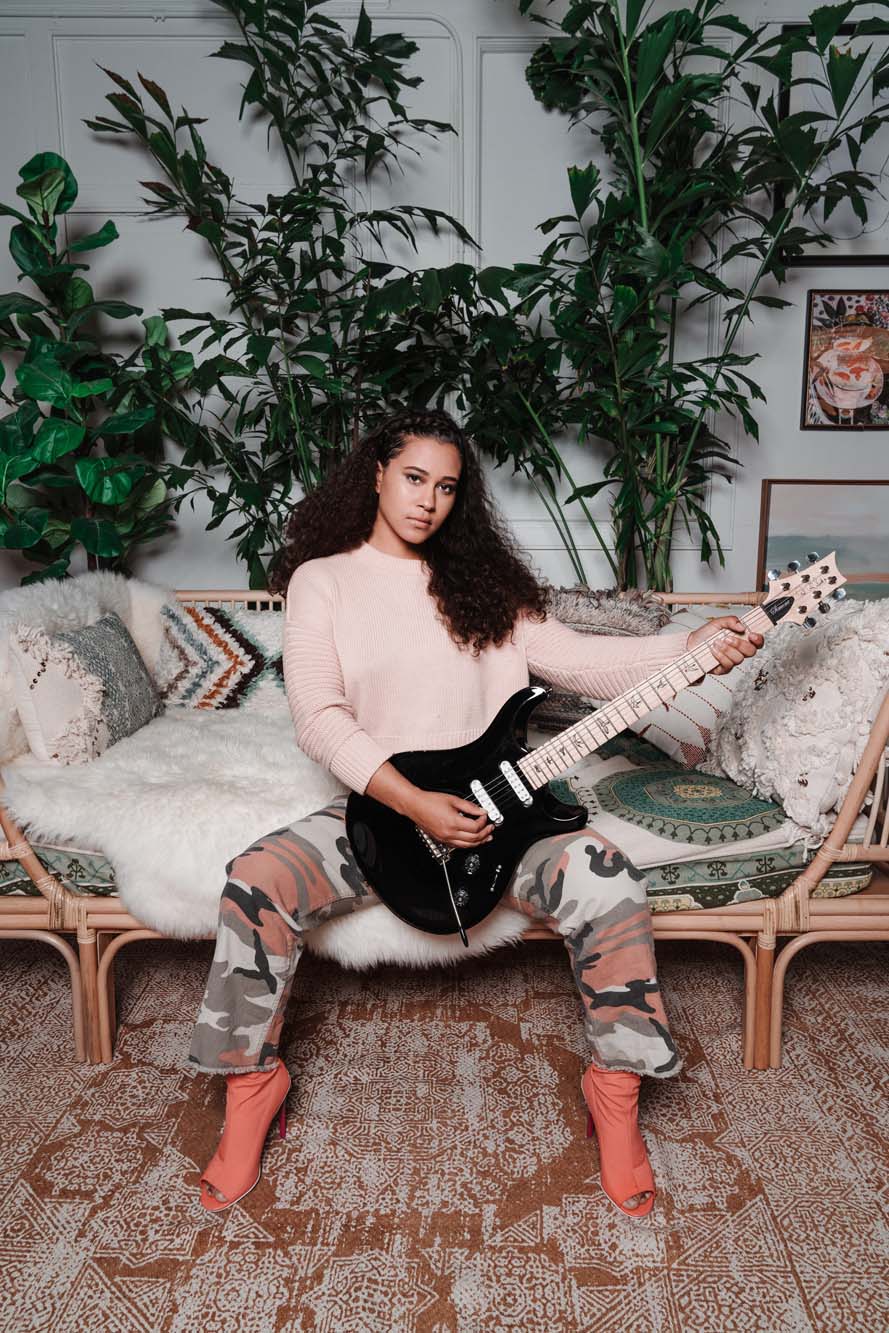
Yeah, I think a lot of your music has “feel,” that place where you can be in the moment and not overthink. How do you find the feel in your music?
I think it happens with every art form—you get the technical aspect of it down and you stop thinking. The music just takes over me and it’s like I’m not even playing the guitar. I’m so in the moment and able to let go of all my fears, not worrying about, “Did I play this right? Do I look right?” I think that’s when people really feel something.
Because a lot of my music is instrumental, it’s really important to have a story in [my] head and [to] try to channel emotion. When I had a solo on the Formation tour with Beyoncé, it was during one of her costume changes, so it was just me on stage. I played a medley of three different songs: one of the Weeknd’s songs, “New Slaves” by Kanye West, and Beyoncé’s “Don’t Hurt Yourself.” There was fire on stage behind me. It was super epic, but also really dark. Before I went on stage, I would think of something that made me feel sad or angry and just go out with tears in my eyes, ready to channel my emotions. People really need to feel that anger, or any emotion, even if it’s just through the guitar.
That was something I learned from being a part of that tour. Everything that you do in art, you have to channel that emotion. As humans, we’re emotional, so that’s the only way you can really connect with anybody.
How did you feel about getting the opportunity to perform with Beyoncé on the Formation tour and at Coachella?
If you’re a musician, the highest place you can be is on stage with Beyoncé. I got the call [for Coachella] when I was 19, so it was a complete shock to me. I went from playing for 100 people to playing for 100,000 people. I had to grow up fast and learn a lot really quickly. It was stressful, but I learned so much and it really was the best experience of my life. It’s made me a better performer. I used to have stage fright. I would be like a statue on stage. But I worked really hard in front of mirrors and my stage presence got better, especially doing that solo.
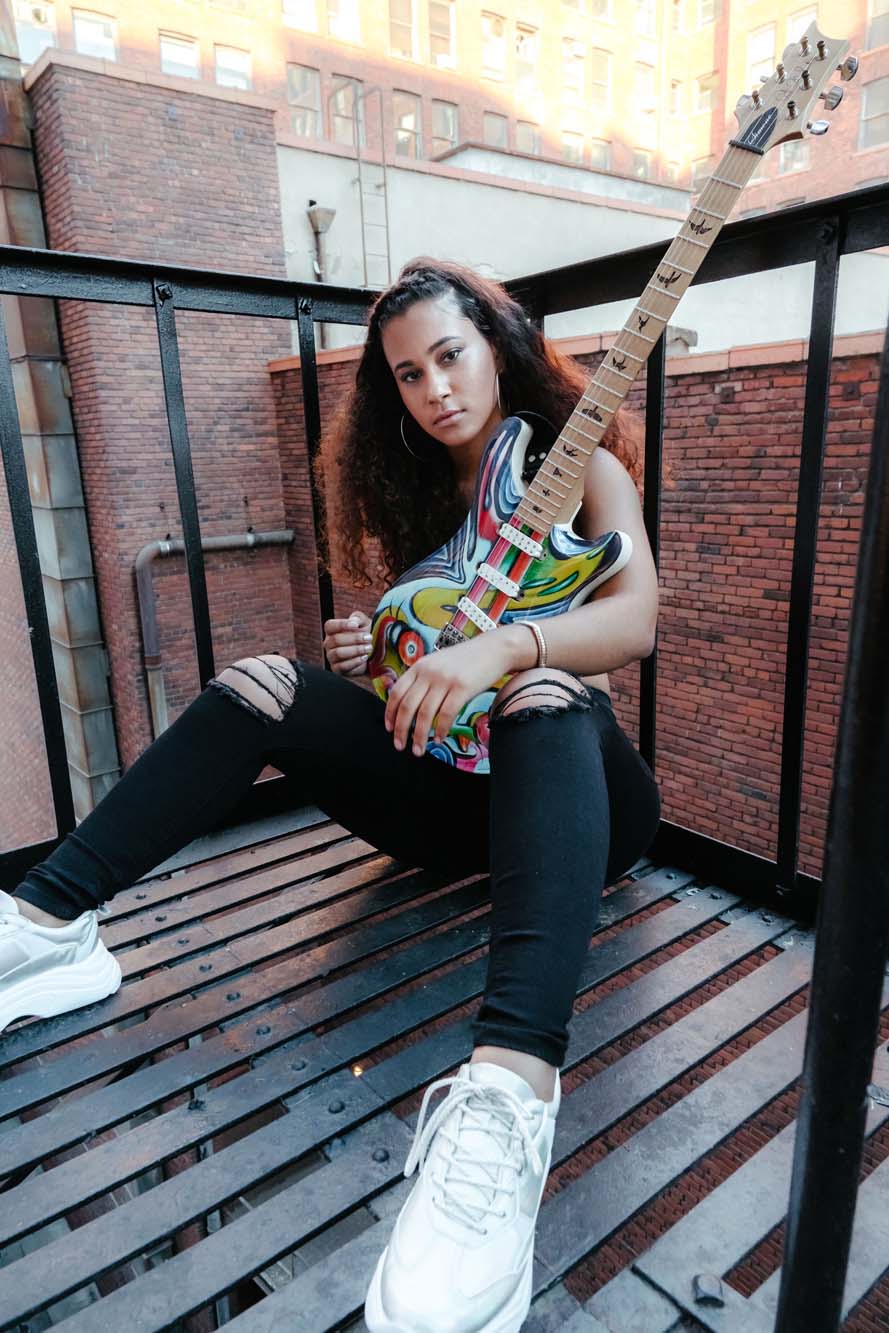
You have a lot of amazing collaborations with other artists on your Instagram, including guitarists like Melanie Faye and R&B singers like Kalin White. Do you tend to seek out collaborations with artists working in other genres? What draws you to collaborate?
Artists are like paints. When you mix two artists together, you get this really unique shade. There could be an artist that is super hip hop, and I come from a more melodic guitar vibe—what would it be like to mix the two together? Genre blending is so important these days. All the genres are blending together and it’s hard to classify artists anymore. Everyone is just doing music. So when I’m collaborating with artists, I’m always trying to bring my most authentic self to the table and be aware of where I am today. I want to express myself through my guitar in the most genuine way.
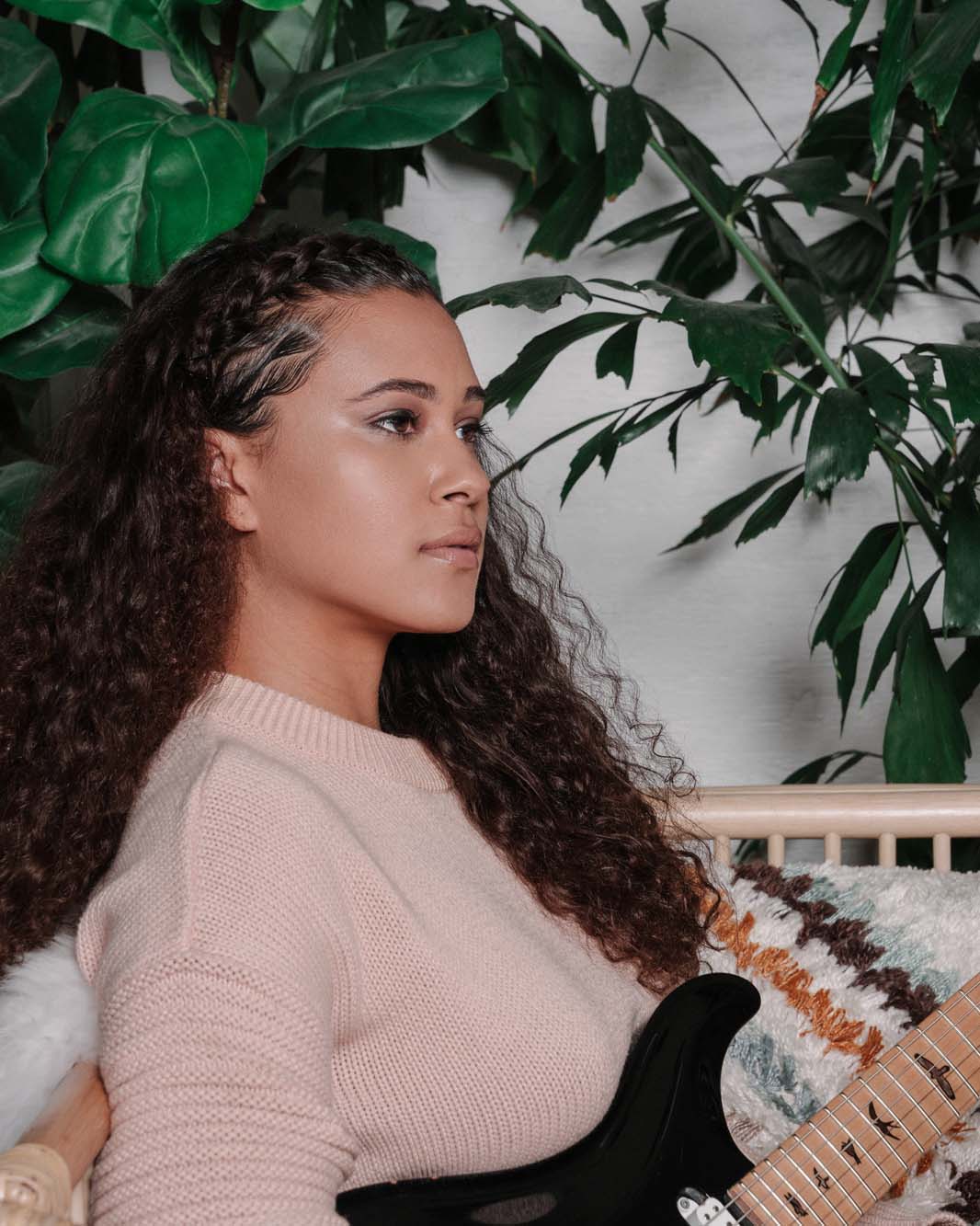
I’ve spotted your amazing kaleidoscopic guitar in your videos and live performances. What’s its backstory?
After I wrapped up a tour, I got my first place in L.A. in an apartment complex. My neighbors were husband and wife; the husband plays jazz saxophone, and the wife is a painter named Nevena Binney. We became really good friends and one day I had this idea [for Binney]: what if she painted my guitar? She was up for it, so I gave her an outline of my guitar drawn on a piece of paper. She painted a piece on cardboard and we took a picture of it. Then we had a vinyl wrap company make a printed sticker. We took off the strap, knobs, and strings of my guitar to put on the sticker, and then when it was all done I named the guitar Jupiter. I love bright colors so I definitely feel like it represents me.
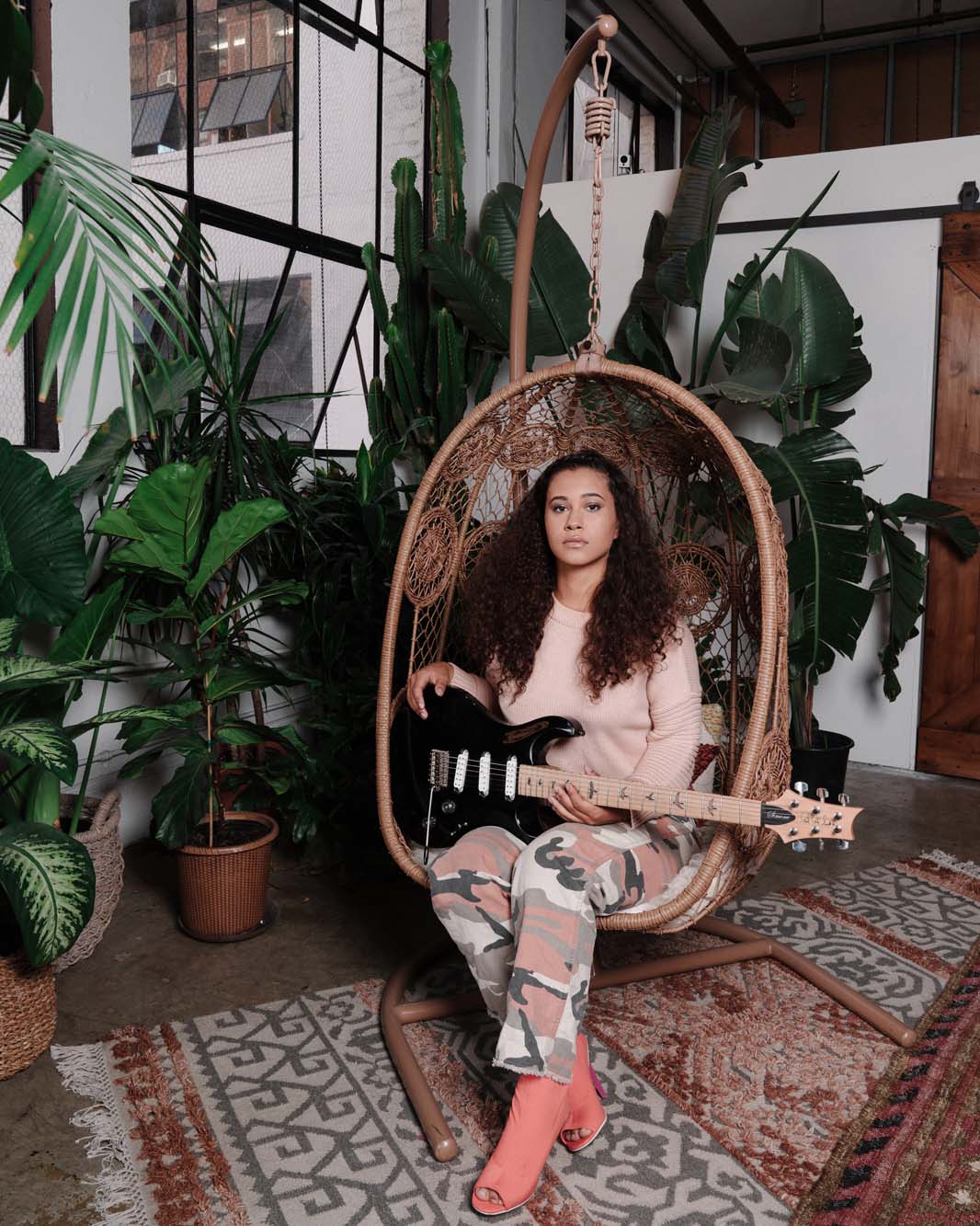
Speaking of Jupiter and gear, you recently became an ambassador for Orange Amps. What draws you to their gear? What’s your current gear set up?
Right now I play the Rockerverb 50 Combo. The first time I played it was at NAMM (National Association of Music Merchants), just after Coachella. During Coachella, I was using Axe-Fx, and it’s like night and day when you play through a tube amp. When I played through the Orange amp, I literally got chills and became obsessed with it. Their distortion tone is really dope too, even without pedals.
I also use EarthQuaker pedals. They have cool tones that have inspired me to write and produce. And Seymour Duncan pickups for my PRS 305. I’m not a gear freak necessarily, but I love my set up right now. I feel like I’ve found gear I really like to play.
You’ve mentioned that you’re getting more into production. What’s that process like for you? Do you prefer to produce your own music?
I feel like I’ve always been a producer. I’ve been playing piano since I was three and guitar since I was 11. I’m always hearing chords and melodies, so I’ll put them down and sing into my mic. I’ve been in the studio with different producers, and sometimes I feel like we could have written a catchy song or cool hook, but it doesn’t feel like me. After working with different producers, I realized I could learn to produce myself. I decided to stop working with other producers and figure out who I am and what my sound is.
You have a large online following and an active social media presence. Do you feel your online fan base has helped you grow as an artist?
Definitely, though I do have a love-hate relationship with social media. I feel like a lot of people can get wrapped up in it and think it’s the real world. You start to feel like you’re not good enough. Sometimes that can make you better, but sometimes it can also make you feel down on yourself. At the same time, Beyoncé’s team found me on Facebook. A video of me playing “Treasure” by Bruno Mars went viral and I got a lot of DMs, including one from Beyoncé’s music director. So I think it’s super important, if you are a musician or an artist, to post your art because it will expose you to people that may have never seen you before.
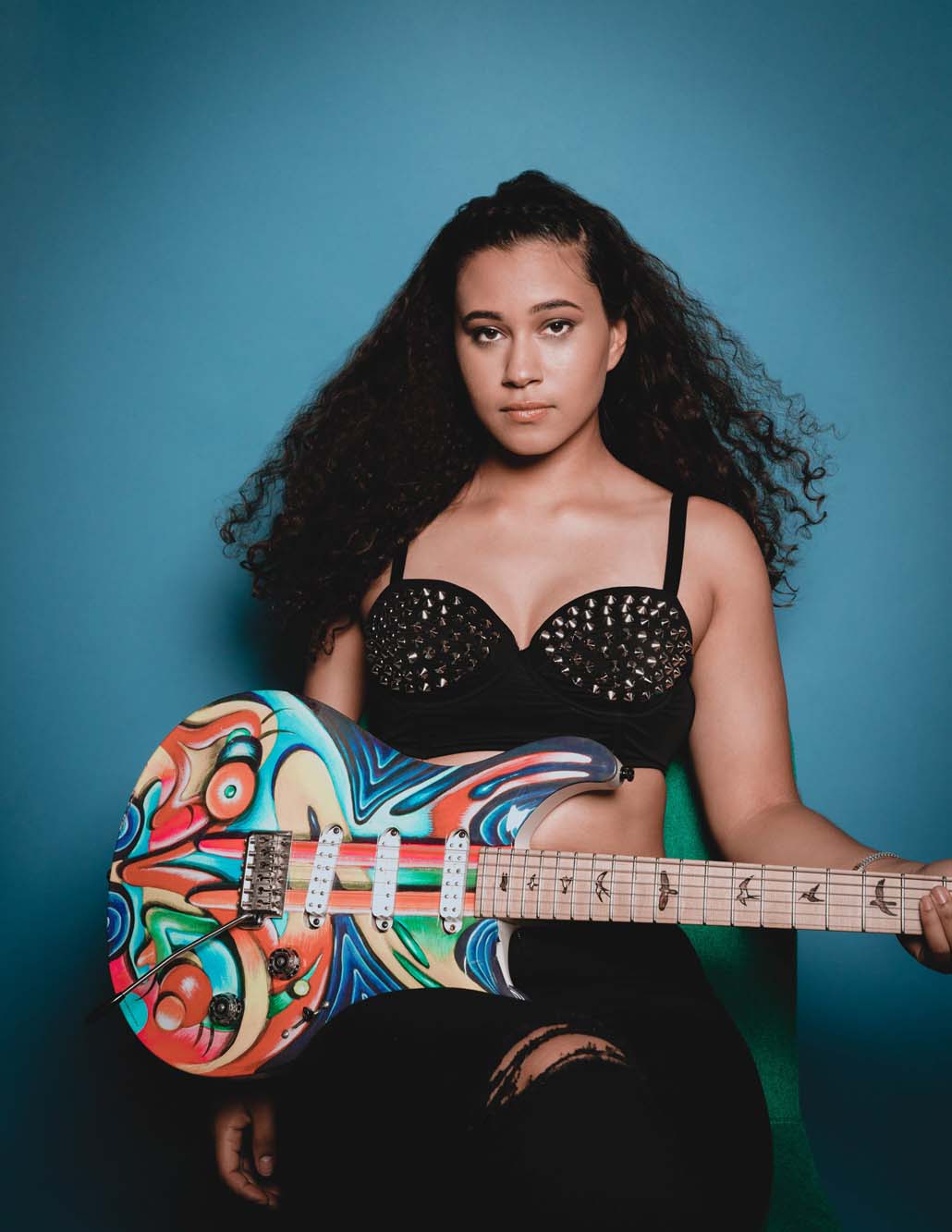
Thinking about online community and exposure, do you feel there are more women, especially women of color, being recognized for their talents in the guitar world?
For sure. It’s a super exciting time for women musicians. I think it also has to do with the rise of social media. I can go on Facebook or Instagram and see someone across the world who’s killing it at guitar, and I can say, “Keep going.” It develops a community among women and women of color. Before, it was such a male-dominated industry, and it still is. But I think the idea of a woman guitarist isn’t as shocking today.
It really does bother me when guys say, “ You’re my favorite female guitarist,” or “You play just as good as the guys.” What is that supposed to mean? No matter if you’re a man or a woman, it [should be] about, “You play really well and I respect how you play.”
What’s next for Simone? Are you releasing more music and visuals similar to “Still”?
I’m really excited to release more music that is vocal heavy and features my lyrics. I’m working on an EP right now where I sing, produce, and play guitar. For a long time, I think I’ve been afraid [of singing]. People have only seen me as a guitarist and I’m respected in that world. When I think about singing and songwriting, I feel pressure to have everything be on the same level. I would never put anything out that didn’t feel authentic, but I sometimes wonder, “Is this good enough?” But I think as artists, we’re always asking ourselves that question.
Ultimately, I just have to be super unapologetic and [say], “This is who I am.”
The Martin GPCRSG is a worthy companion. Not only do politically and environmentally players turn to this guitar, but its sound is rich and full. Want all the specs? Read all about it from our review we published last week!
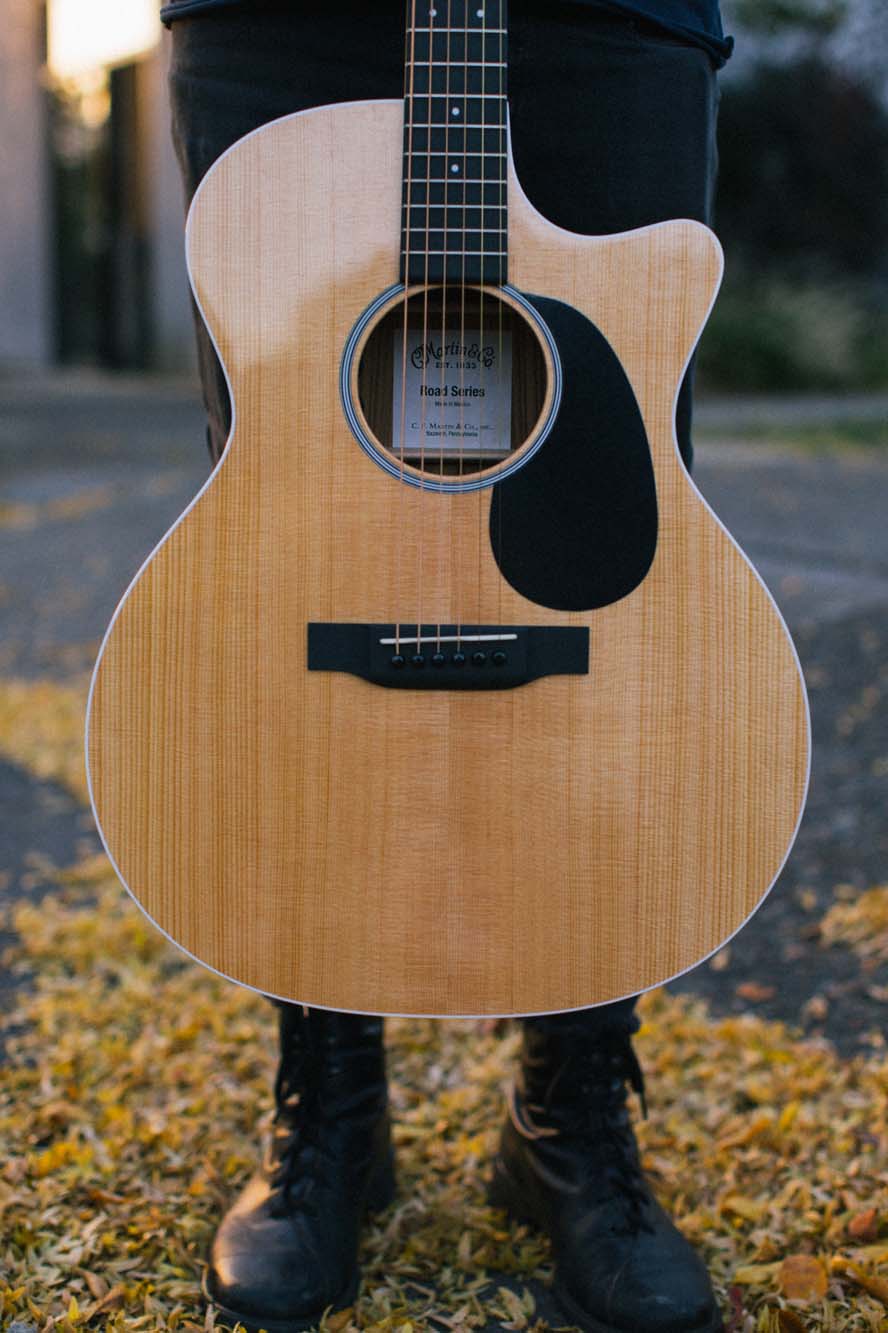
To enter, fill in the submissions form below and follow these three rules:
Martin Guitars will need to collect a W9 from the winner of the guitar, and will issue a form 1099 for the 2018 tax year. By entering the contest, you are agreeing to provide a W9 to Martin Guitars as a condition to receiving the guitar.
The winner will be announced on this post on Monday November 5th at 5 PM PT.
When you listen to Amy Winehouse, there’s no denying the insatiable power that comes through in her voice and lyrics. Arguably one of the greatest voices of our time, Amy Winehouse depicts the uncompromisable battle between struggle and triumph and her ability to carry that message across millions of people then, now, and forever.
As we celebrate her legacy, it’s so important to remember that Amy wasn’t only an incredibly singer and pop icon; she was a musician. “I can say that I’m a distinctive guitarist.” Winehouse says in a 2004 interview for a series of promotional videos for Fender. “I never really liked a lot of guitar bands…I loved the Velvet Underground, I loved the way they used guitars.” Adding that Carol King was a huge influence on her guitar playing, “A lot of chords I write are heavily influenced by the way [Carol King] and James Taylor would write…just quite warm chords, major chords. To me guitar is a very warm instrument and that’s why I love it as opposed to piano..it’s because it’s such a warm instrument.”
Below, watch Winehouse play guitar, and discuss how she started playing, her guitar influences, and how playing guitar on stage makes her feel strong.
How many times have you found a piece of equipment from 50 years ago that you held off from buying because of neck profile issues, or pickup selector issues—and then felt pangs of regret knowing you walked away from killer tone?
The recently announced Fender American Original Series offers an intriguing option for players who’ve had to ask themselves this kind of question. Developed by Fender’s team, the 2018 series offers “best-of-the-decade” versions of Fender’s most iconic instruments produced from the 1950s-1970s, including the Stratocaster, Telecaster, Jazzmaster, Jaguar, Precision Bass, and Jazz Bass.
While each instrument varies, the team paid a deep attention to ensure both neck profiles and pickups were period-accurate. To get a sense of this effort, workers at Fender used original-era construction techniques to carve and fasten each instrument’s fingerboards.
It’s no wonder that the original instruments, developed during the heyday of the mid-century modern design movement in the United States, have retained a timelessness that’s particularly attractive to players. With the updates made by Fender, these instruments live up to their slogan of “classic guitars made new.”
In honor of this series, She Shreds would like to highlight some pioneering woman guitar players who first played these instruments during the eras.
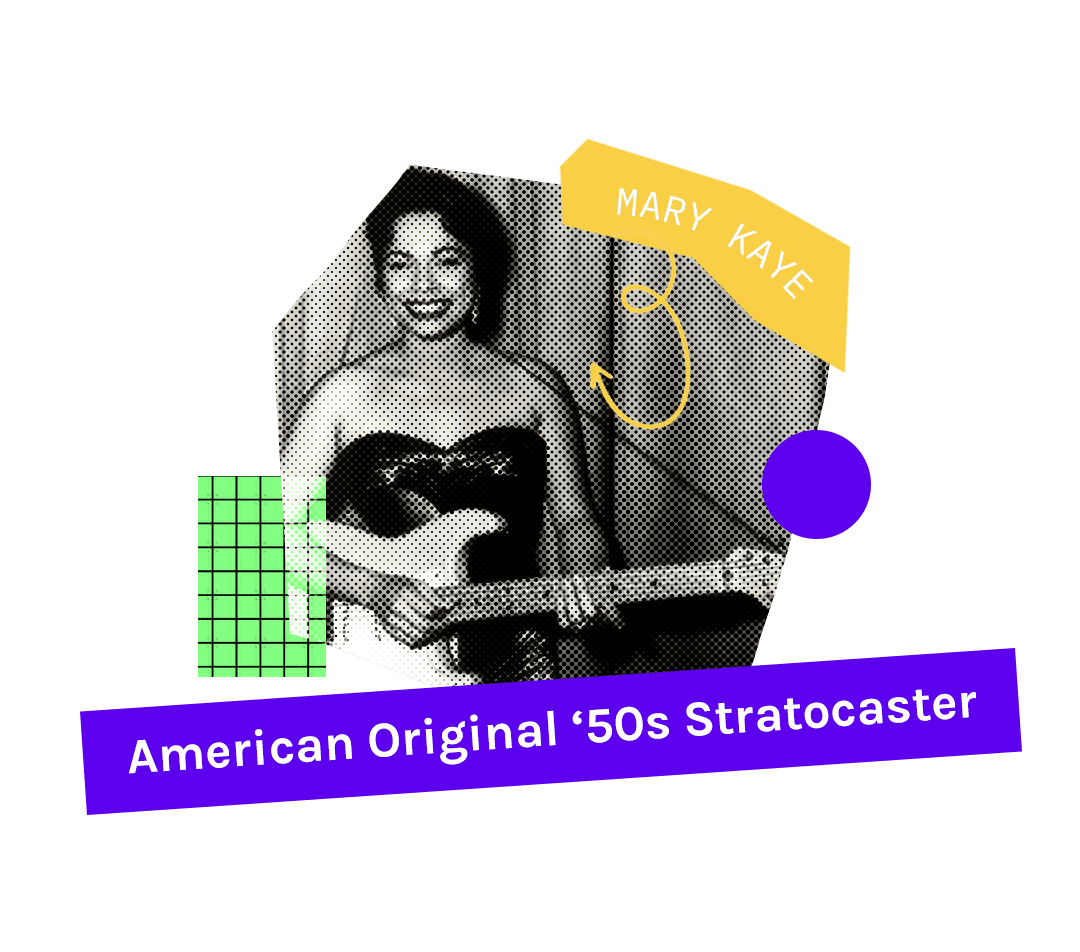
Born in Detroit, Michigan, Mary Kaye was a singer and guitarist whose performances helped cement the Las Vegas Strip’s reputation as a place for top notch playing. A player of a mid-50s stratocaster, Mary Kaye and her bandmates were known for developing a distinctive lounge music sound during their Las Vegas residency. Their act caught the attention of Fender reps, who took an iconic promotional photo of Kaye with a translucent white stratocaster in 1956.
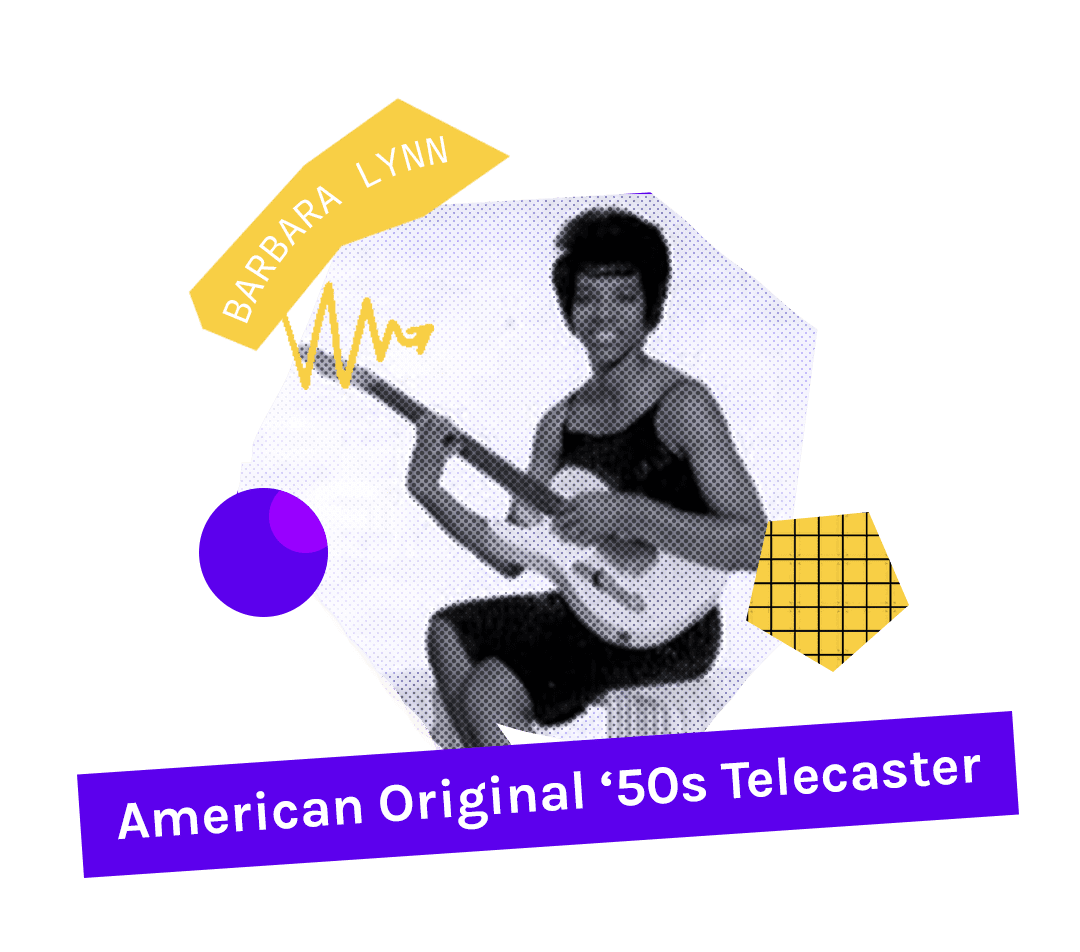
A native and current resident of Beaumont, Texas, Barbara Lynn’s prodigious talent has led her to produce billboard-charting hits, tour with Otis Redding, James Brown, Ike and Tina Turner, and B.B. King. Active since the 60s, Lynn’s work has continued to influence modern artists, including Lil Wayne, who sampled Lynn’s “I’m a Good Woman” on his “Days and Days” in 2013.
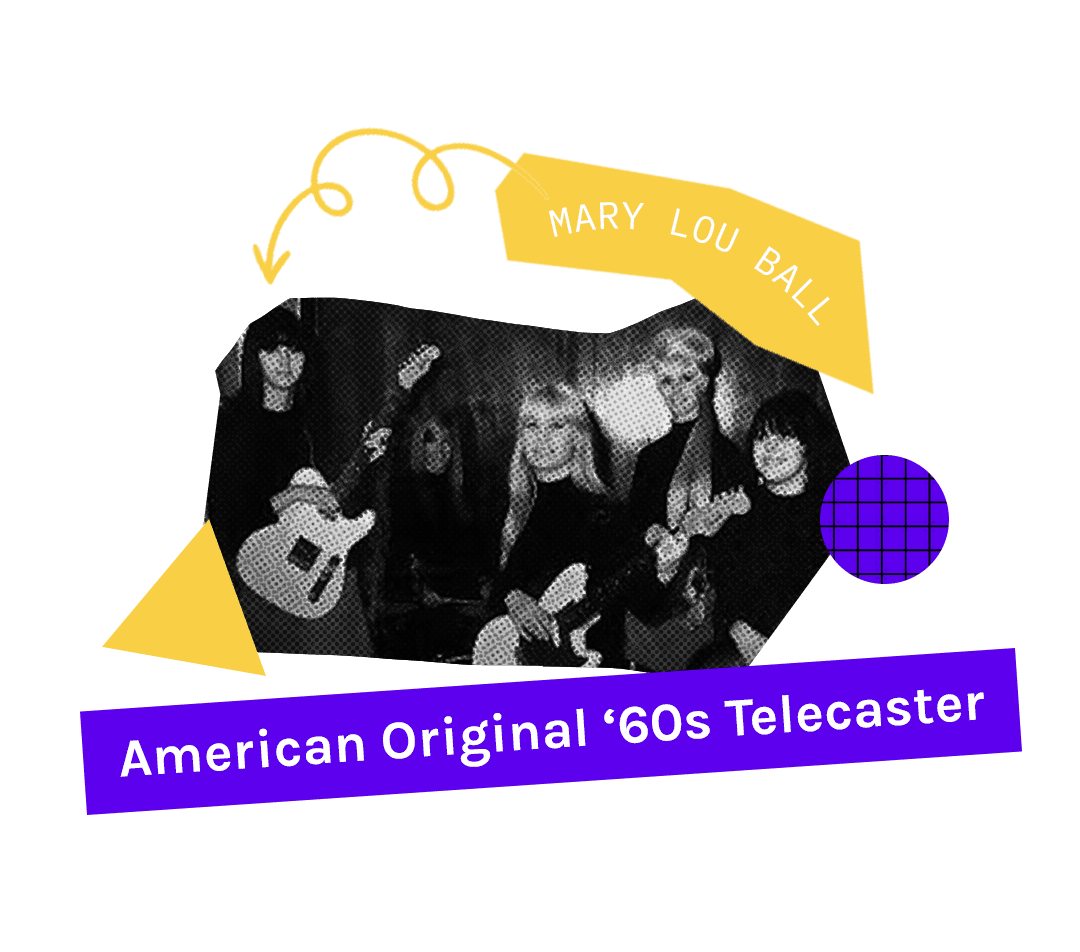
Mary Lou Ball of Garage Rock band the Pleasure Seekers was known for playing a telecaster throughout the Pleasure Seekers’ tenure. As one of the first all female garage rock bands signed to a major label, the Detroit-based Pleasure Seekers brief career was packed with a number of criminally underrated singles, including “Never Thought You’d Leave Me” a track that showcases their tight playing and haunting melodies.
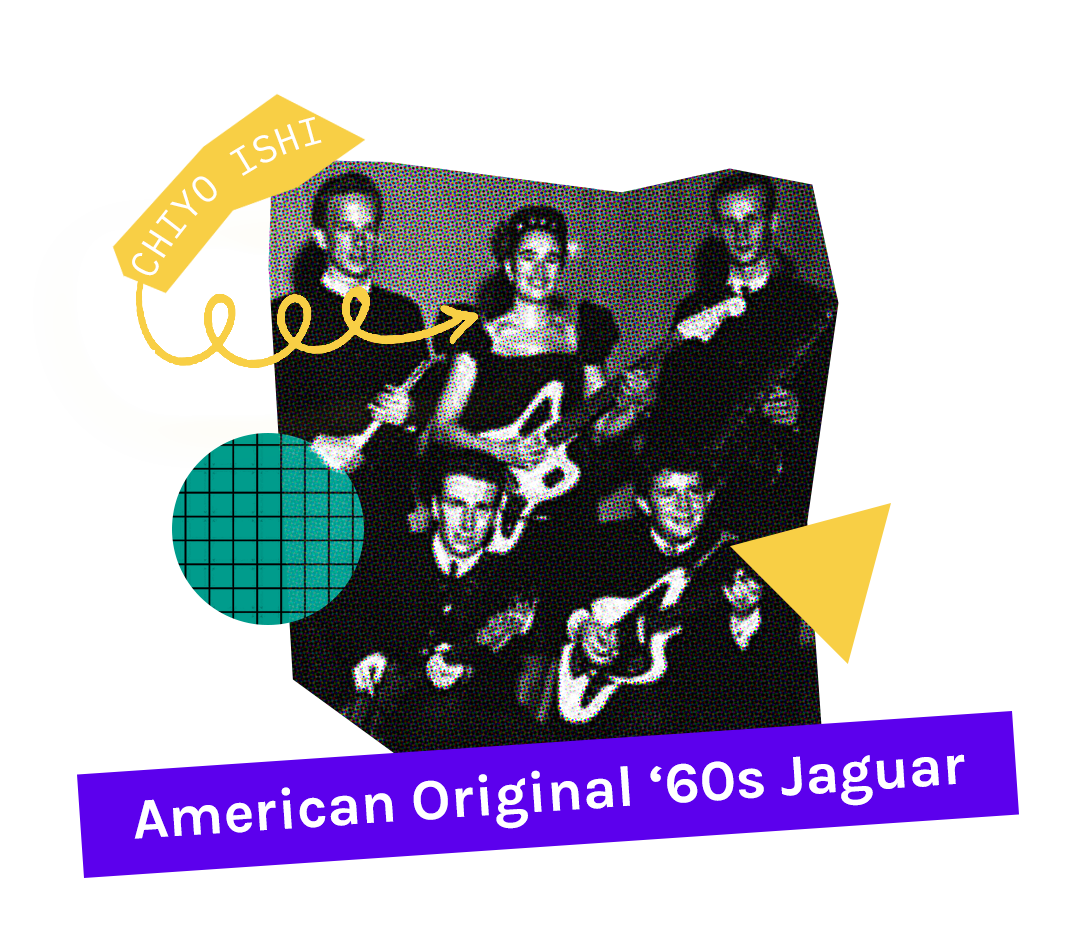
Chiyo and The Crescents was known as one of the only surf bands to include a female lead guitarist. Additionally, Chiyo was known to be incredibly mysterious and very little is known of her other than she owned a guitar store in Oxnard, CA in the early ’60s named “Chiyo’s Guitars and Drums,” in which she sold Fender instruments exclusively.
As lead guitarist for the group, Chiyo was known for playing a white Jaguar. When she wasn’t playing with the group, Chiyo ran the guitar shop above where she also taught guitar, steel guitar, accordion, and piano.
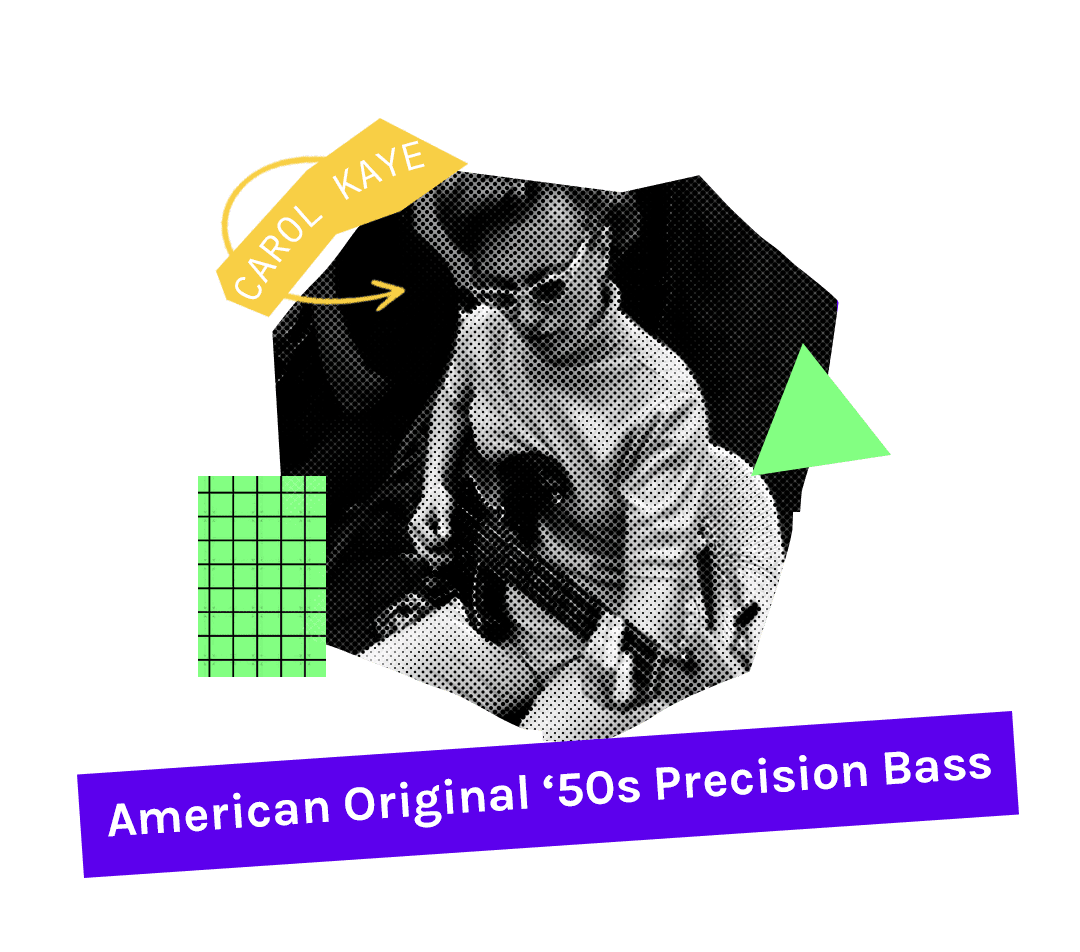
Originally a bebop jazz guitarist, Carol Kaye found her way into doing studio sessions to support her family. Her precise technique and signature Fender bass sound led her to being snapped up to play on records ranging from the Beach Boys’ Pet Sounds to soundtracks for Steven Spielberg.
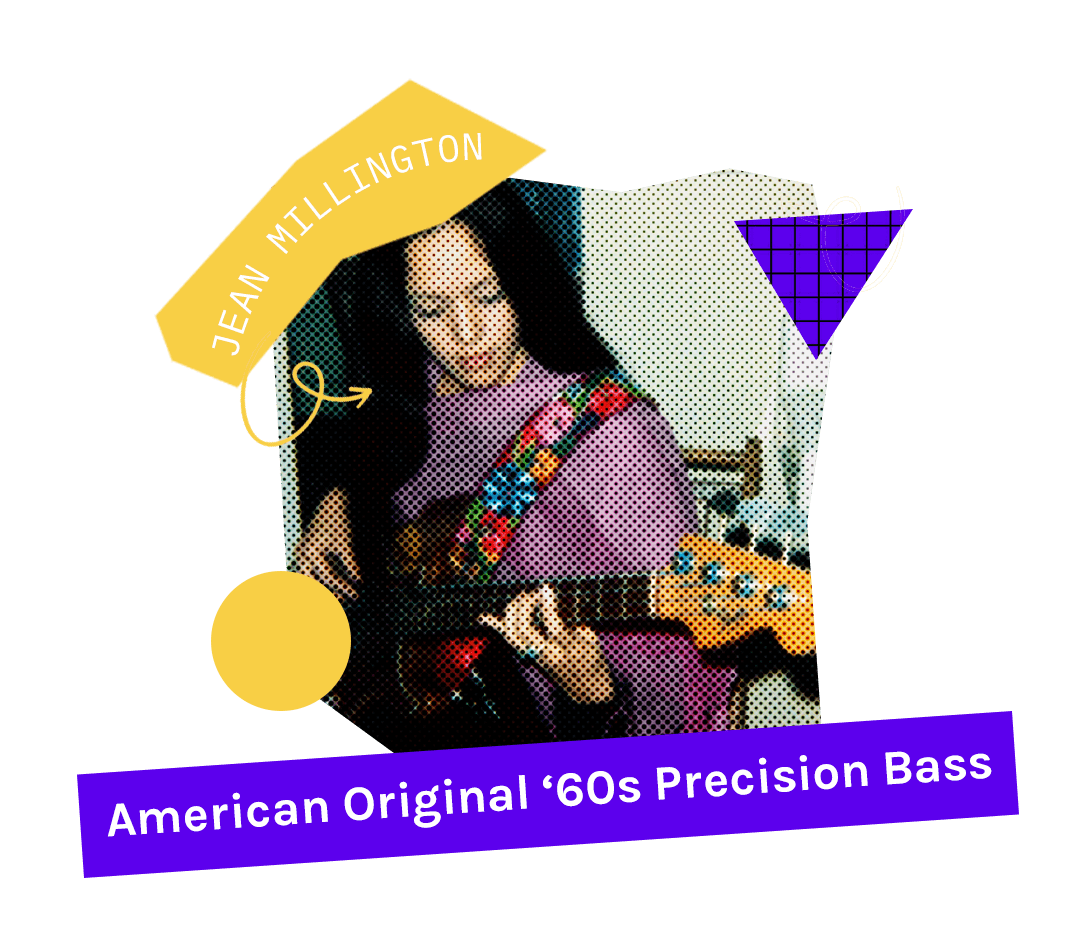
Originally born in Manila, Phillipines, sisters Jean and June Millington began their career as musicians quickly after moving to the United States in 1961. In high school, the sisters had a vision to form an “all-girl” band which came to fruition as the Svelts. By the early 1970s, Fanny formed and became one of the first and most notable pioneering bands made up of entirely women to sign to a major record label and hit Billboard’s Hot 100. Jean Millington’s 1963 Precision Bass continues to be her number one bass.
If you STILL haven’t entered into one of our giveaways this summer, let me tell you, this one you must try and win. The Ernie Ball Music Man made St. Vincent Signature Guitar is truly an innovative beauty. With guitar players kept in mind, this creative instrument is shaping the sound of icons. Take a look at St. Vincent’s artistic process and inspiration behind her newest model: the Ernie Ball Music Man St. Vincent HH.
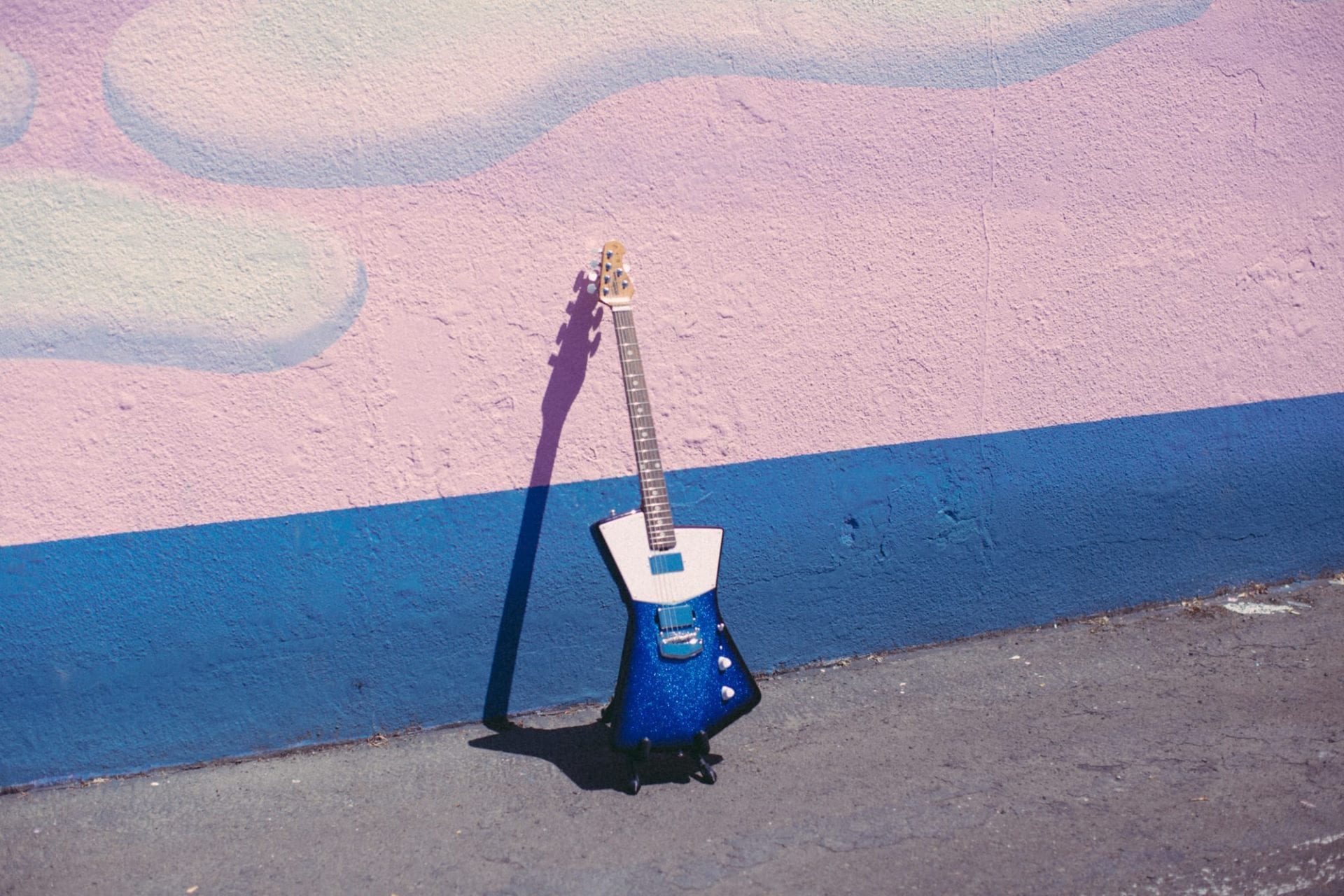
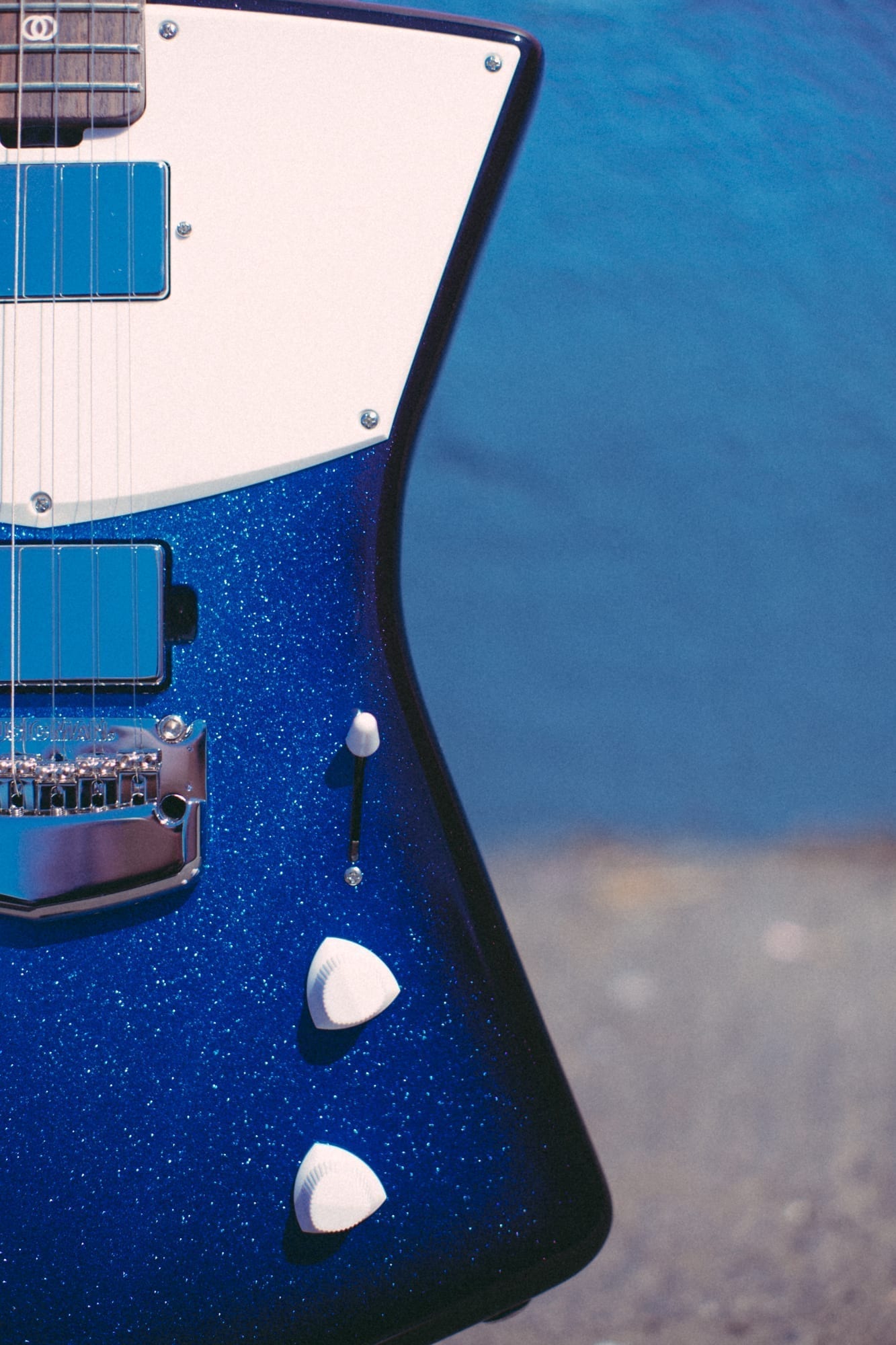
Winner will be e-mailed on Monday, July 16th at noon. If you don’t live in the USA that’s ok! You can still enter to win but you’ll have to pay shipping price (sorry!) so enter at your own risk!
Faye’s creative voice comes through in the emotionally expressive notes of her guitar; a voice that impacts new and old generations of guitarists, including those in genres not immediately associated with guitar such as hip hop and R&B.
In order to fully comprehend the talent of Melanie Faye, you need to see her masterful playing for yourself at @rainbow_fever_1998_ and indulge in who is sure to become your new guitar obsession. She Shreds video chatted with Faye about her favorite gear, refining your chops, and what the future looks like for the young guitarist.
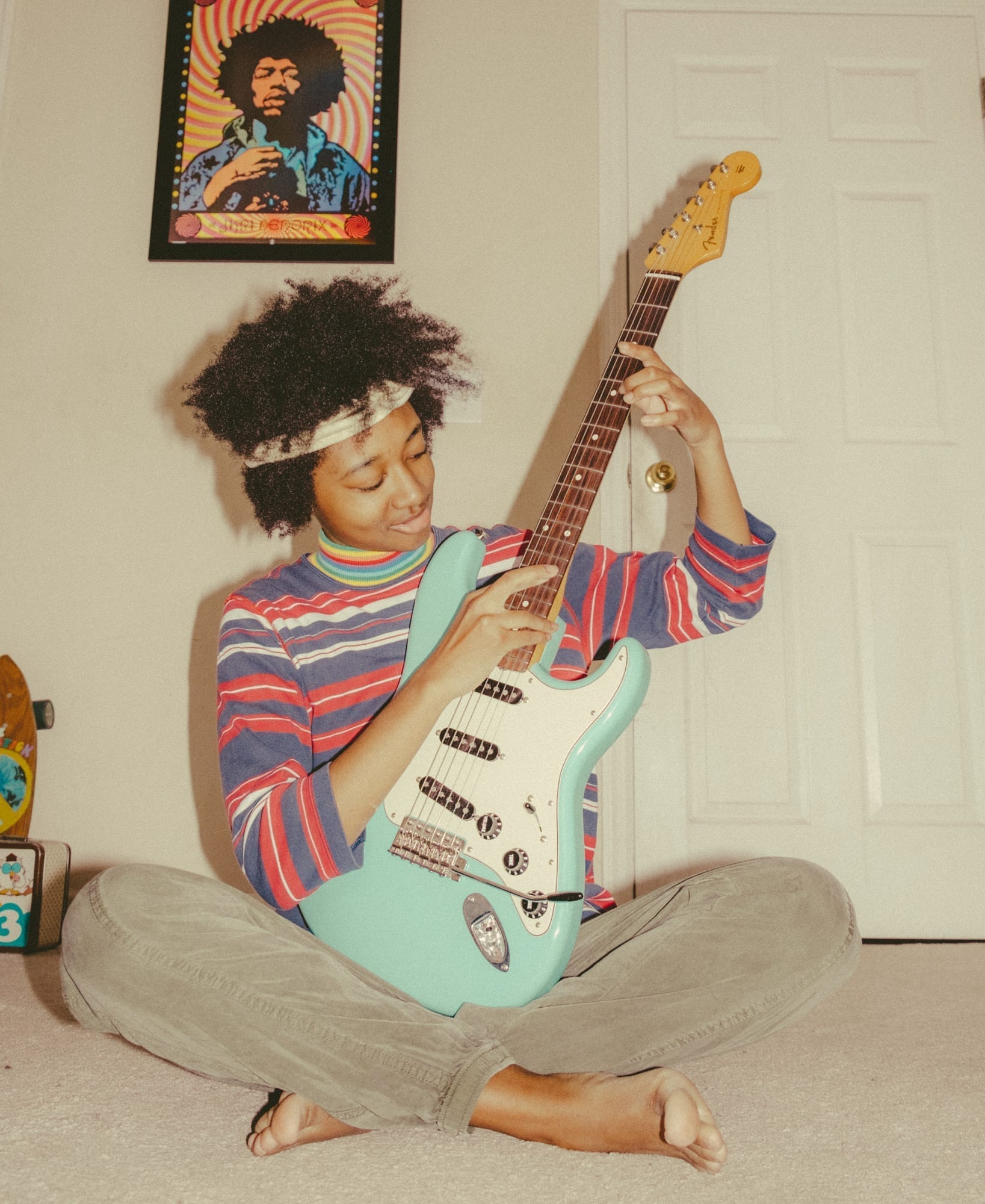
She Shreds: How was your weekend? Where are you?
Melanie Faye: It’s been alright. I don’t really know what day it is anymore. I’m in Nashville, at my house. Did I tell you I just dropped out of [sophomore year of college]?
What was the decision for that?
I was half-heartedly doing school and then half-heartedly doing music. So I just had to make a decision—I chose music. It was the proper decision. Now I can focus on my career, which has already started.
Do you feel like the whole social media viral situation solidified that decision?
It solidified it, but it already started when I was doing shows locally. If you’re just doing local shows, that’s not really much of a reason to dropout of school. Just all the work that’s been piling up, all the people reaching out to me. I couldn’t balance it out.
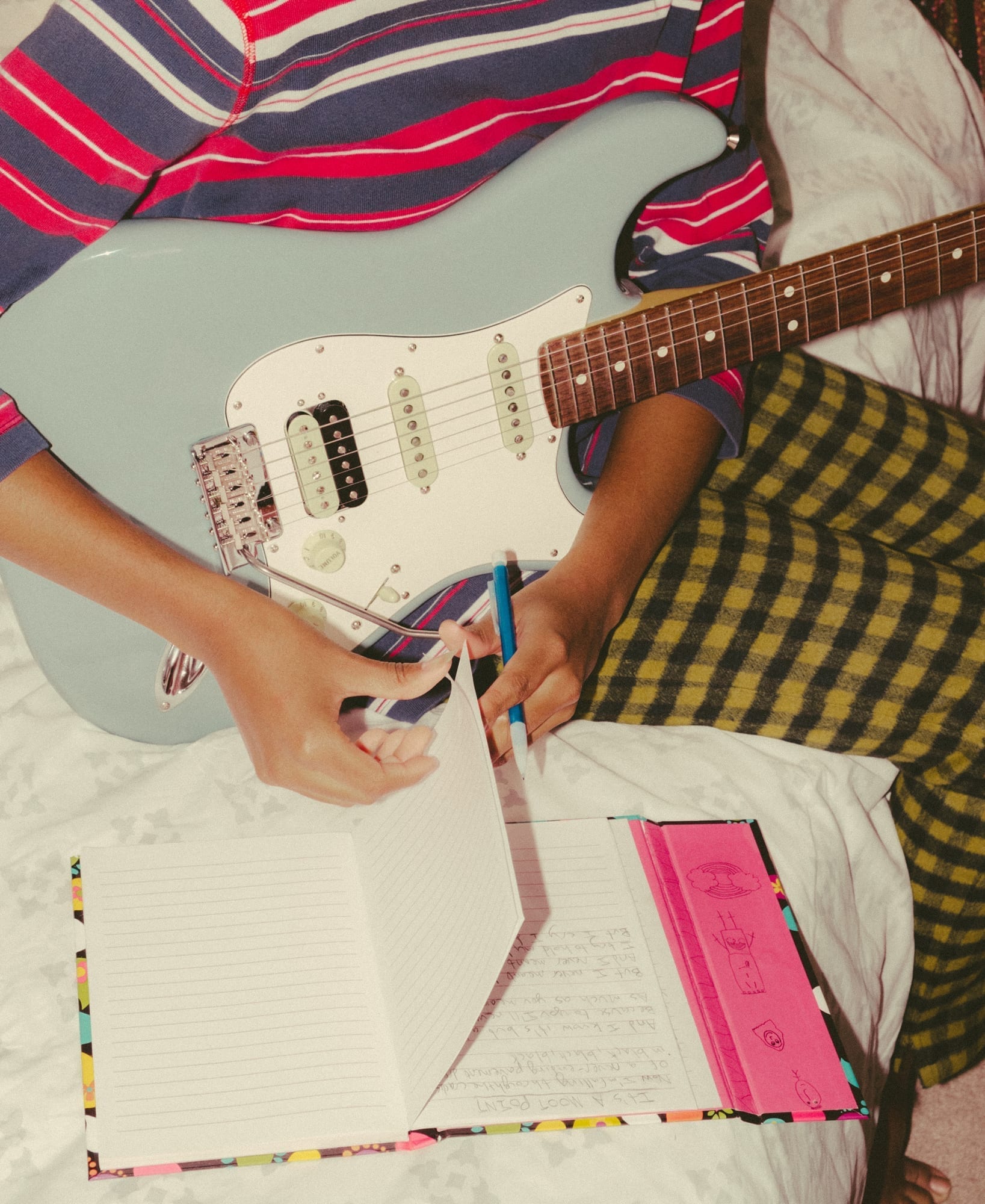
A friend sent me a video of you playing, which I thought was amazing. And then three days later, you went from 7,000 followers to 50,000. And I was like, “What just happened?”
I actually started out at 1,200 and then it exploded. It kept going up and up. I was at Little Harpeth Brewing in Nashville [to play a show]. And then the very next day I got a text from one of my friends saying, “Hey, um, you’re going crazy right now, you’re going viral.” And then I looked and saw that somebody had taken my video on Instagram and posted it to their Twitter, and it just blew up. I didn’t know the person. I didn’t have anything to do with that. It just naturally blew up. And that’s an old video. That came out October of 2016. It didn’t go viral until August of 2017. I guess I just got lucky.
How has your life been impacted since then?
I have a lot more show dates, and this time around they’re in different states. A lot of free stuff: clothes, a whole bunch of guitars, guitar pedals. So, yeah, it was pretty cool. I have more direction too, I guess.
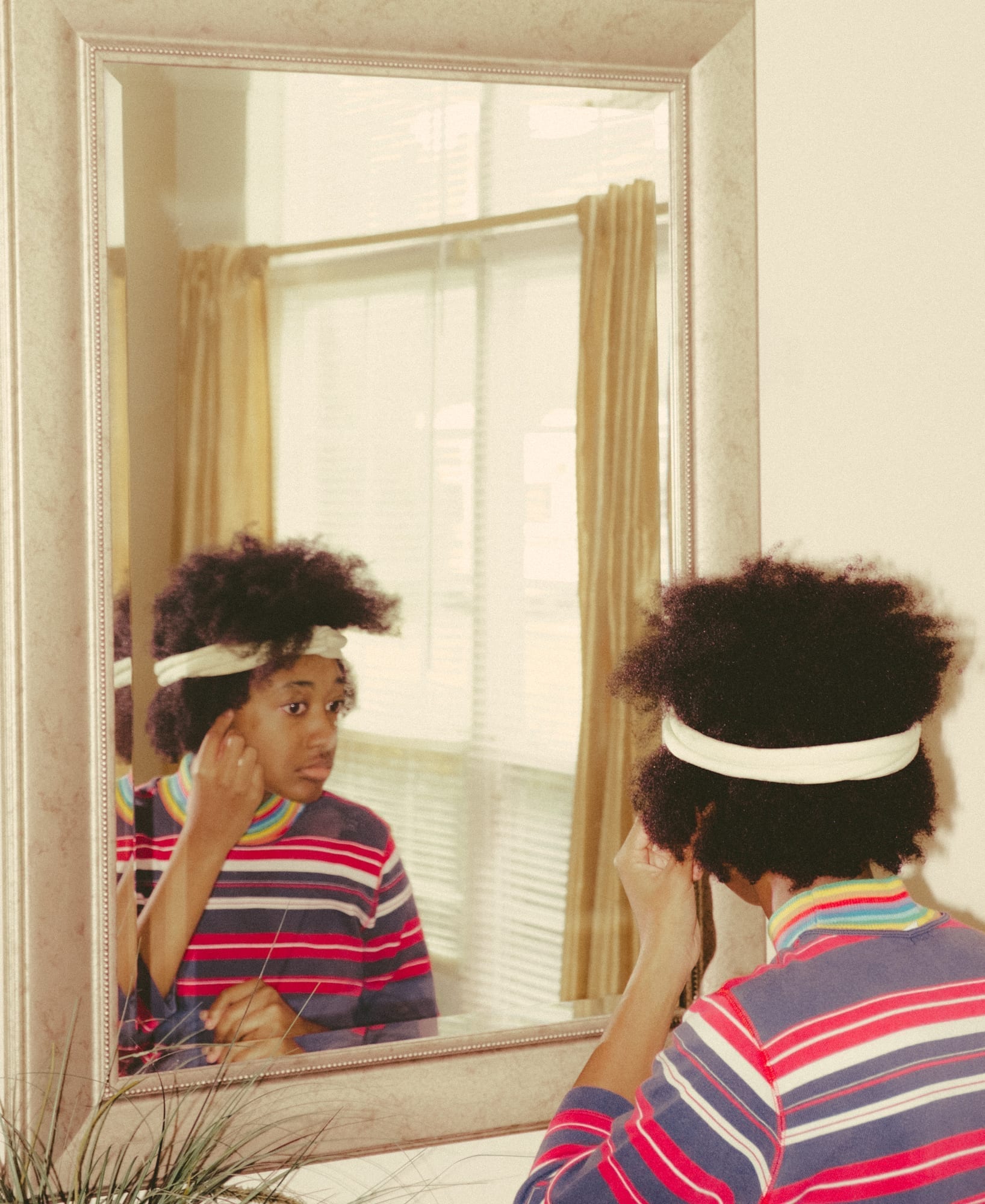
What does that direction look like?
Keep doing the shows, and then just keep posting. When I’m ready, drop the EP. In order to go on tour, you have to have a body of work out, which I don’t have yet. But once I get that out, then I can go on tour.
I read that you got into guitar by playing Guitar Hero on Xbox. What about that game made you want to pick up the guitar?
The song “Cliffs of Dover” [by Eric Johnson]. And the characters, how cool they looked, how cool the guitar sounded, the music on there, and how fun the game was. But “Cliffs of Dover” was my favorite song of the whole game.
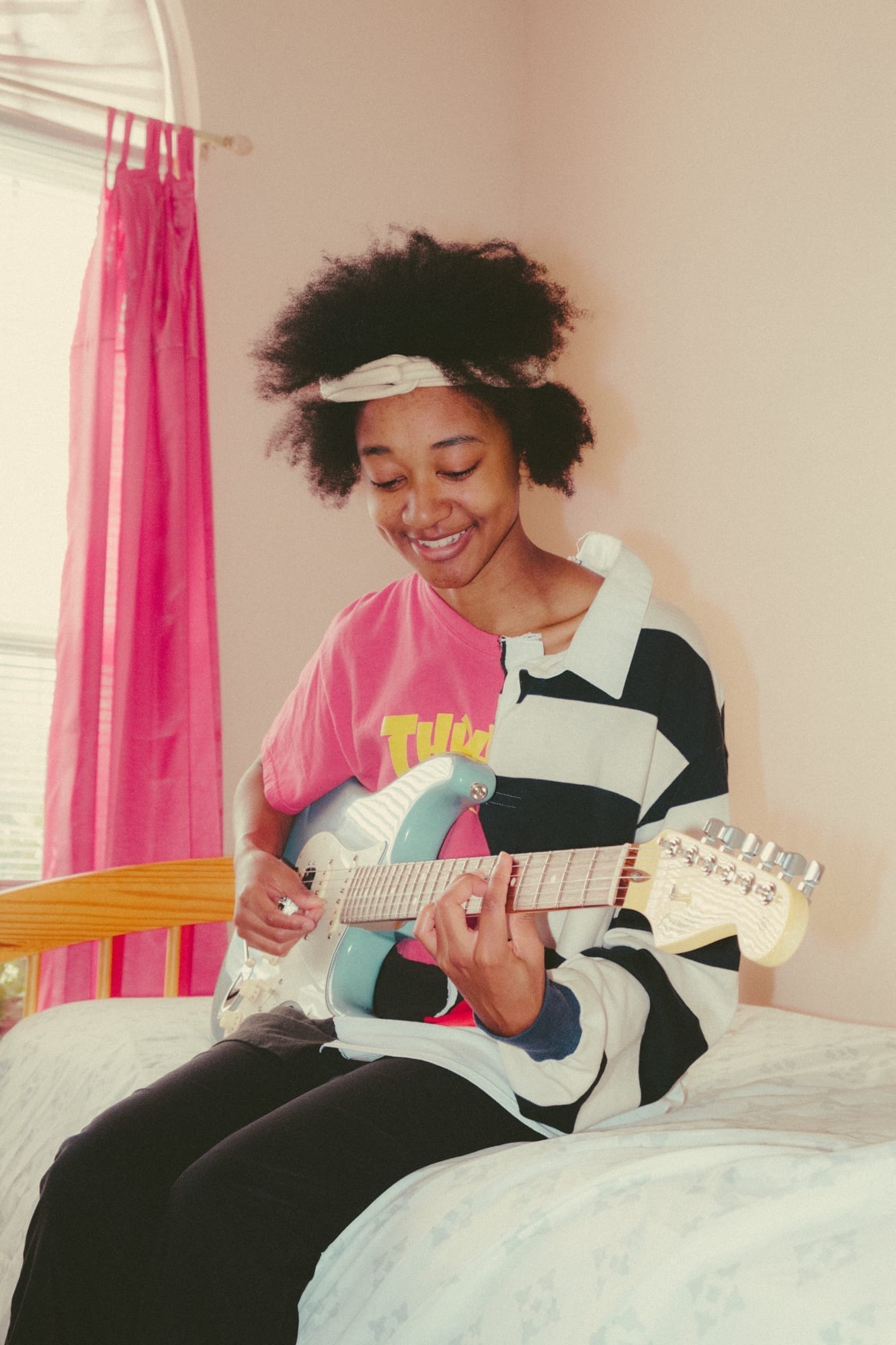
How did you go about getting your hands on a guitar?
A year later, after getting Guitar Hero 3: Legends Of Rock, I got a real guitar. I didn’t get it for Christmas or the holidays because my family is Jehovah’s Witnesses, so I got some money for Black Friday. Like, we didn’t do Christmas, but we did Black Friday. I decided I was going to buy a guitar, so that’s what I did. I was 11.
What about the baby blue Strat that’s often seen in your earlier videos?
I bought that senior year of high school. I worked at Subway part-time and made minimum wage and I was really excited to buy something. It was that Black Friday time again, so everything was on sale. I can’t really say that I’ve ever really been in love with the guitar. It takes a lot of extra work to get it to sound decent. You have to really work on your technique and your touch to get the most of that guitar.
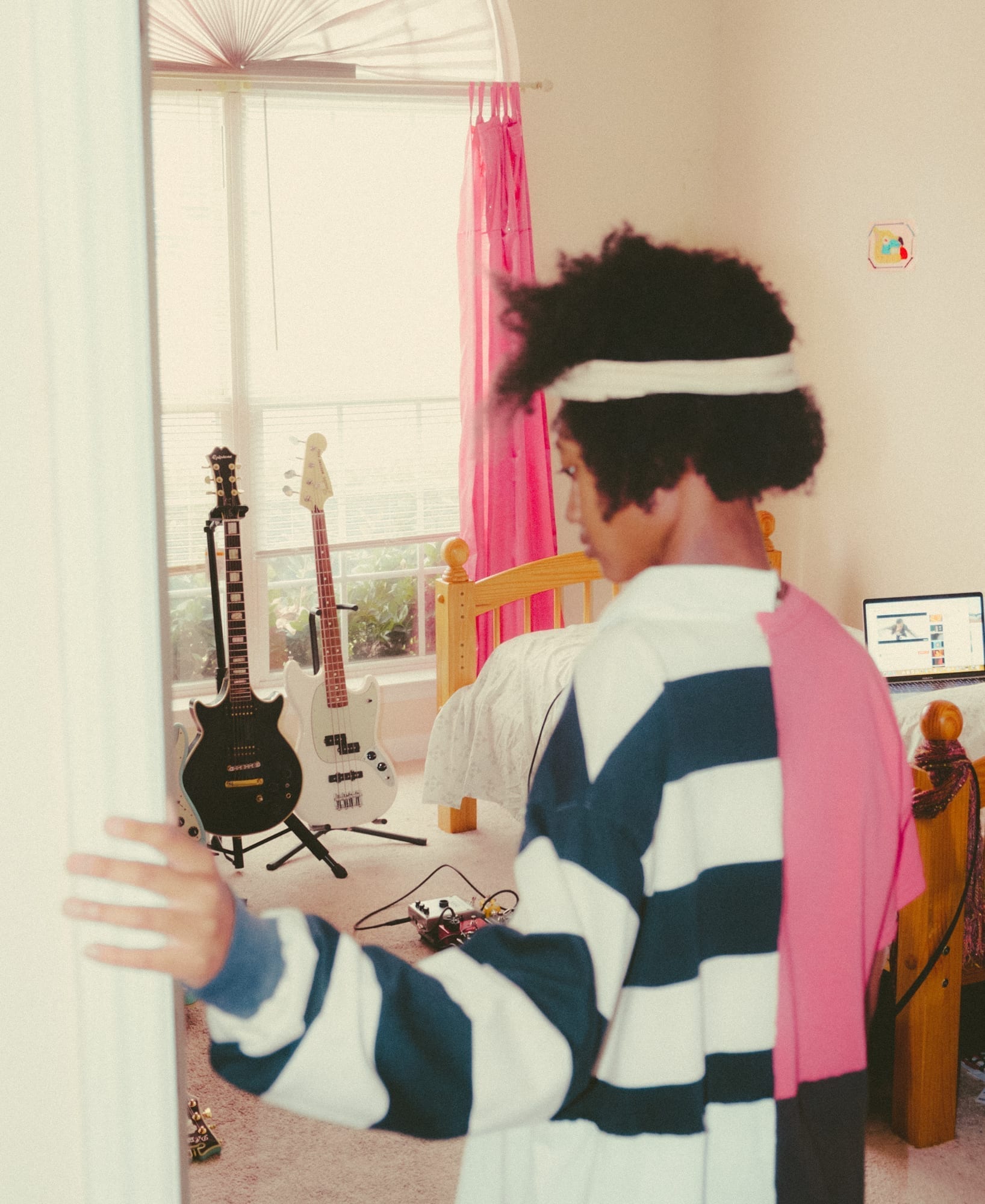
What do you look for in a guitar?
I like guitars that are really well set up, that feel really effortless, that have low action where you barely have to press down and it just feels like air. But none of my guitars feel like that at all. The blue [Fender Stratocaster] has the world’s highest action.
The black Epiphone Genesis, which is from 1980, also has pretty high action. And then the three new ones I just got—I’m in love with this bass. I’m obsessed with it. I’m so excited to start playing bass and learn stuff and even pick up some gigs as a bass player. It’s perfect. I chose that [Offset Fender Mustang PJ] bass because [as a] a guitar player, I’m not comfortable with the full-scale bass. I’m not comfortable with a full-length 34-inch bass. So I decided to get a short-scale bass because it’s reminiscent of a guitar and feels familiar. And then, the D’Angelico guitar is perfect. You have to see it in person, it’s gorgeous. When I first pulled it out of the case, it was clean: brand new, no specks of dust, no scratch marks. It was just amazing, and it sounds even better than it looks. And then, the American Professional Strat is amazing. It’s better than my original baby blue Strat.
Did the Strat inspire that Jimi Hendrix portrait that’s always behind you in your Instagram videos?
It’s a 3D poster, so if you are in here and you move to the left, it turns green. But if you move to the right, it turns red. So you can see in my Instagram, sometimes the poster’s green and sometimes it’s red, depending on my position on the floor.
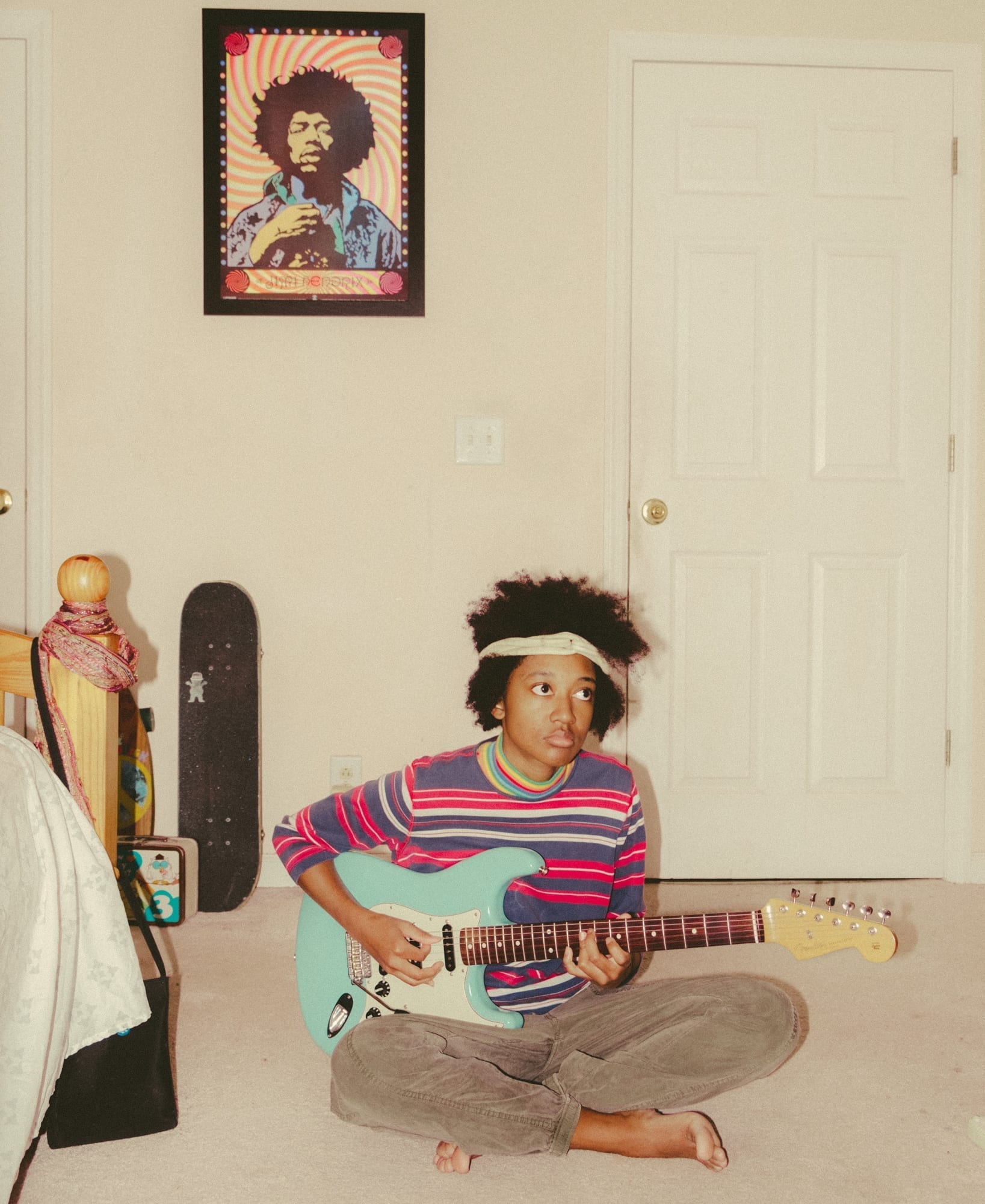
What do you think was the hardest thing to learn at first?
Chord changes. Going from one chord to another, and then picking the right string. If you’re holding down a note on a D string, you might accidentally hit the wrong string. That was really hard.
What were some of the main tools that were pivotal in developing your skills?
Being patient and having the drive and determination to learn something else. It’s easy to learn something and then just plateau and not really push yourself to get better, to just play the same thing over and over again for the next few months. But you just have to push past that wall. You have to be determined to move into the next obstacle.
I think for a lot of people, like you were saying, guitar is an obstacle rather than, “This is an expressive instrument.”
I’m sure a lot of people can play guitar, but very few people have the patience. Nobody really wants to put in the work, so they’ll get to be decent at it and that’s it.
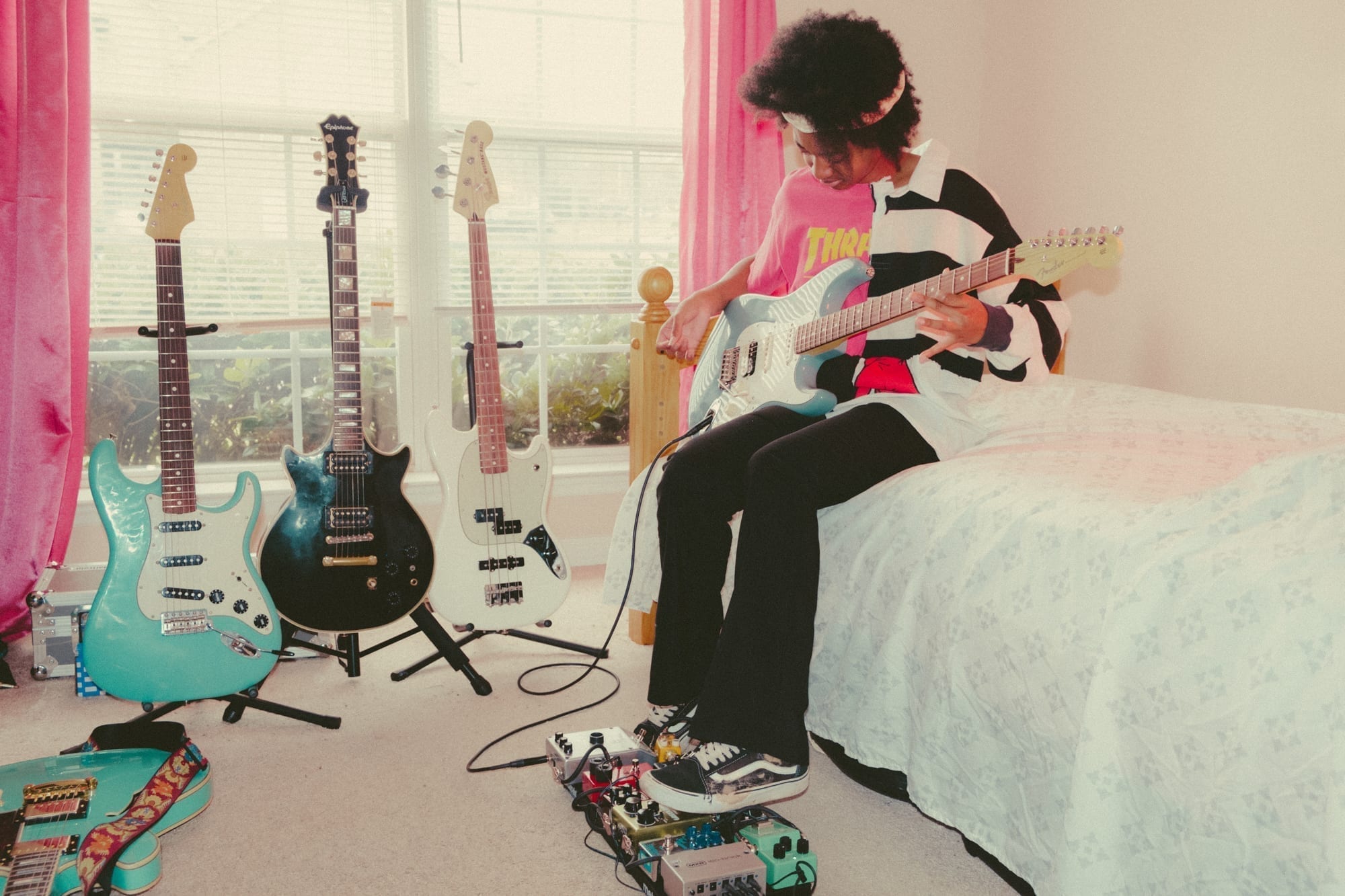
Speaking of… I noticed on your Instagram you’re experimenting more with pedals and bass. Do you consider yourself a bassist?
Yeah, it is secondary. I never relied on pedals, but pedals are super exciting. I’ve always wanted to get a good, solid overdrive sound. Like a “Cliffs of Dover” type of overdrive.
Do I consider myself a bass player? I do now. I’ve been playing for like, four days now, but I’m good at it.
What do you consider a good guitar player?
I guess that is subjective. But [I consider myself] someone who really has rhythm and does more than just the basics, who thinks outside the box instead of just being all simple with it.
What is the longest you’ve ever played guitar in one sitting, and what do you like to play for practice?
Maybe 12 hours. Not all the time, but that’s probably the longest. I don’t really sit down and play scales, but I play other people’s music, and then my own music too. In order to make your own music you have to learn and listen to other people’s music.
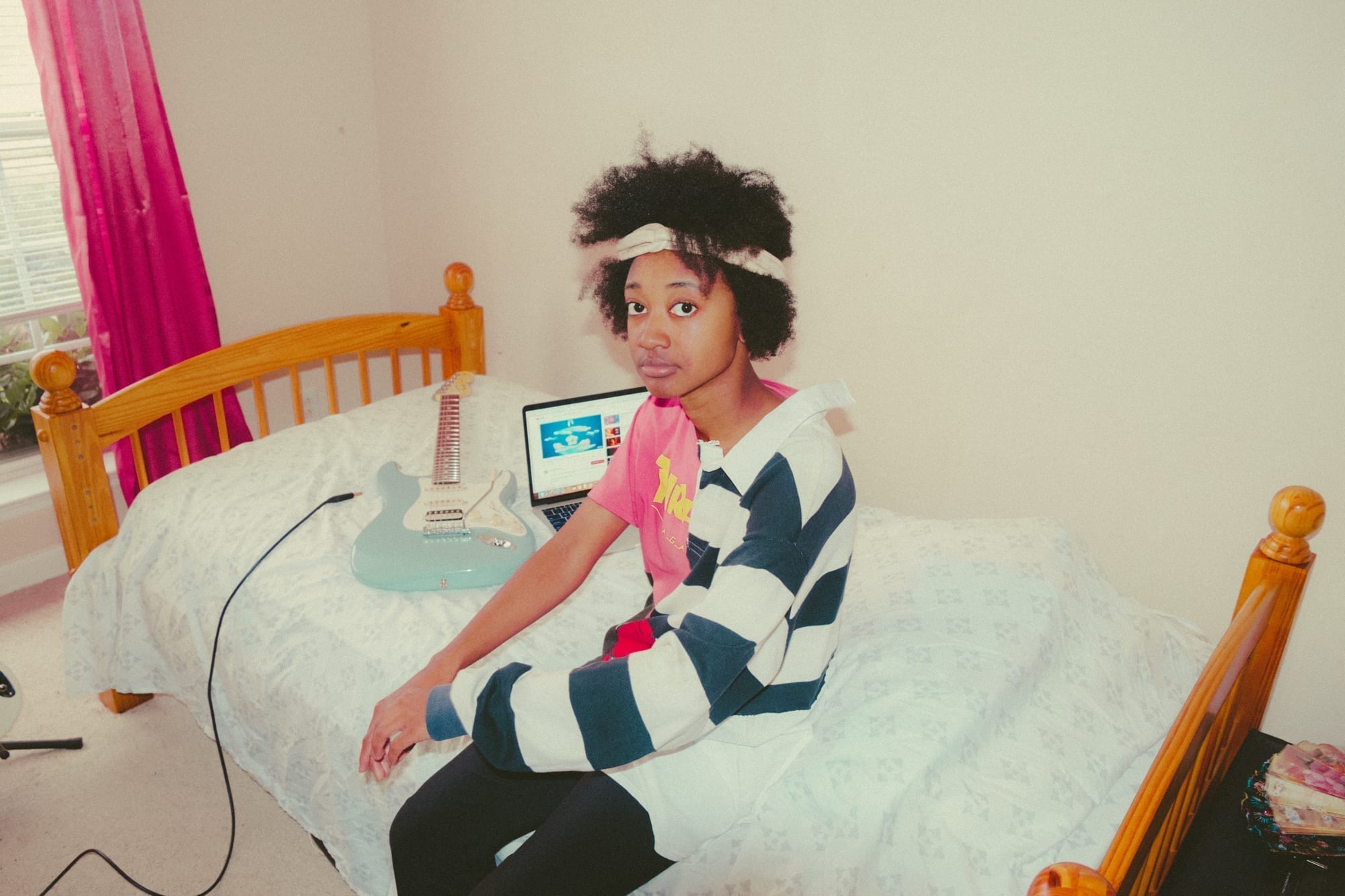
What are some of your favorite songs to play by other musicians?
[Songs by] Eric Gales. Nobody talks about him. I feel like he’s really unknown. Nobody plays guitar like him at all. I’ve never heard anyone sound like that. He’s extremely R&B, and very gospel, but he still does rock and blues too.
Who are some people you’d like to play with?
Chance the Rapper, Kehlani, Noname—who I actually recently met—and her guitar player, Brian Sanborn. Aminé and Danny Brown, Lianne La Havas, and SZA for sure. Anderson Paak, Shawn Mendes—I would want to work with him. Definitely Bibi McGill. I mean, she’s actually doing yoga right now, that’s what she’s really focused on, but if she makes her comeback to music, then I would want to work with her. Cage the Elephant, Portugal. The Man, Hayley Williams. I hope I’m not missing someone.
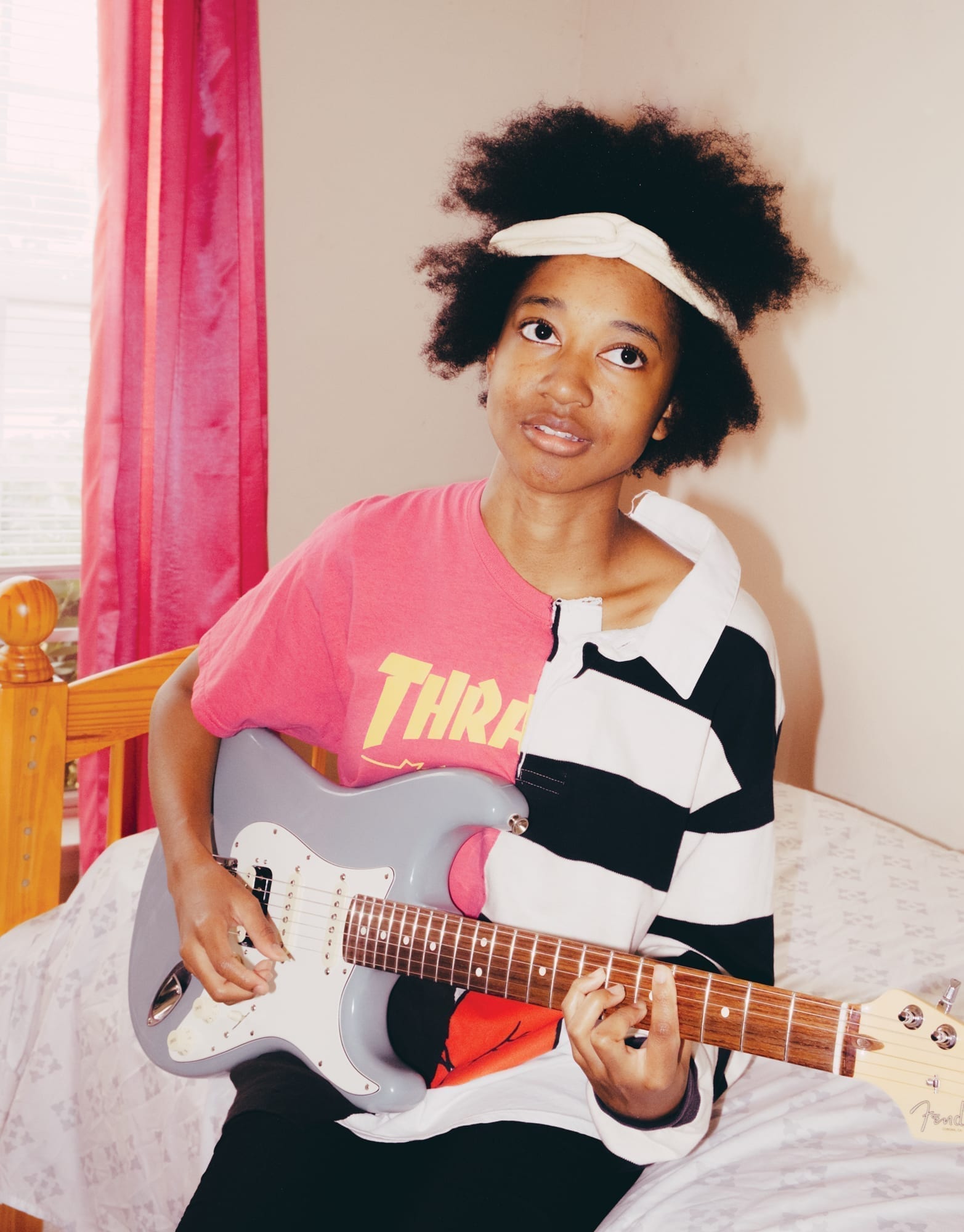
So, a lot of hip hop and R&B influence.
Everything I have made has R&B influence to it. It doesn’t always have to be like, hard rock. You can do other stuff. I’m really influenced by singers like Mariah Carey or Kelly Price. Sometimes when I’m playing I mimic the way a singer does runs and stuff.
Why does that interest you?
Instead of sounding like generic guitar noise, it sounds like music. It sounds like singing. I grew up listening to R&B music. I didn’t grow up listening to rock music. I didn’t discover rock music until I got Guitar Hero in middle school. Before that, me and my siblings were obsessed with Michael Jackson. I mean, he’s considered the King of Pop, but a lot of his music is R&B. We would sit in the living room and listen to his music, and dance like him. Other than him, I was really obsessed with Mariah Carey. Chris Brown, too. Those were my top three favorite people to listen to.
Guitars:
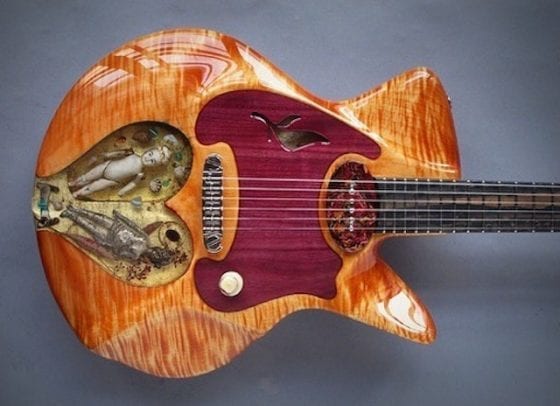 courtesy of Spalt Instruments
courtesy of Spalt InstrumentsFisherman and His Soul Guitar — Spalt Instruments
From afar, the “Fisherman and His Soul,” guitar by Vienna’s Spalt Instruments, looks glowy and inviting. But inside the instrument—positioned in a block of clear resin—there is a tiny baby doll surrounded by seashells and sporting a discontented look. The doll stared out at me from its frozen home as I walked by, and I knew we had to become better acquainted. Though I was aware of the risk of dropping this bizarre piece of modern art, I found it played quite nicely. The Fisherman and His Soul guitar is a great example of how art and practicality can (sort of) intersect to create something both magical and manageable. —LW
The Ruby Slippers Raven Classic — Tom Anderson
After playing Tom Anderson’s Raven Superbird at NAMM last year, I became obsessed; I ultimately contacted the company to obtain that exact guitar. The Ruby Slippers Raven Classic guitar presented at NAMM this year is very similar, but it has an updated tremolo system that allows you to bend both up and down, while holding its tuning like a champ. Like the Superbird, the Ruby Slippers has an offset body similar to a Jazzmaster, but it’s quite light, and it has a short scale neck tons of tone options. It’s like a tiny, well-behaved beast in your hands; a beautiful and inspiring guitar to play. —LW
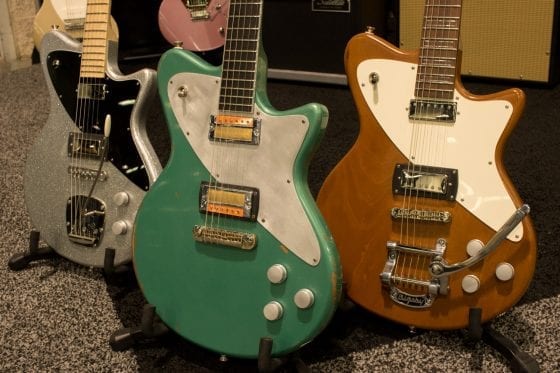 courtesy Koll Guitars
courtesy Koll GuitarsThe Super Cub — Koll Guitars
I had to stop in my tracks as I was walking past the Koll Guitars booth—these guitars are breathtakingly gorgeous. One of Portland’s many gems, Saul Koll has been making guitars for the last 30 years. His headstocks and bodies all have a signature shape, and they can accommodate many different designs. One of my favorite models was the Super Cub. There were three prototypes at NAMM of varying body woods and pickup/bridge combos—and a wild looking headstock. It’s lightweight, fun, and easy to play! —EP
SuperTone — Revelator Guitars
I hadn’t had a chance to play a SuperTone by Revelator Guitars until this year at the JHS booth, so I was really happy to finally pick one up. I really loved the classic look of this guitar, as well as its size, its ease of playability, and its Jazzmaster-style tremolo. I was also impressed by how lightweight it was. The body is more Strat size than Jazzmaster size, so you get the cool retro shape without additional weight. That’s my kind of guitar—Revelator nailed it! —EP
Bass:
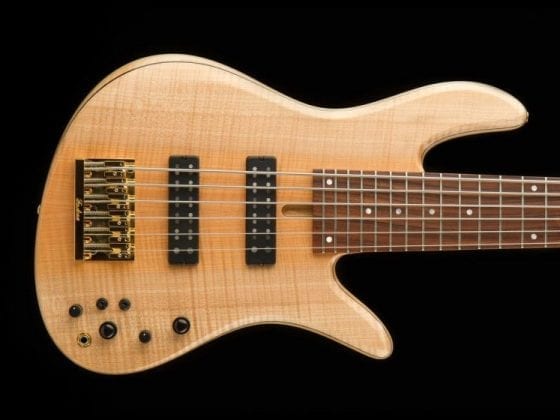 courtesy Fodera
courtesy FoderaEmperor 6 Standard bass— Fodera
If you happen to be looking for six string bass…the Emperor 6 Standard by Fodera is a great pick. This creature is made out of beautiful pale ash wood, and I’m low-key obsessed with Fodera’s butterfly logo—which is displayed here as a mother-of-pearl inlay on the headstock. Fodera intentionally made the neck on the thinner side so it’s less tricky to navigate than most six string basses. It has a three-band EQ, so tone options are plentiful. Aesthetically this wild thing is on point and is surprisingly playable. —LW